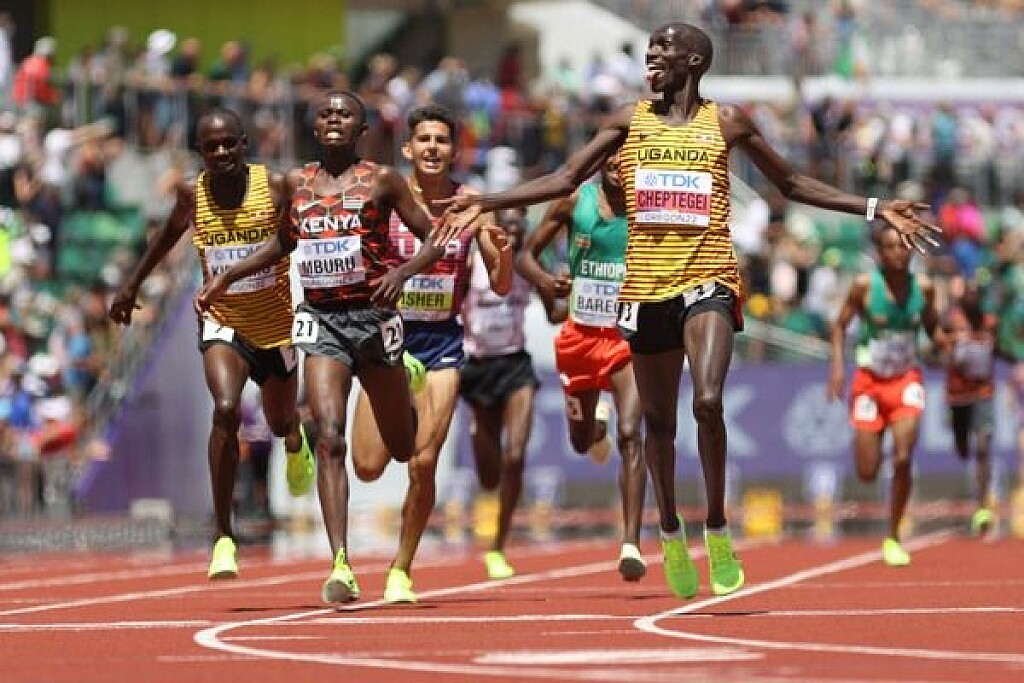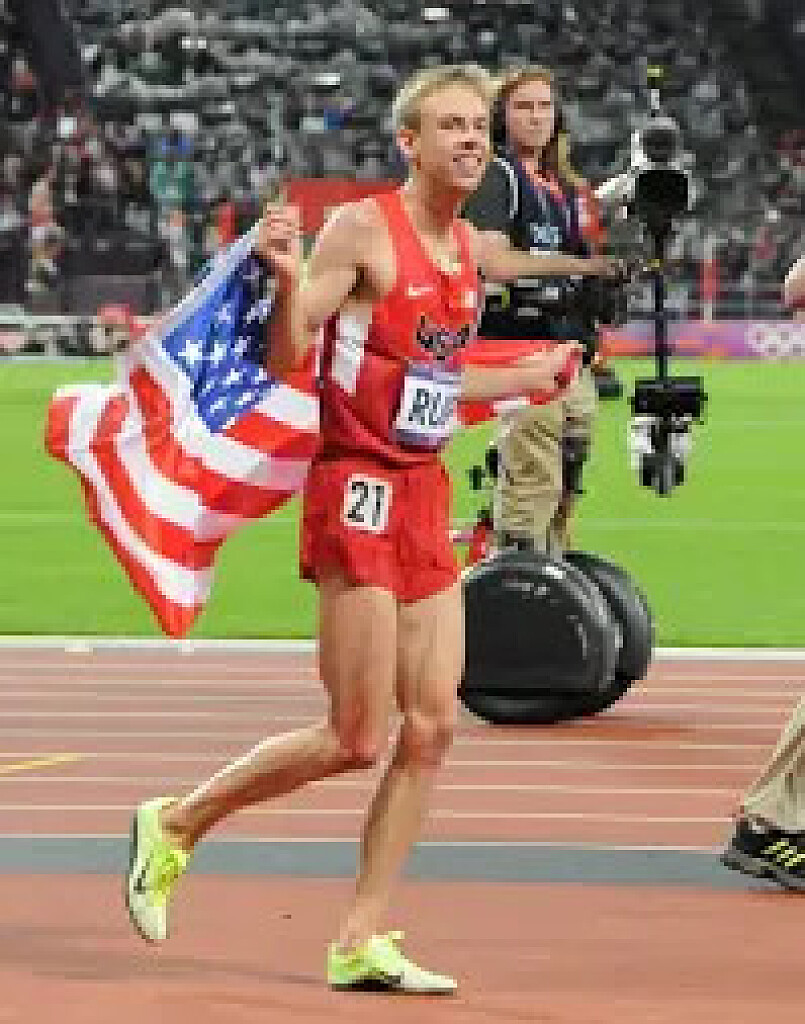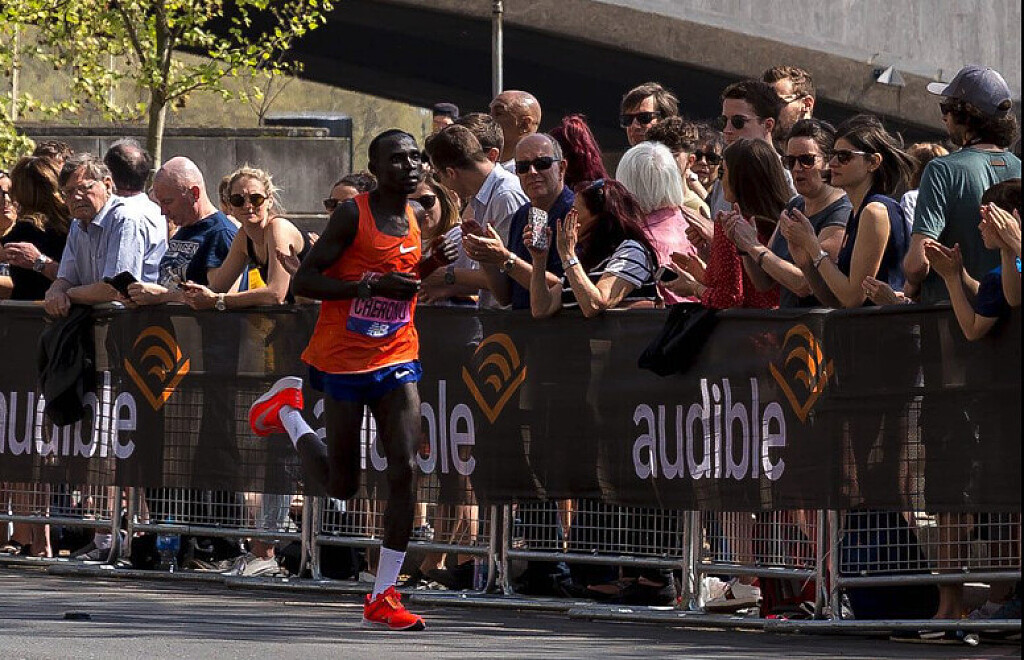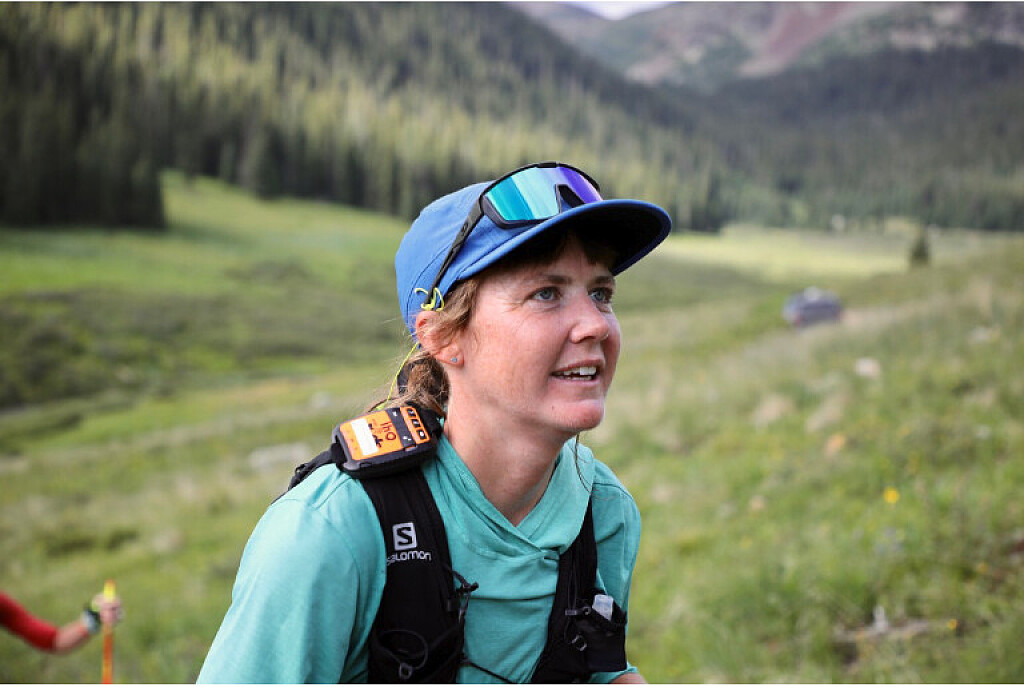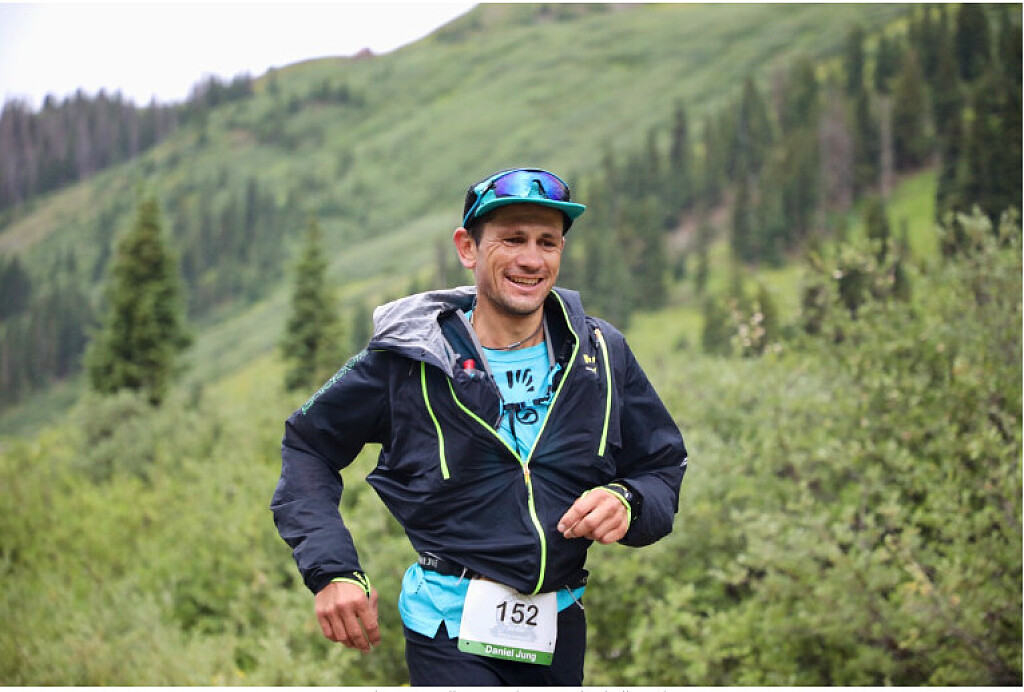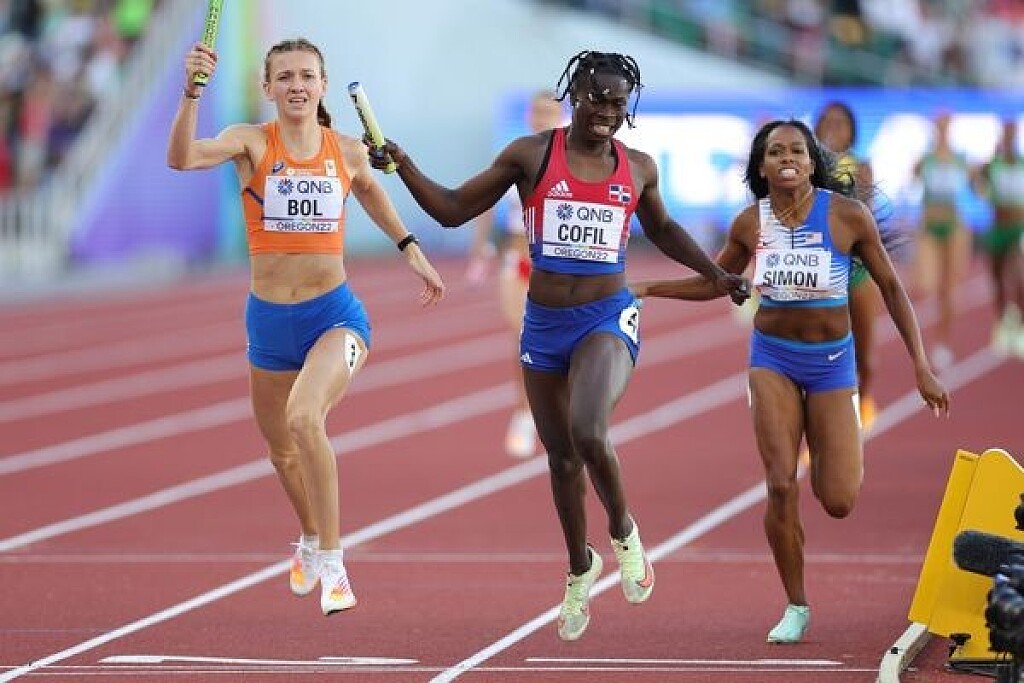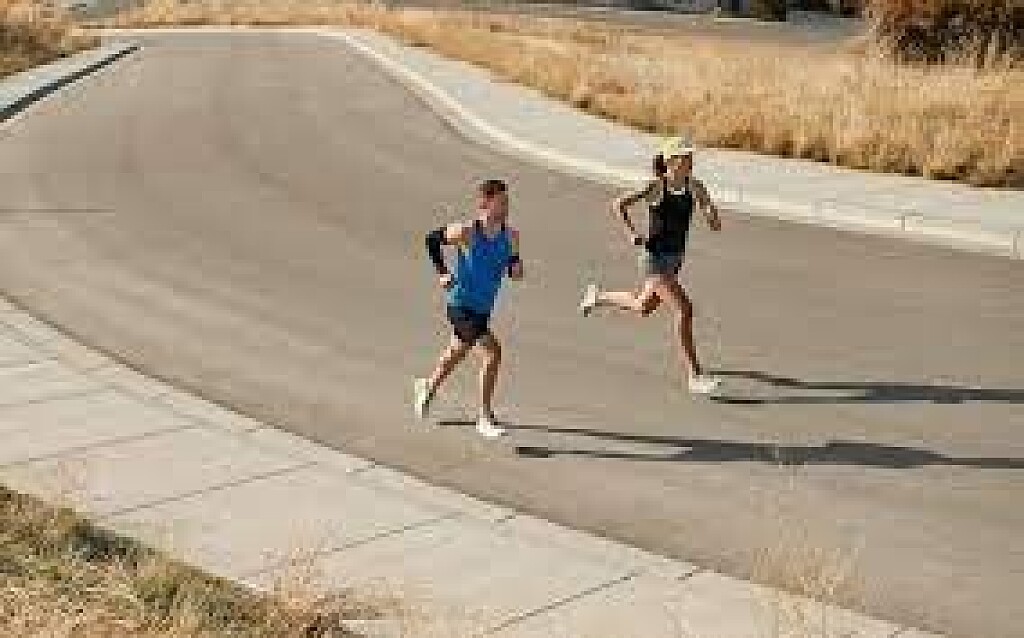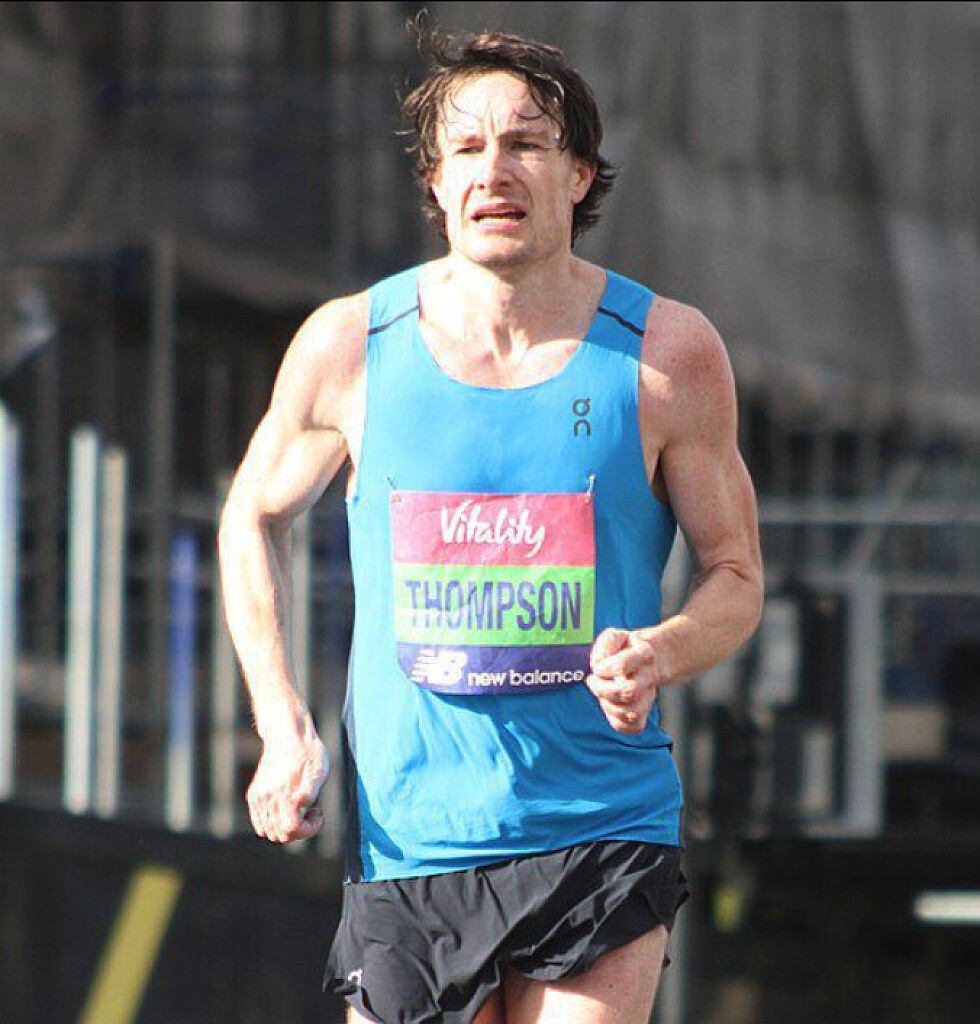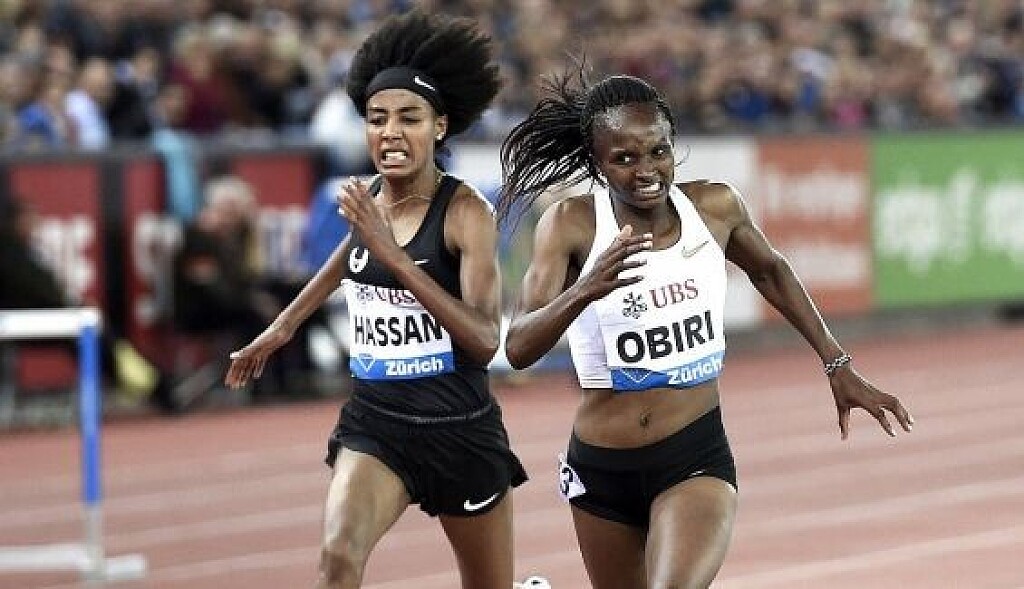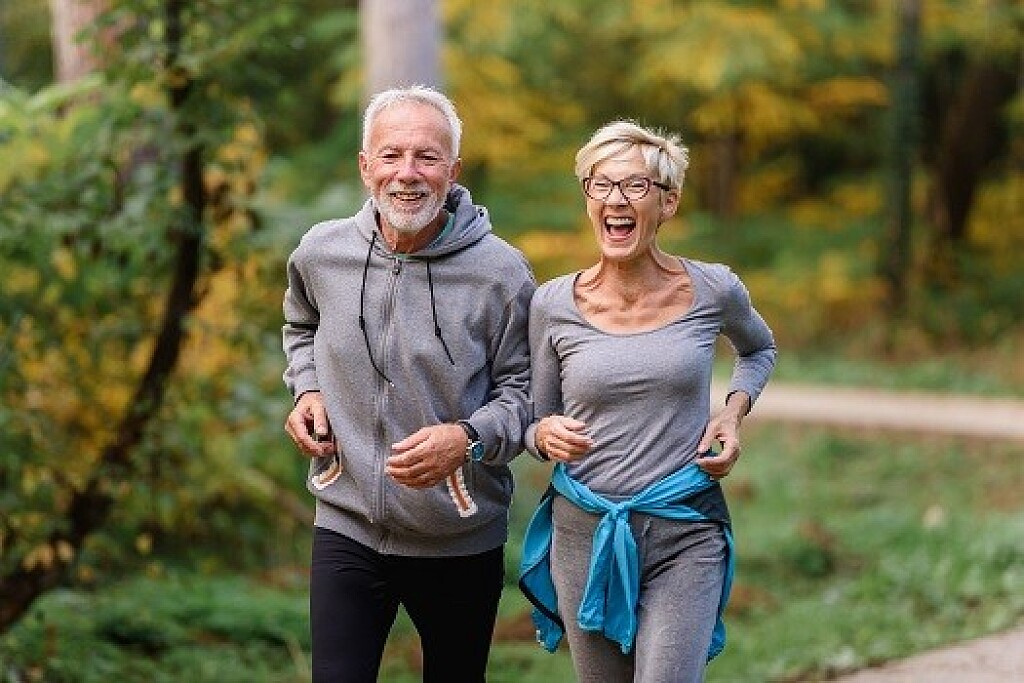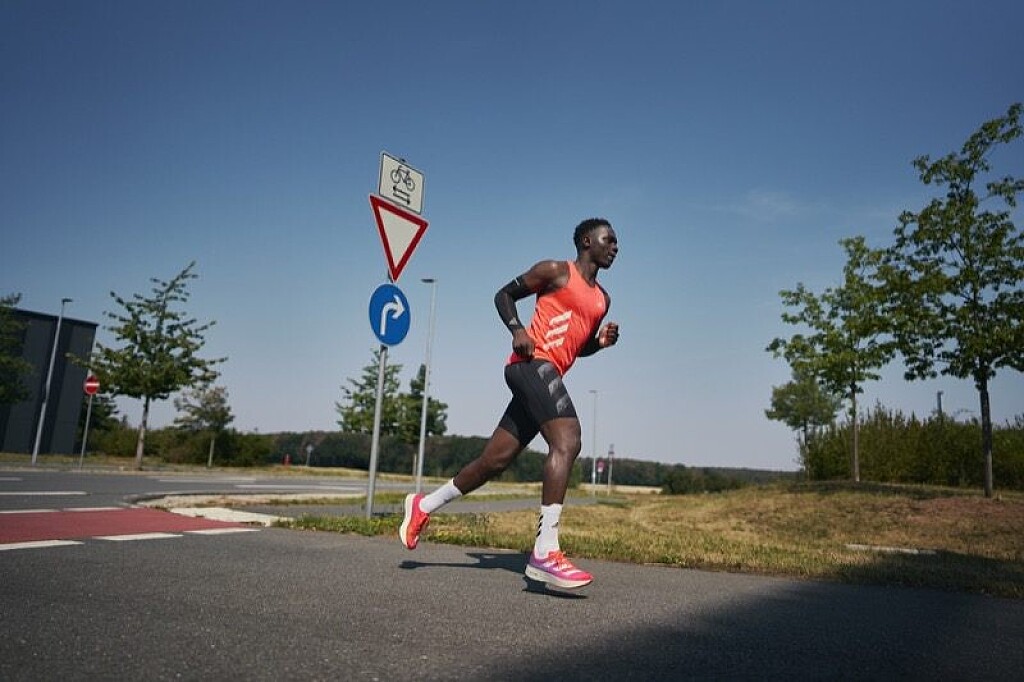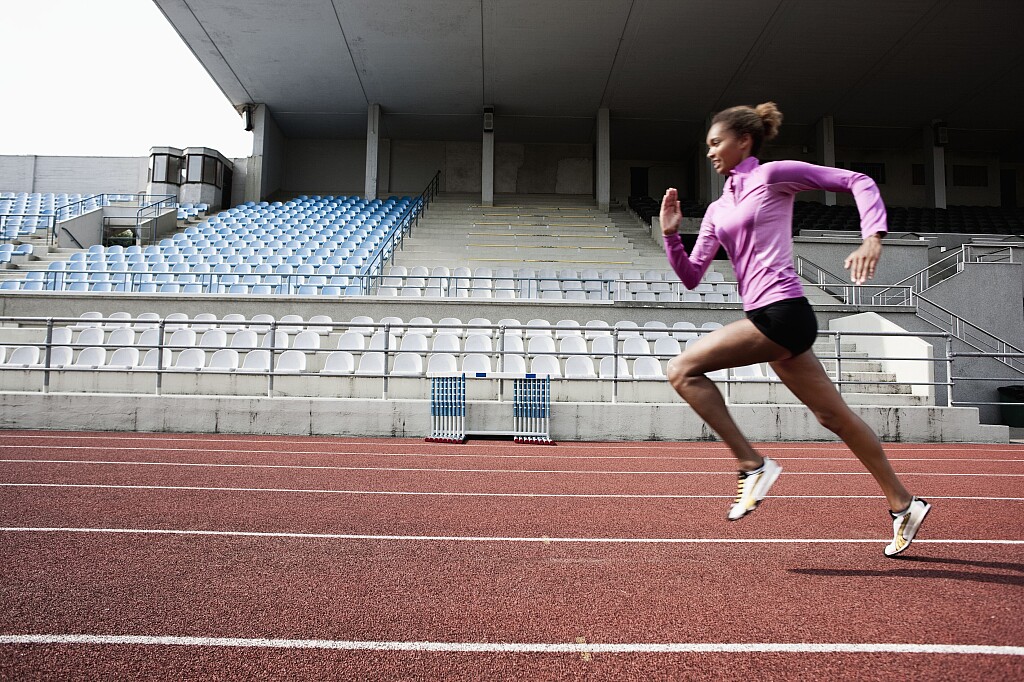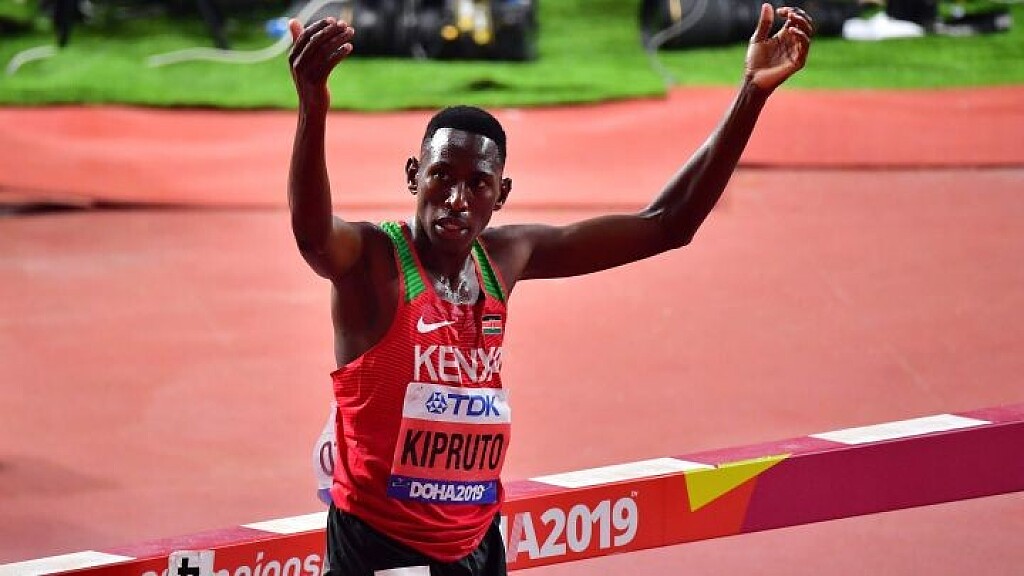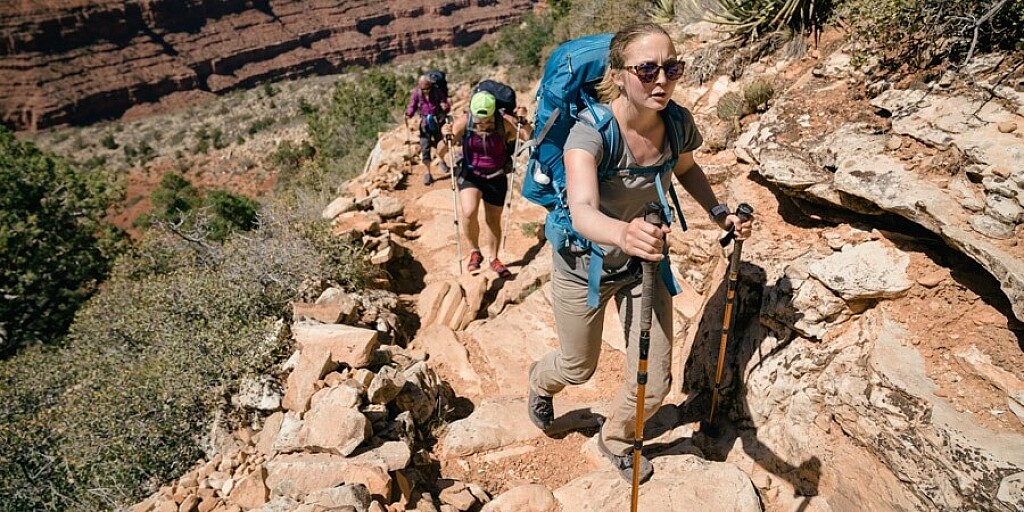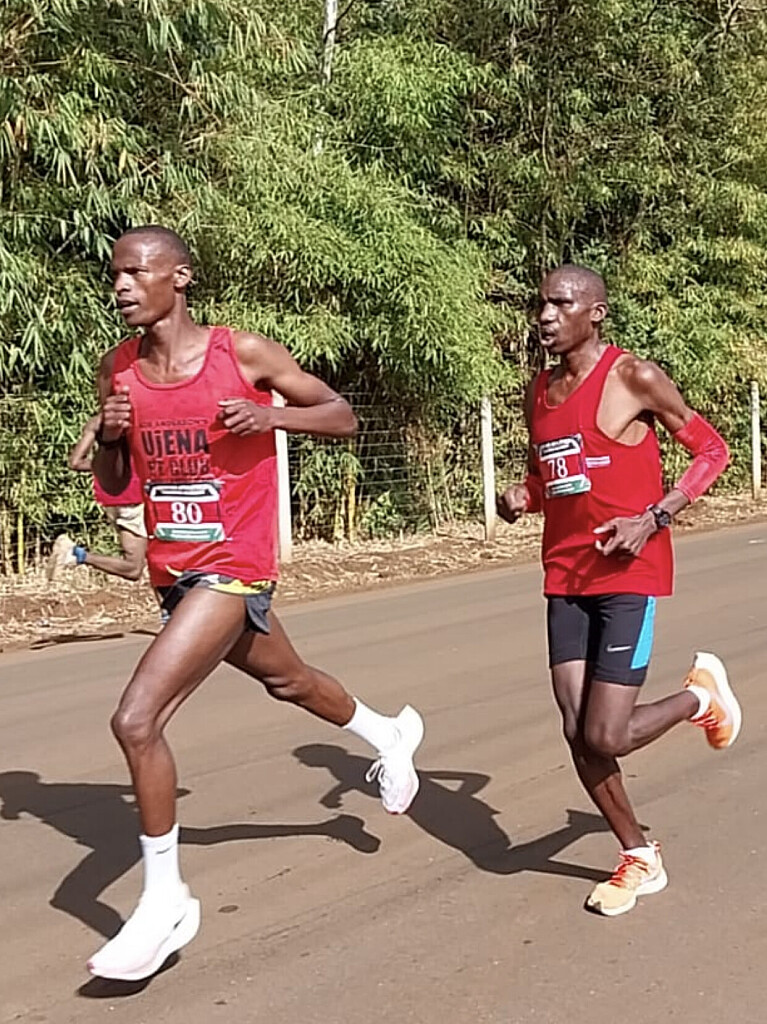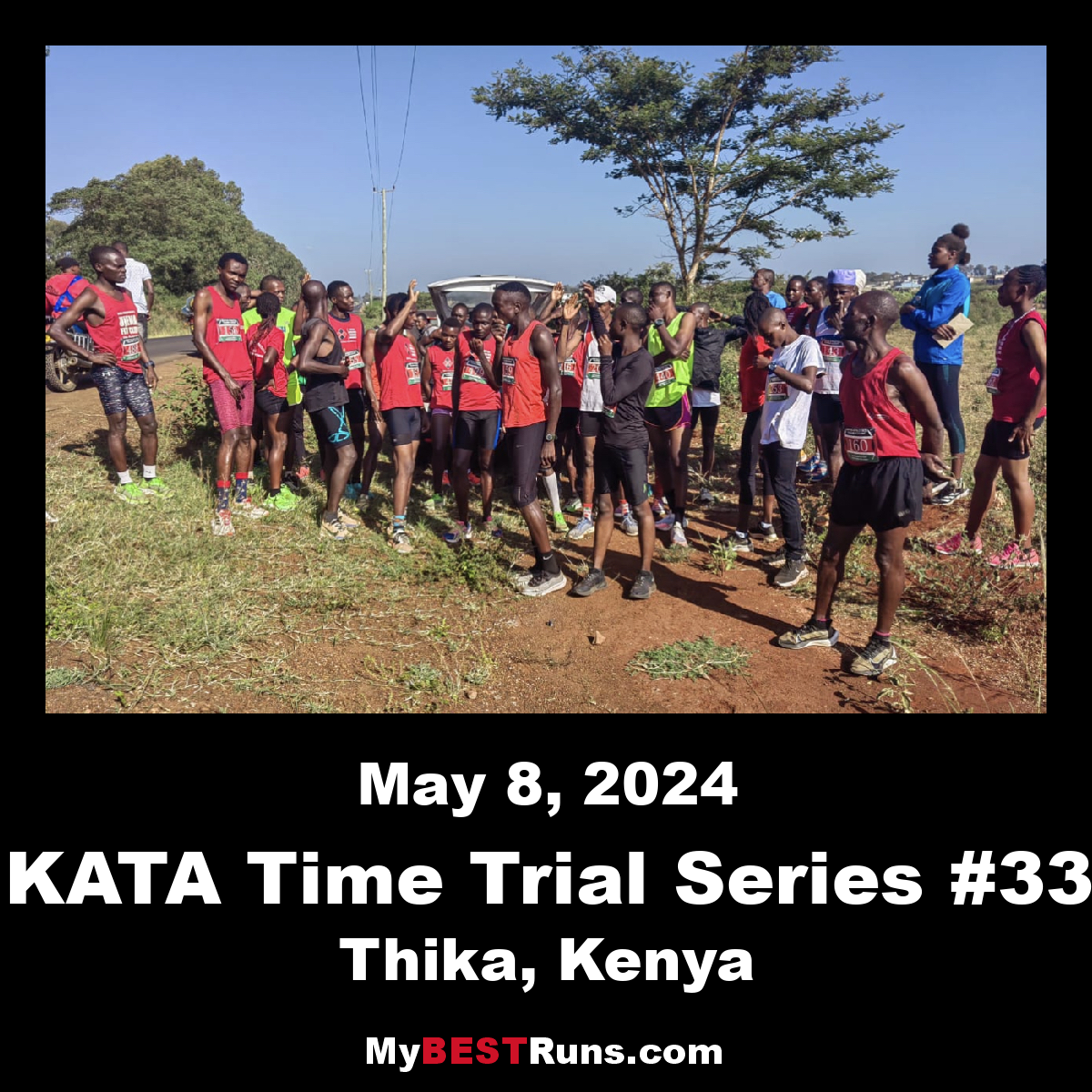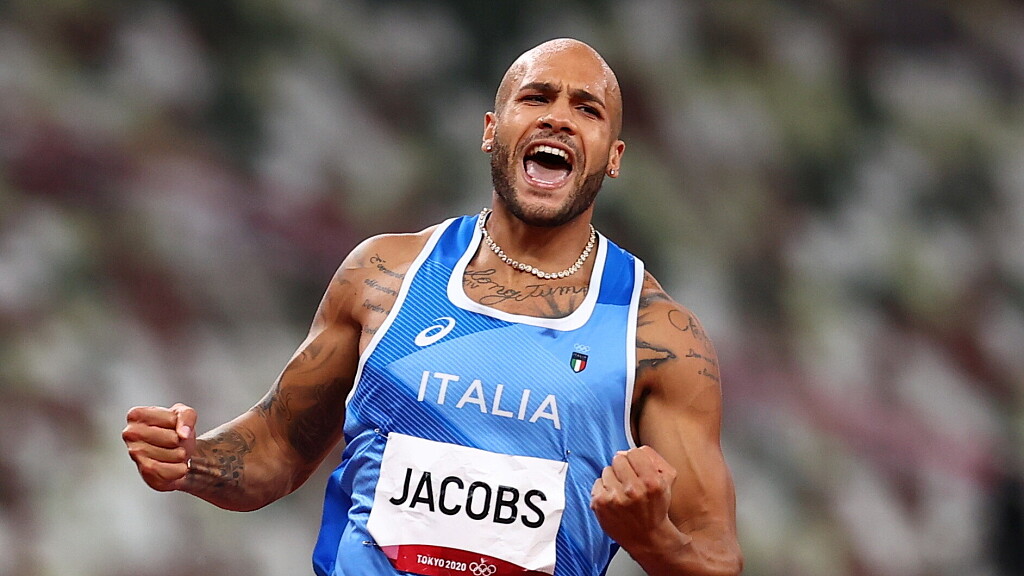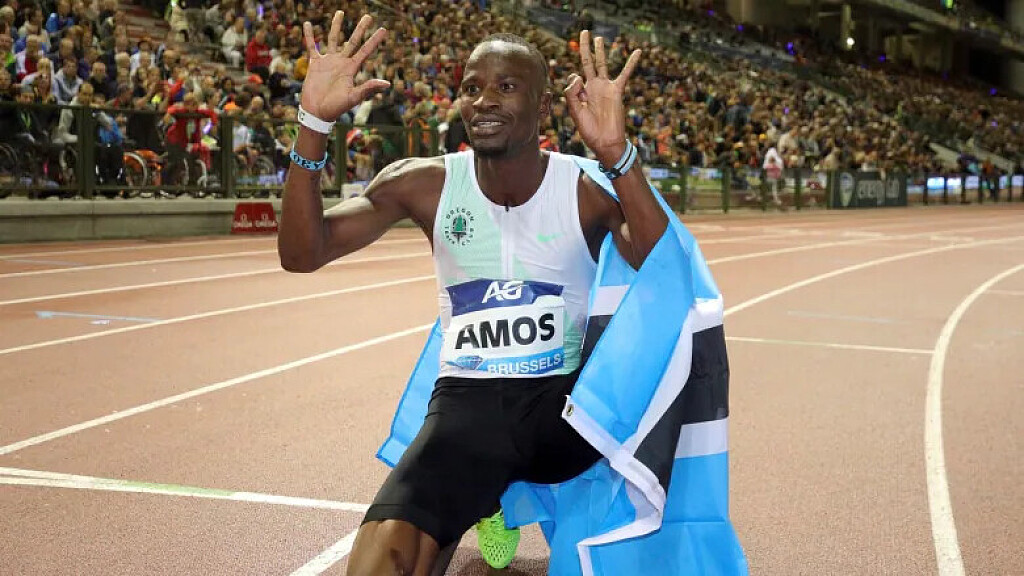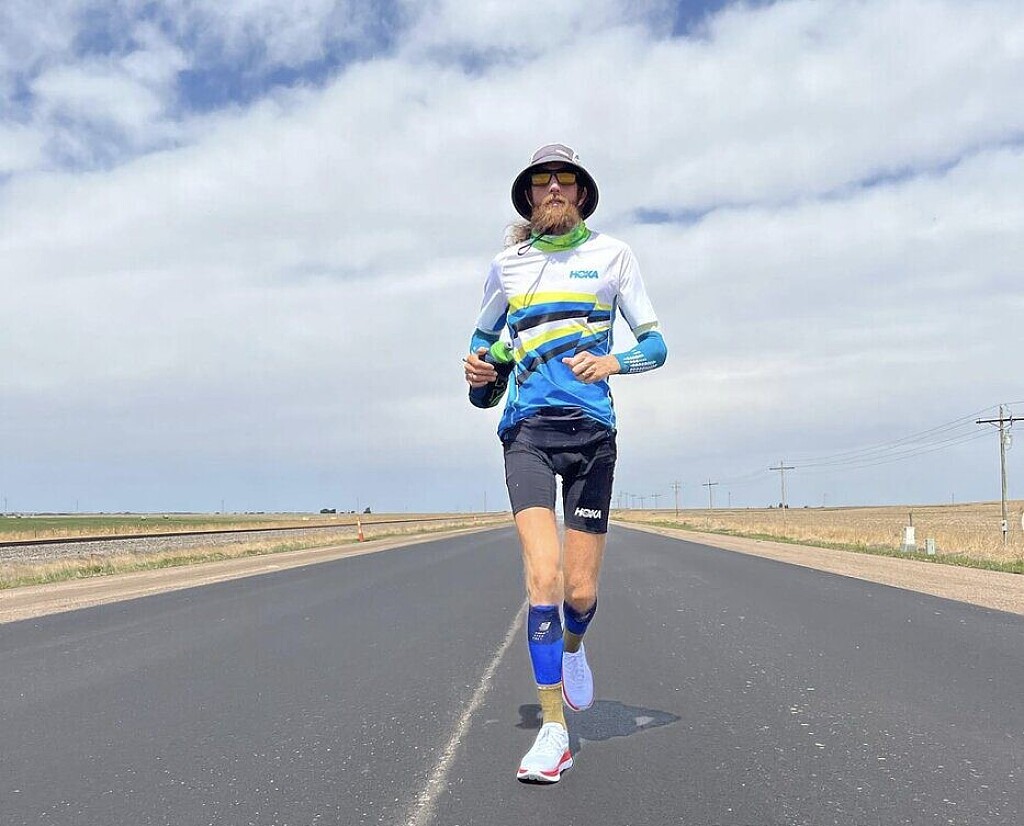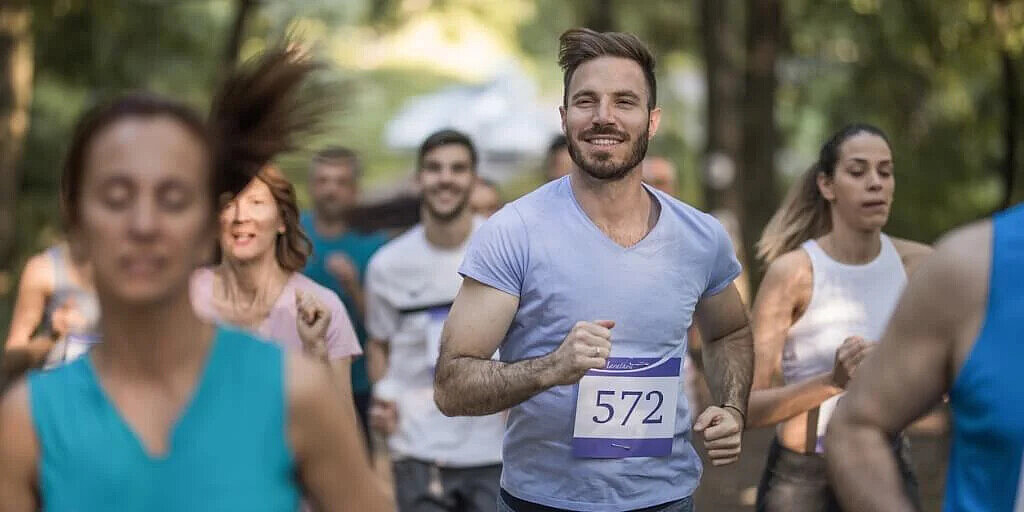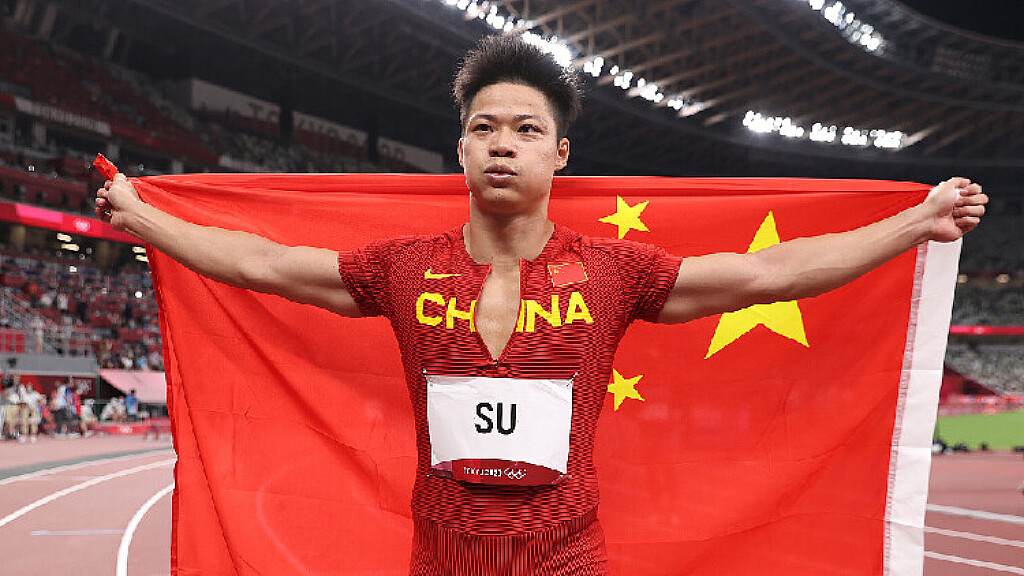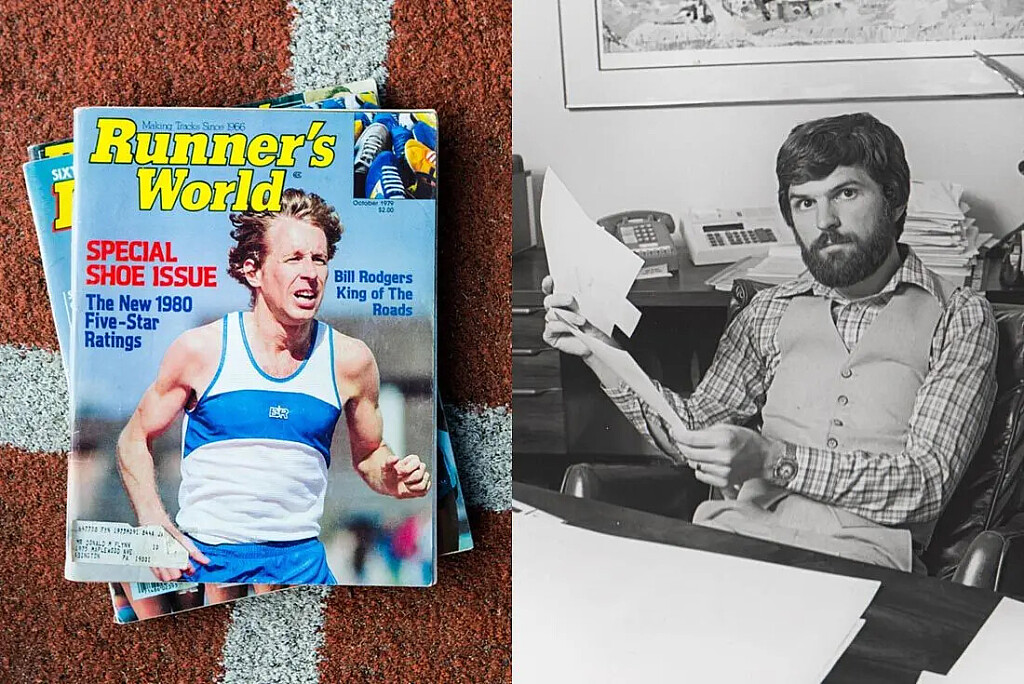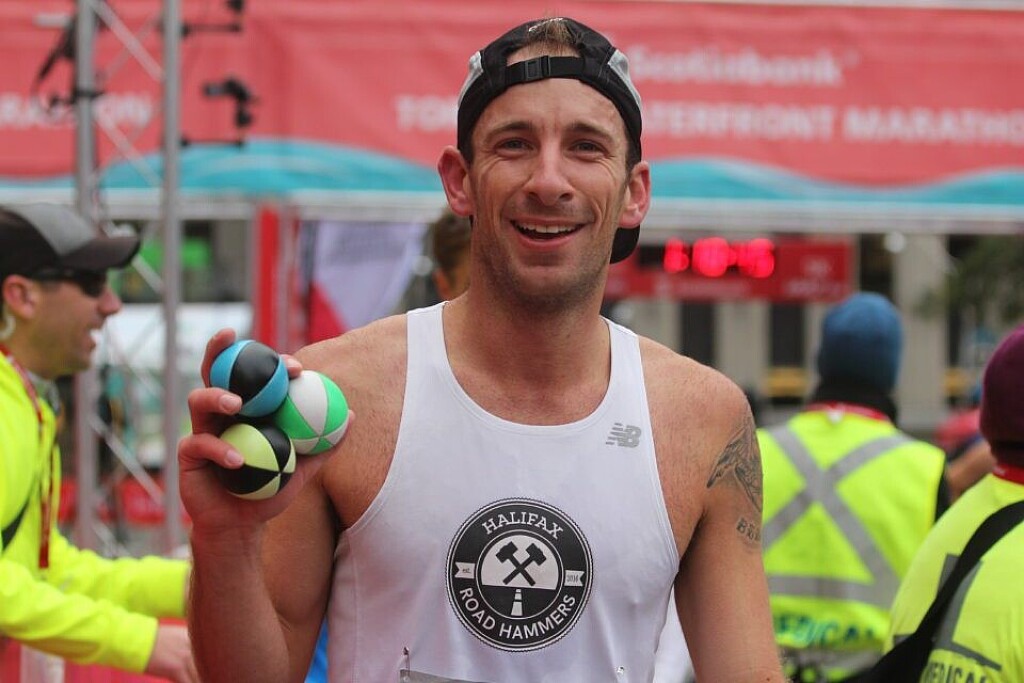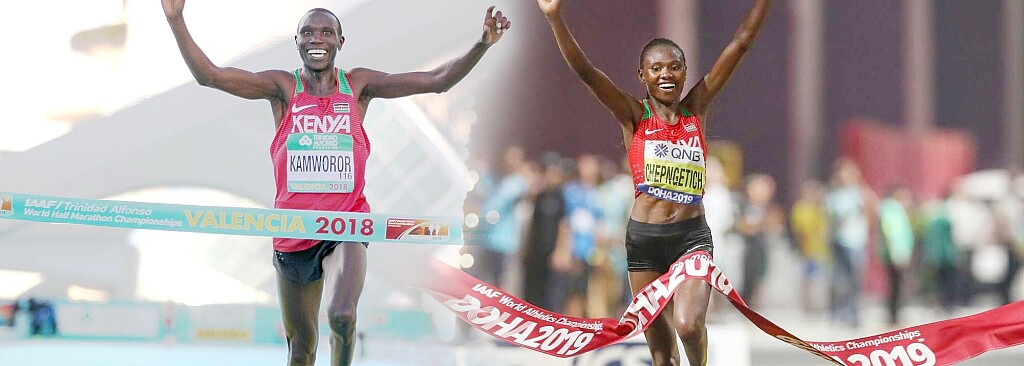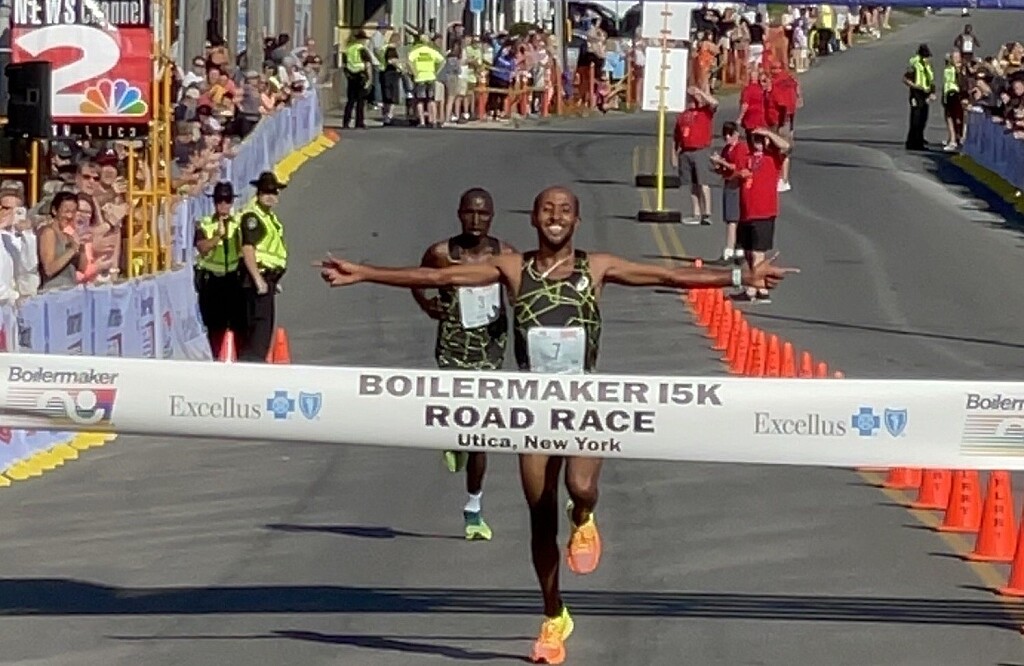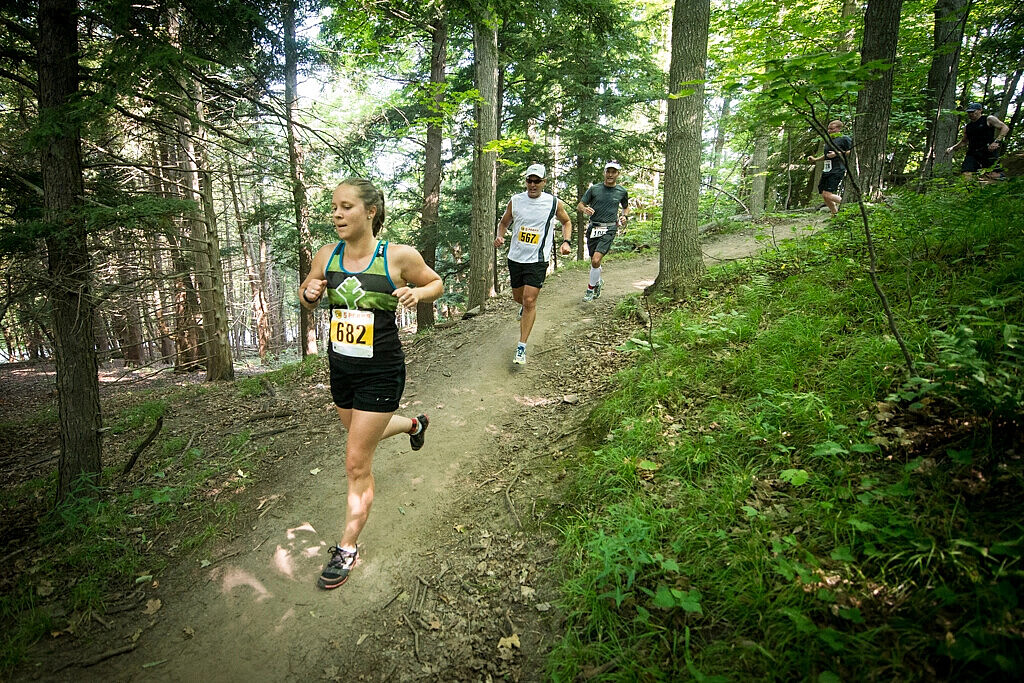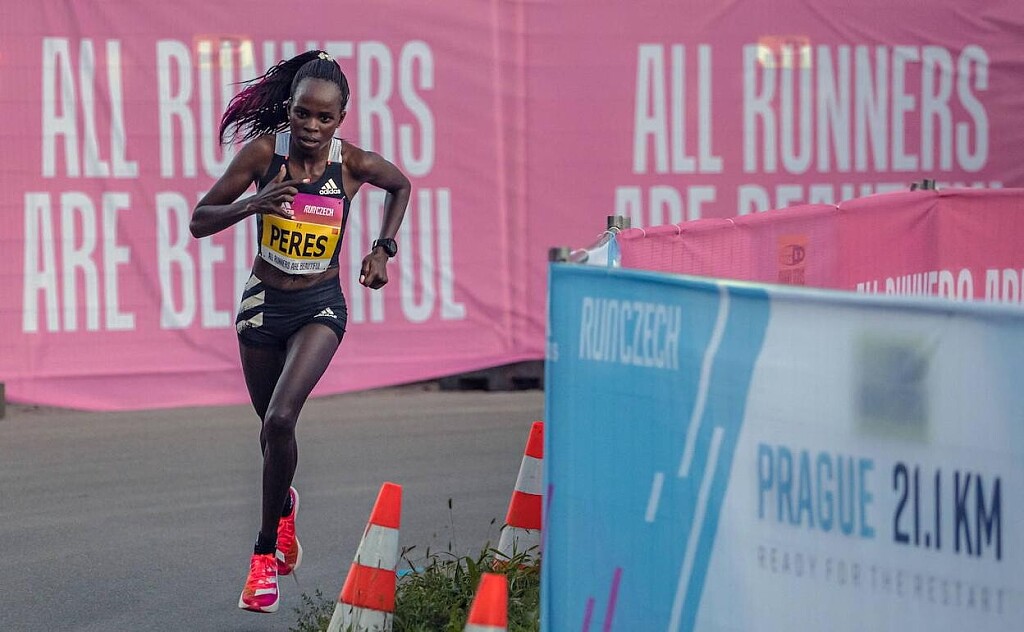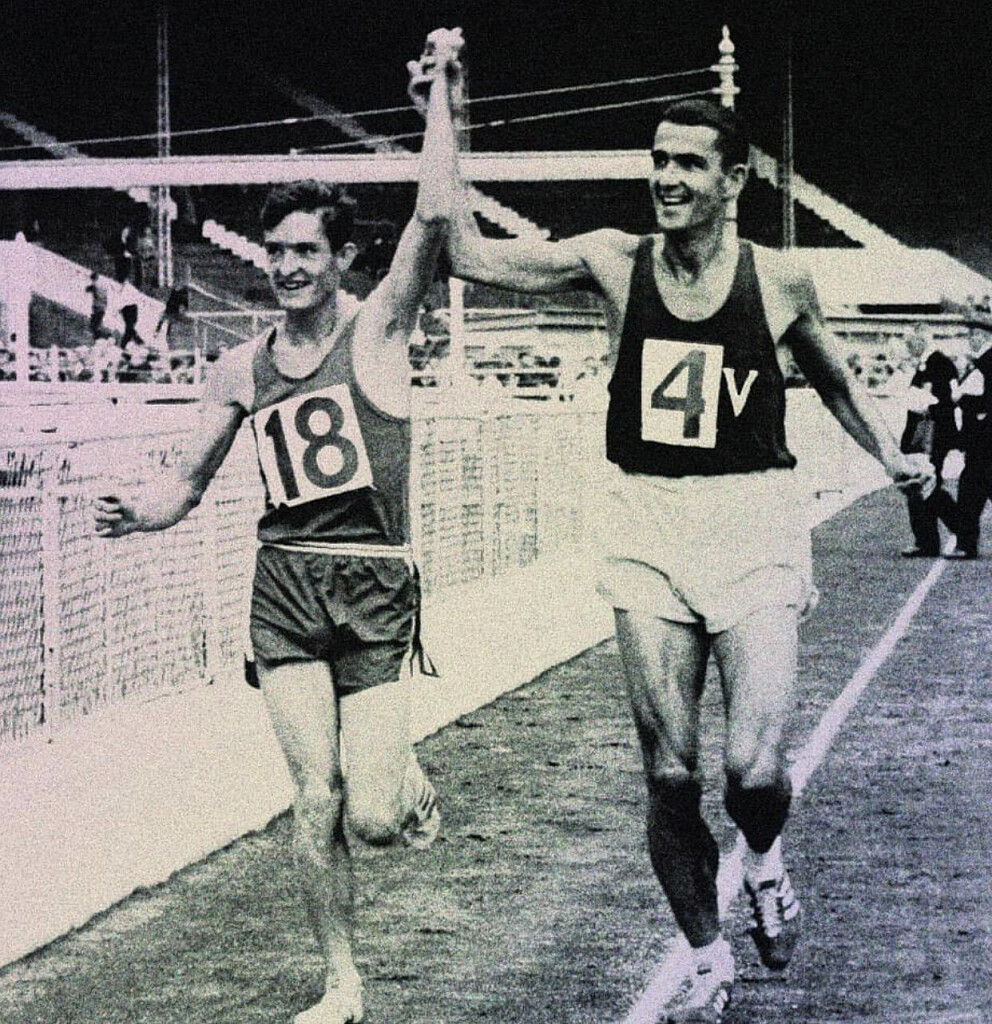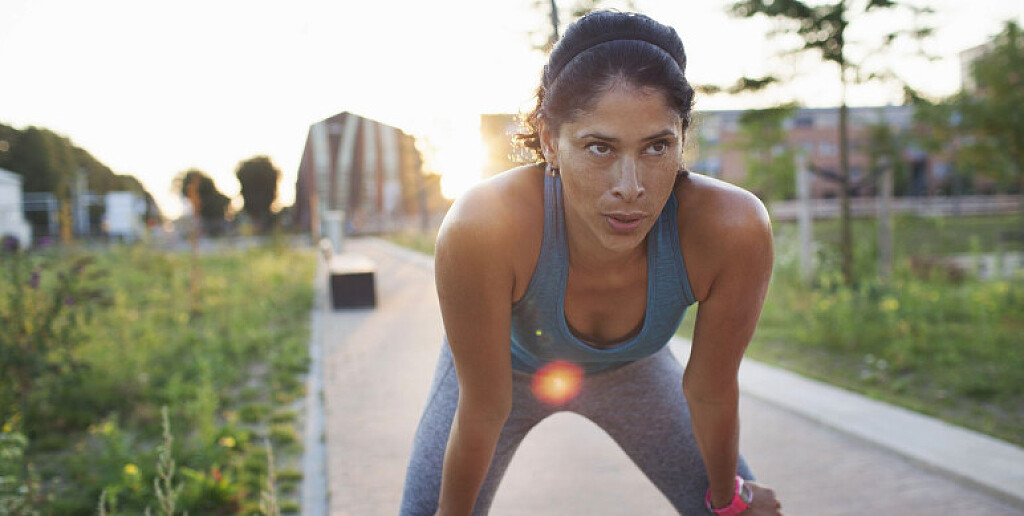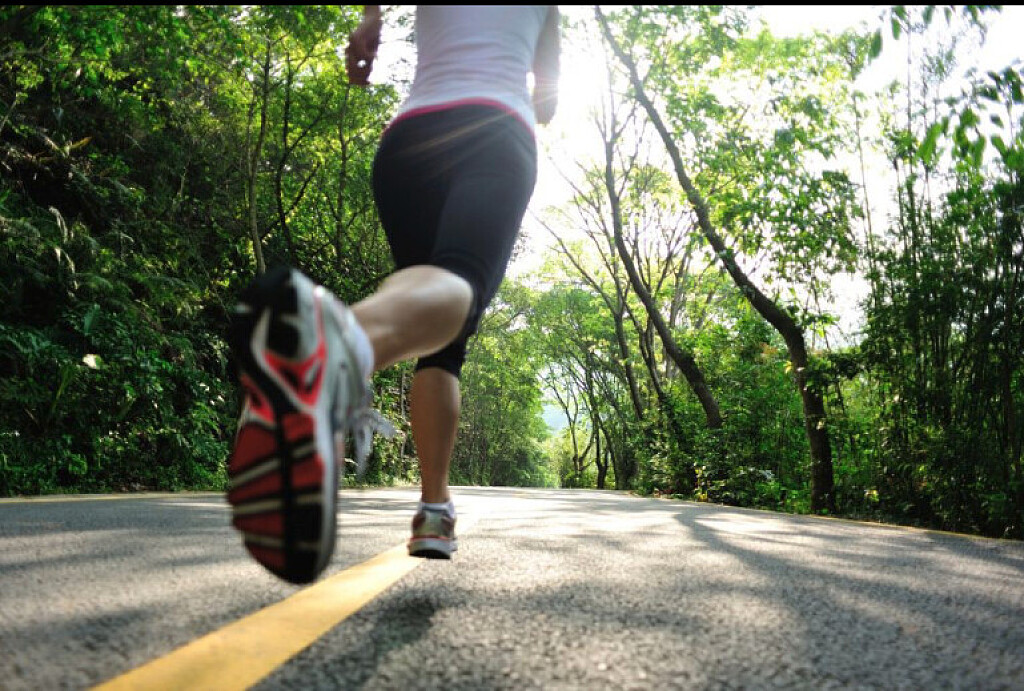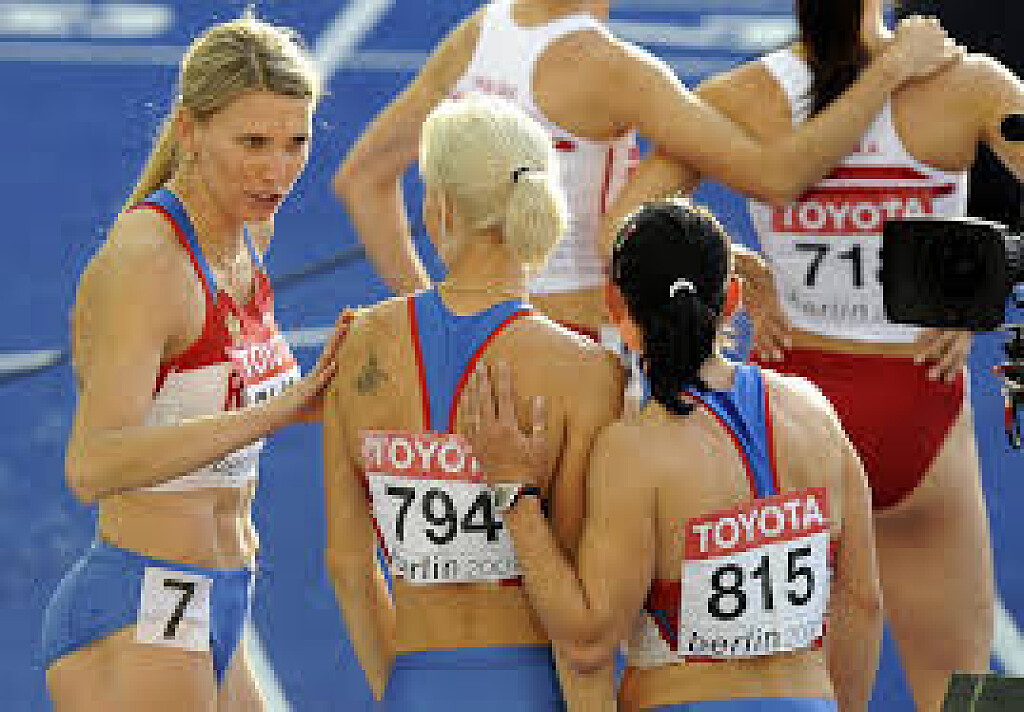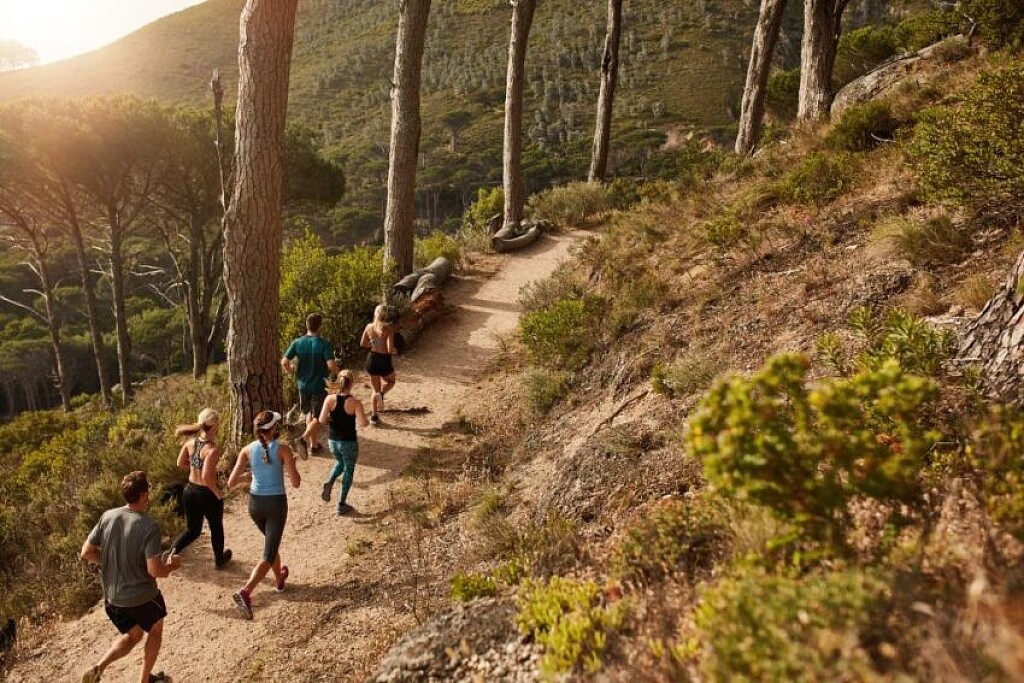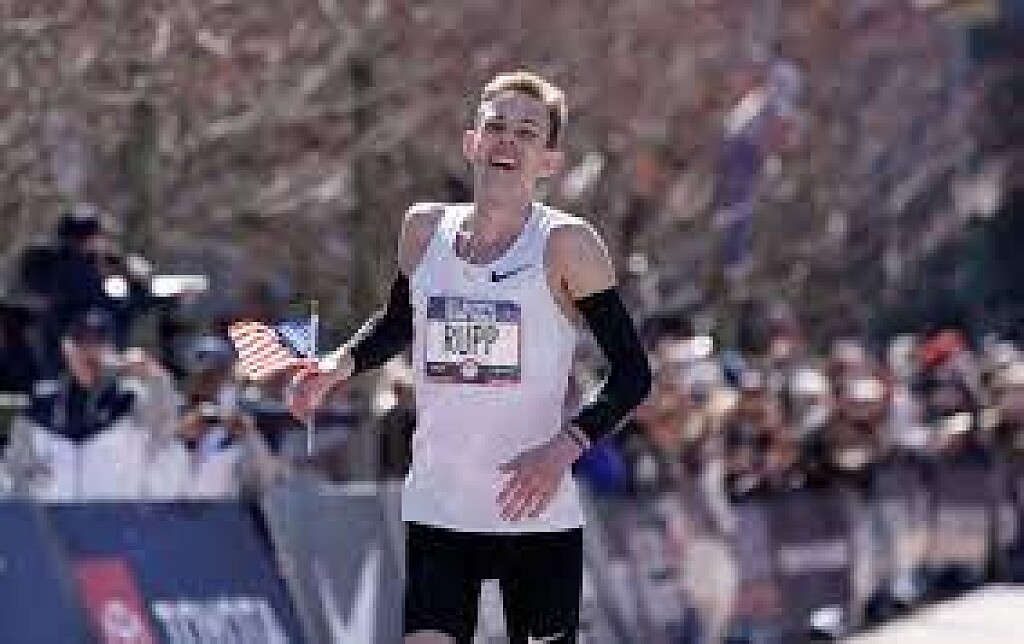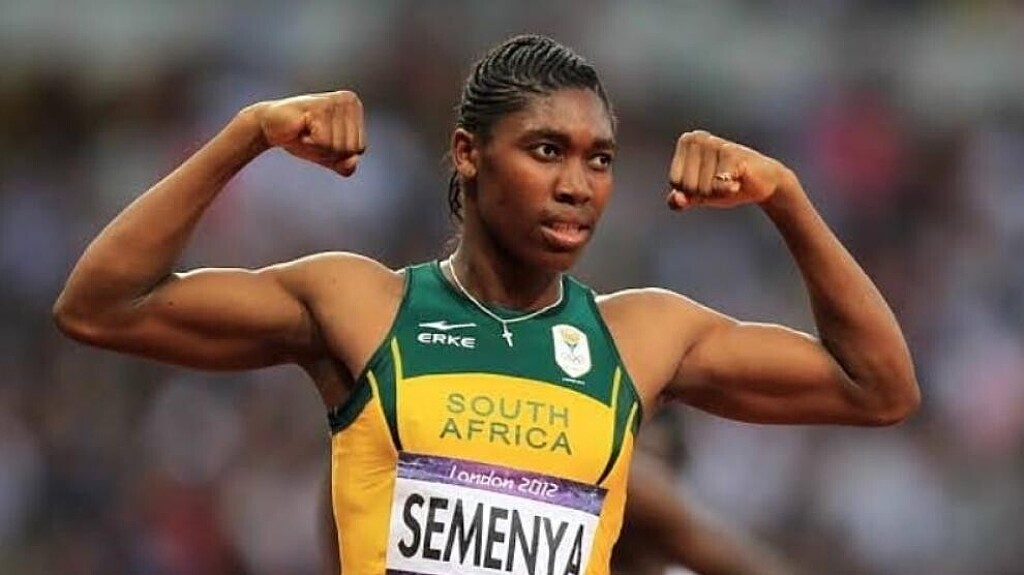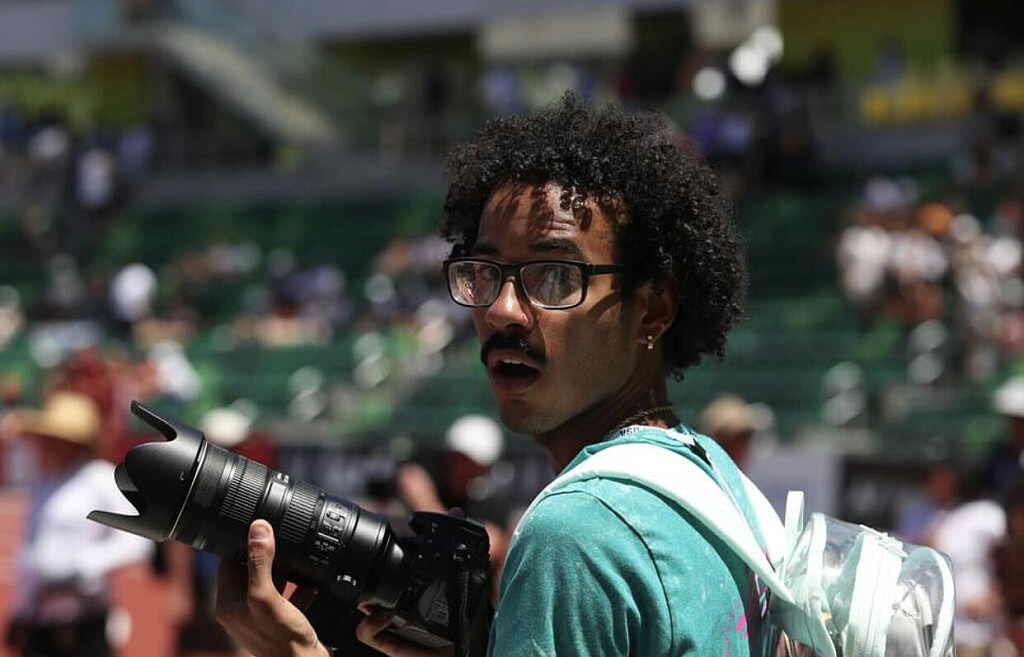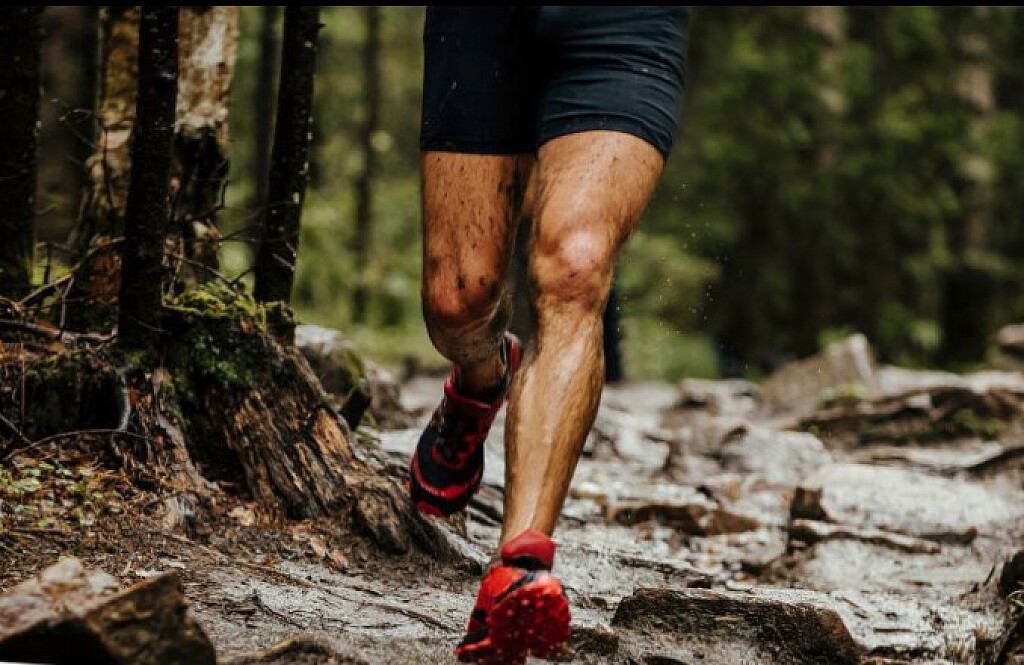Running News Daily
Running News Daily is edited by Bob Anderson. Send your news items to bob@mybestruns.com Advertising opportunities available. Train the Kenyan Way at KATA Kenya and Portugal owned and operated by Bob Anderson. Be sure to catch our movie A Long Run the movie KATA Running Camps and KATA Potato Farms - 31 now open in Kenya! https://kata.ke/
Index to Daily Posts · Sign Up For Updates · Run The World Feed
Cheptegei leaves rivals with no response to retain world 10,000m title in Oregon
Just like the Olympic final in Tokyo, there was a mass queue of runners still in contention as the bell sounded in the men’s 10,000m final at the World Athletics Championships Oregon22.
On that occasion there were seven men remaining in the hunt for gold. This time there were eight.
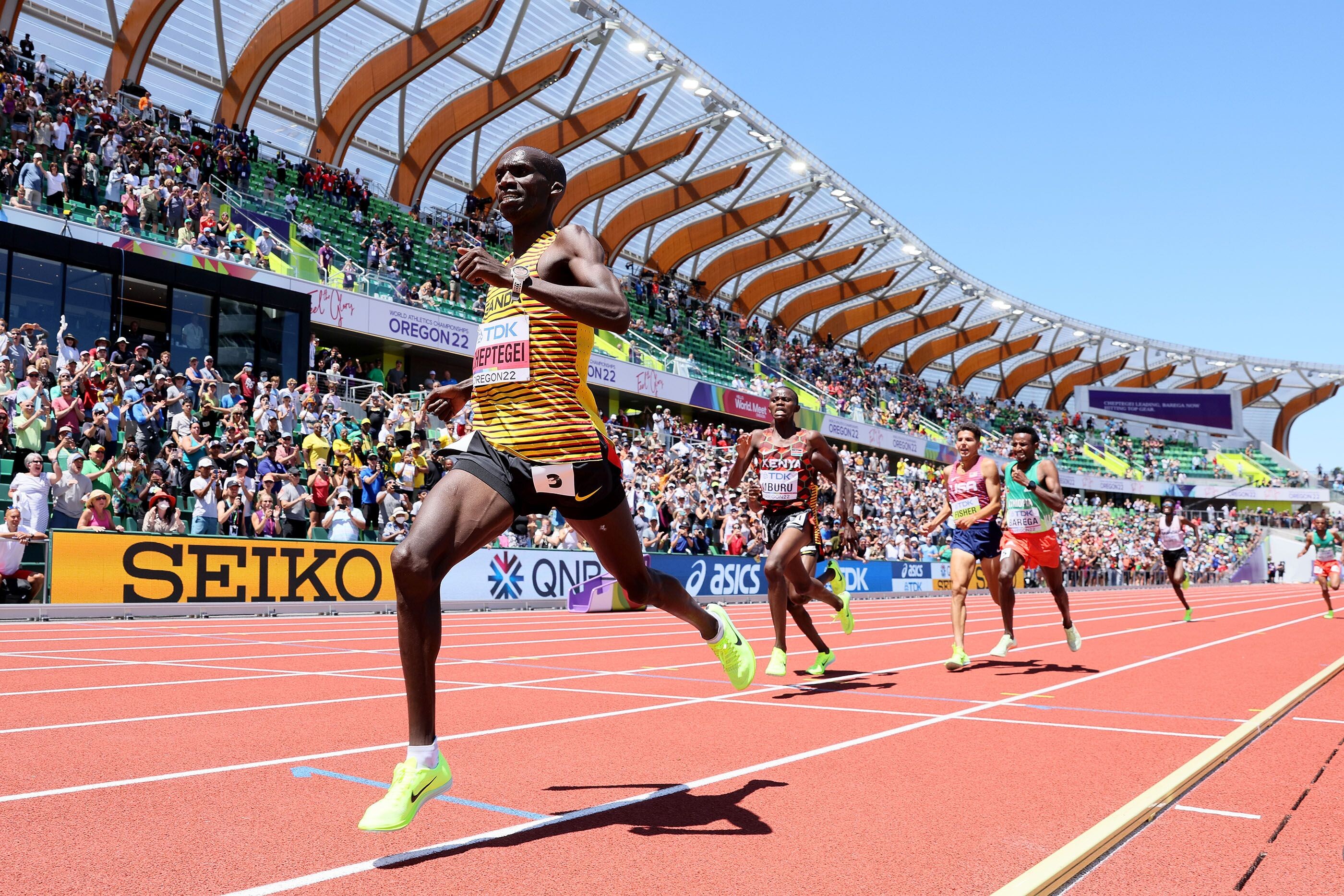
There was another subtle difference as the 25-lap event built up to just as thrilling a crescendo as the women’s final the previous day.
In Tokyo the slender Ethiopian Selemon Barega refused to budge from the front, keeping ahead of Uganda’s Joshua Cheptegei with a 53.9 final lap.
In Eugene, having controlled most of the race from halfway, Cheptegei hit the front again at the sound of the bell and stayed there. The fastest man in history at 5000m and 10,000m was not going to relinquish the title he toiled to gain in Doha three years ago.
Barega moved on to his shoulder down the back straight and looked set to pounce with 200m to go, but as Cheptegei led round the final bend and into the finishing stretch the world indoor 3000m champion had nothing in the tank.
Like Sifan Hassan in the women’s final, Barega faded out of the medals. Like Barega’s compatriot Letesenbet Gidey, Cheptegei gritted his teeth and kept his feet on the gas. The 25-year-old could afford to open his arms in celebration as he crossed the line 0.47 clear of his closest pursuer in 27:27.43.
In doing so, Cheptegei became only the fourth man to win back to back 10,000m world titles, following in the footsteps of Ethiopians Haile Gebrselassie and Kenenisa Bekele and Britain’s Mo Farah. His final lap was faster than Barega’s in Tokyo: 53.42.
"I knew that if I could get into the last fight, I could control it and I could speed it up," said Cheptegei, who won the world U20 title back at Hayward Field eight years ago. "It was very emotional for me to come back to the USA where I started my international career in 2014. Now, I want to continue my dominance in long distance running and I hope I will manage it."
The surprise silver medal winner, in 27:27.90, was Stanley Mburu. The world U20 silver medallist at 5000m in 2018, the 22-year-old Kenyan had quickly regained his composure after falling on the opening lap.
As in the Olympic final, Jacob Kiplimo took the bronze medal, Cheptegei’s compatriot clocking 27:27.97 to resist the challenge of home favourite Grant Fisher. The spirited US challenger had to settle for fourth in 27: 28.14, with Barega fifth in 27:28.39.
There were Ugandan flags fluttering in the stands as the 24 runners took their place on the start line, the loudest cheer coming for Fisher, who settled into second as Spain’s Carlos Mayo led through 400m in 66.70.
Mayo remained in front through 800m in 2:12.72, 1km in 2:46 and 2km in 5:51, with Fisher maintaining in second spot and Cheptegei keeping a watching brief on proceedings in third.
After Mayo passed 3km in 8:20.08, Cheptegei’s teammate Stephen Kissa took over at the front but without upping the pace.
Indeed, the speed slowed to 2:51 for the fourth kilometre, prompting Barega to show his face at the front for the first time with 13 laps to go, reaching halfway in 14.01.32.
Kiplimo was first to make a notable injection of pace, stretching out the field with a 64.46 lap. When Cheptegei moved through on to his compatriot’s heels, Barega was alert to the potential threat, surging back up into third.
Cheptegei then took over at the front but slowed the pace to steady laps of 67 seconds. All the while, Barega breezed along, eyes fixed on the target on Cheptegei’s back as 15 men remained in contention.
With two laps to go, Mburu made the long run for home but at the bell there were still eight contenders. It was then, after a fleeing appearance at the front by Barega’s teammate Berihu Aregawi, that Cheptegei regained control – this time for good.
(07/17/2022) ⚡AMPby World Athletics
World Athletics Championships Budapest23
Budapest is a true capital of sports, which is one of the reasons why the World Athletics Championships Budapest 2023 is in the right place here. Here are some of the most important world athletics events and venues where we have witnessed moments of sporting history. Throughout the 125-year history of Hungarian athletics, the country and Budapest have hosted numerous...
more...Two-Time Olympic Medalist Galen Rupp Takes on the World on Home Ground
The best U.S. male marathoner takes on the world at home; also, men’s 10K and women’s 100 finals.
Day 3 of the track and field world championships starts early and ends late, with must-watch races (men’s marathon and women’s 100-meter final) bookending the action.
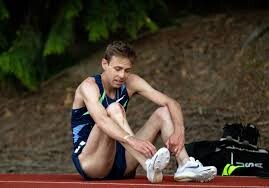
But you also won’t want to drift away midday; otherwise, you’ll miss the always-exciting men’s 10,000-meter final. (Fingers crossed it matches the excitement of the women’s final on Saturday.) There are also lots of key qualifying races for finals later in the week.
Here’s a quick guide to the day’s key events
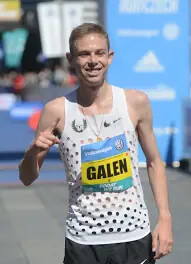
Imagine that you’re one of the best marathoners in U.S. history, and that the world championship course will run through your college town. You’d be pretty psyched, right?
That’s the situation on Sunday for University of Oregon alum and two-time Olympic medalist Galen Rupp. His buildup for this once-in-a-lifetime race has been far from ideal—he dropped out of his most recent race, the New York City Half in March, because of a herniated disc, and he had COVID in June. Nonetheless, the second fastest American in history told us earlier this month that he’s confident about his fitness and will, as per usual, fight for the win or podium as long as possible.
He’ll need confidence, fitness, and a little luck to meet that goal. Among his competitors: two-time NYC Marathon champ Geoffrey Kamworor of Kenya; the reigning Olympic silver and bronze medalists (training partners Abdi Nagayee of the Netherlands and Basher Abdi of Belgium); defending world champ Lelisa Desisa of Ethiopia; and Desisa’s compatriots Mosinet Geremew (second at 2019 worlds and holder of the best PR in the field) and Seifu Tura (who relegated Rupp to second at Chicago last October).
And those are just the biggest of the big names. Still, a Rupp podium appearance is possible. He and the rest of the field got a prerace bit of luck when 2019 Boston winner Lawrence Cherono of Kenya received a provisional doping suspension on Saturday. Also, world championship marathons tend to have a lot of dropouts. If a top-tier marathoner is having a bad day, it can be tempting to cut one’s losses and aim for one of the lucrative fall marathons. (Prize money for all events at worlds is paid eight deep, with $70,000 for first and $5,000 for eighth, but there are no appearance fees.) The Eugene course is a good one for this sort of DNF. It’s three 14K loops, so quitting after two circuits gets you a hard run but one that’s easy to rebound from.
T he course is also flat, and the weather is forecast to be favorable (temperatures in the 50s, with mild humidity). Times could be fast. Unlike in hotter summer global marathon championships, there should be less incentive for the top contenders to dawdle and thereby open opportunities for slower entrants.
The U.S. squad is rounded out by Army First Lieutenant Elkanah Kibet and financial analyst Colin Mickow, who both train around demanding professional responsibilities. Especially at the first world championships on U.S. soil, they, like Rupp, will be highly motivated to leave it all out on the streets of Eugene.
(07/17/2022) ⚡AMPby Runner’s World
Lawrence Cherono of Kenya suspended after testing positive for trimetazidine
The seventh-fastest marathoner of all time, Kenya’s Lawrence Cherono, who was one of the favourites to win the marathon at the 2022 World Championships, has been provisionally suspended on the day before the race after testing positive for a banned substance. Cherono tested positive for the banned substance trimetazidine, which is used to treat chest pain resulting from a lack of blood supply and oxygen to the heart. The Athletics Integrity Unit (AIU) said in a press release that there were delays in the processing of his test sample, which was taken on May 23. The delay made it impossible for another athlete to take his spot on Team Kenya.The drug trimetazidine helps metabolize fatty acids, which helps your body use oxygen, allowing for more blood flow to your heart and limits quick changes in your blood pressure.The 33-year-old Kenyan finished fourth at the Tokyo Olympics and won both Boston and the Chicago Marathon in 2019. Cherono has a personal best time of 2:03:04 from the 2020 Valencia Marathon, where he finished second.Back-to-back NCAA champion and U.S. 400m Olympian Randolph Ross was also kicked out from the World Athletics Championships on the day before his race for tampering with the antidoping process after an unsuccessful testing attempt on June 18.
The AIU announced on Saturday that Ross will be provisionally suspended a month after officials failed to locate him to take an anti-doping test. Ross won the Olympic gold with the U.S. 4x400m relay team in Tokyo.According to the AIU, athletes must give anti-doping authorities detailed lists of where they’ll be so testers can reach them without notice to collect samples when the athletes are not competing. In some cases, three missed tries can result in an anti-doping violation. AIU did not release the specifics of Ross’ case, other than to say that “the allegation arises out of the athlete’s conduct during an investigation into a potential whereabouts violation.”
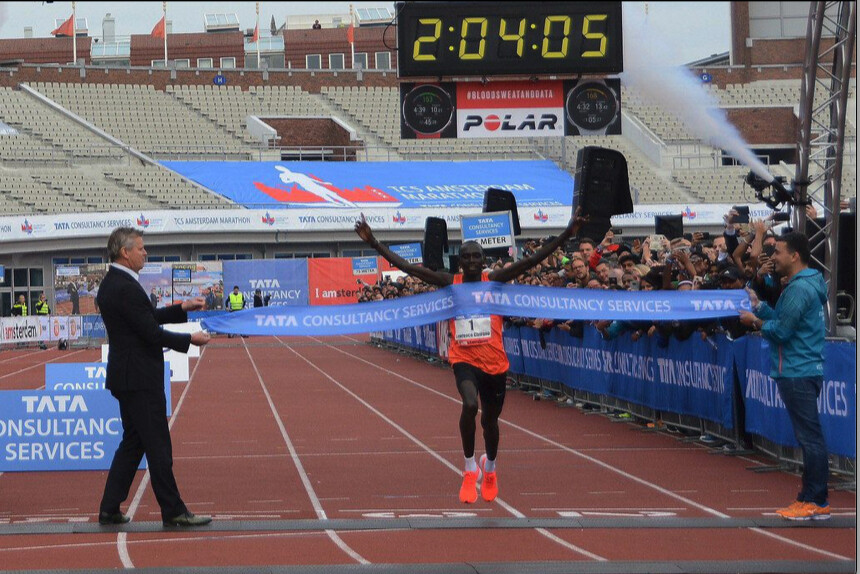
The 2022 World Athletics Championships are taking place from July 15-25 from Hayward Field in Eugene, Ore. All the action will be brought to you by Canadian Running and Asics Canada. Follow us on Twitter on Instagram for all things Team Canada and up-to-date exclusive news and content.efore the race after testing positive for a banned substance.
(07/17/2022) ⚡AMPby Running Magazine
2022 Hardrock 100 Women’s Race
The 2022 Hardrock 100 start list included 27 women, the most the race has ever had. As anticipated, Courtney Dauwalter (pre-race interview) scored a decisive victory, setting a new clockwise and overall women’s course record. Diana Finkel previously held the clockwise record of 28:32 (2010) and overall record of 27:18:24 (2009). Further back in the field, the top ten of the field was much more closely packed this year than we’ve seen previously at Hardrock, including last year’s second- and third-place finishers Darcy Piceu (pre-race interview) and Meghan Hicks, late entrant off the waitlist Hannah Green, and 450k Tor des Glaciers winner Stephanie Case (pre-race interview). Here’s how the race unfolded.
Dauwalter was off to an early lead, but started conservatively enough without trying to gap the course record pace immediately. She got through the Chapman aid station at mile 18 with 4:16 on the clock. Darcy Piceu and Maggie Guterl (pre-race interview) followed in second and third, some 37 minutes back, in jovial humor, waiting for each other at the aid station. They were followed 10 minutes later by Hannah Green in fourth, with Stephanie Case another two minutes back in fifth.
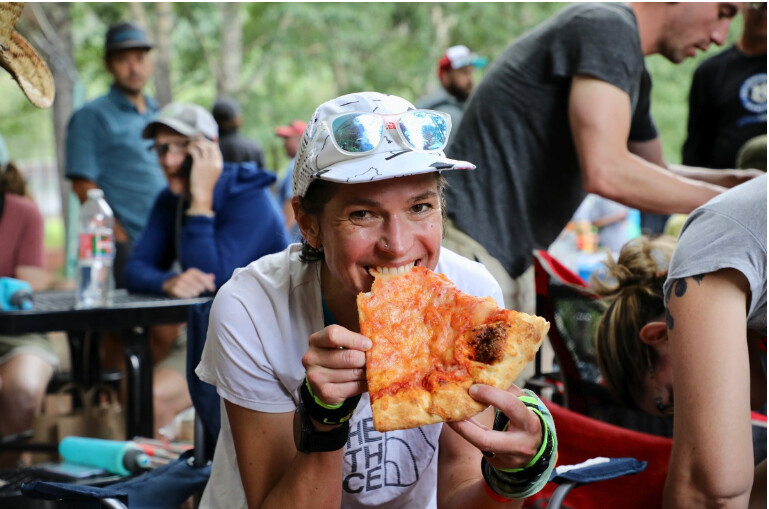

Through Telluride at mile 28, Dauwalter had extended her lead on second place, Guterl, to 67 minutes, with Piceu coming in a close third and leaving the aid station alongside Guterl. Hannah Green followed in fourth, with Stephanie Case in fifth, who was already recovering from some early stomach issues.
Past mile 33 at Kroger’s Canteen, as Dauwalter barreled ahead, the chasing women had paired off and were working together — with Piceu and Guterl still in second and third and all smiles, while Hannah Green and Stephanie Case had joined forces 22 minutes back from that duo.
Dauwalter arrived at the Engineer aid station, just past the halfway point, in sixth-place overall with 12:10 on the clock, still looking strong and in control. The effort was starting to show by Sherman at mile 73, but she was still eating well and focused.
Stephanie Case, who had crept up the women’s field, arrived into Sherman as second woman. Hannah Green followed in third at mile 73 — looking tired, but calm and collected as she had done all race — with Darcy Piceu and Meghan Hicks nipping at her heels in fourth and fifth.
By this point, Duawalter was more than five hours clear of her nearest women’s competitor, and thoughts were starting to turn to Diana Finkel’s longstanding course records. After a relatively conservative beginning, Dauwalter finally took the lid off of course record pace by mile 93 at Cunningham Gulch, coming in with 24:16 on the clock. She seemed to grow in strength and resolve as the finish line approached, and eventually stormed home in a time of 26:44:38, to add Hardrock 100 to her litany of wins, course records, and other ultrarunning achievements.Case ran strong to the ending, finish her first Hardrock 100 in second place in 32:52:46. The town of Silverton came out to celebrate local resident Hannah Green’s third-place finish in a time of 34:26:39, taking nearly two full hours offer her time from 2017.For the first time in her nine starts, Darcy Picue finished lower than second, but she worked through endless to finish fourth in 35:08:06.
(07/17/2022) ⚡AMPby Bryon Powell and Sarah Brady I run far
Hardrock 100
100-mile run with 33,050 feet of climb and 33,050 feet of descent for a total elevation change of 66,100 feet with an average elevation of 11,186 feet - low point 7,680 feet (Ouray) and high point 14,048 feet (Handies Peak). The run starts and ends in Silverton, Colorado and travels through the towns of Telluride, Ouray, and the ghost town...
more...2022 Hardrock 100 Men’s Race
The men’s race at the 2022 Hardrock 100 finished pretty much in line with expectations – with an epic showdown between two of the greatest talents ever seen in the sport – Kilian Jornet (pre-race interview) and François D’Haene (pre-race interview). But there was plenty more action along the way, with bold moves from Dakota Jones (pre-race interview), and some strong running further back the field. Here’s how this year’s clockwise action played out.
From the start, the runners made a fairly predictable formation at the front of the field. Dakota Jones, Francois D’Haene, and Kilian Jornet led the charge, running together, with Jones joking with one of our reporters that they had agreed to finish in the aforementioned order. A very happy looking Dani Jung followed close back from the leaders in fourth at the KT aid station at mile 11.5, with John Kelly three minutes later in fifth. There was a gap of ten minutes or more from this front pack to Jeff Browning and Luke Nelson, who looked to be taking it very easy in sixth and seventh.The front trio remained within a few strides of each other the whole way into Ouray at mile 44, and although looking relaxed, they were already twelve minutes up on course record pace. Jung still followed in fourth, but the gap had widened to almost half an hour. He still looked very fresh and appeared to be taking the high road and running his own race, rather than getting caught up in anything outside of his comfort zone. The next three positions — Kelly, Browning, and Nelson — also remained unchanged with Kelly appearing more sombre than the others, but still making a fast turnaround in the aid station.
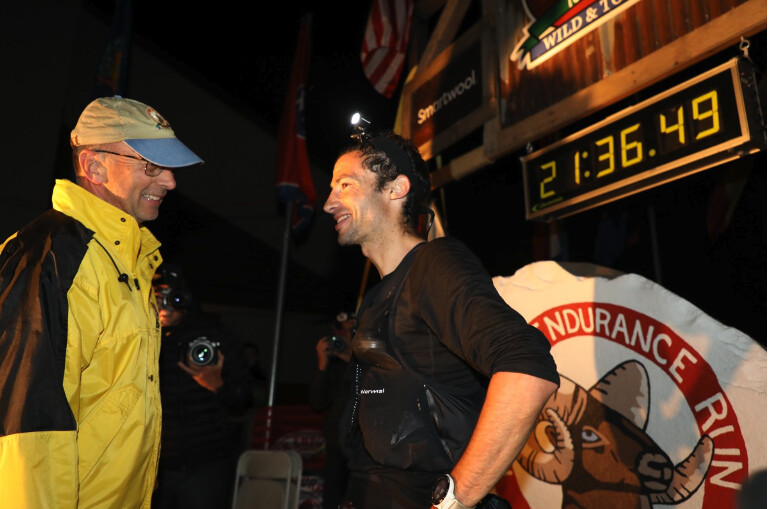
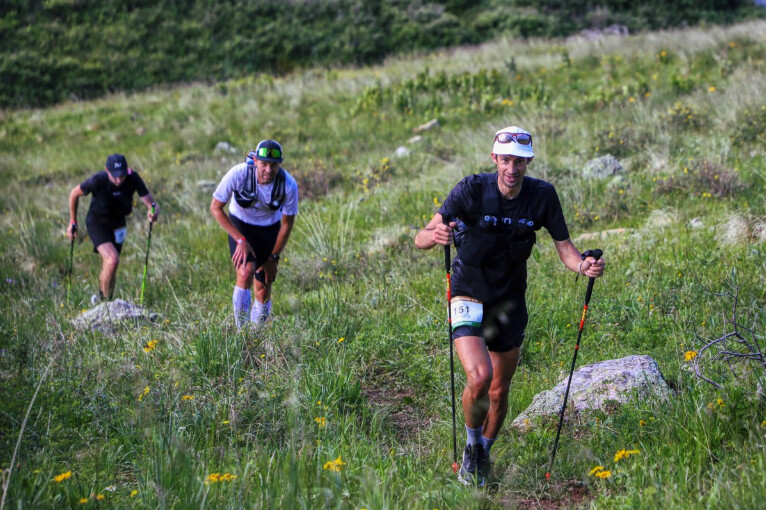
Jones was the one to make the move that cracked the front trio, and he came into the Engineer aid station at roughly the halfway point 11 minutes clear of Jornet and D’Haene, who remained together. Jung held on steadfastly in fourth, and former Hardrock champion Browning had moved up to take fifth from a struggling John Kelly.Jones continued to lead the way through Grizzly Gulch, two-thirds of the way into the race, but the Euro duo of Jornet and D’Haene had begun to close. By Sherman at mile 73, the two had joined forces, entering and leaving the aid station together eight minutes ahead of Jones.
They continued to run within seconds of each other, but by Cunningham Gulch at mile 93, there was a notable shift in tone as the race had begun in earnest. Jornet was the first to leave the aid station with D’Haene following seconds later. D’Haene looked strong and can never be underestimated in the finish, but after the headtorches began to flicker on the final descent through Arrastra Gulch, it was Jornet who emerged first from the darkness, having put five minutes on his friend and opponent in the roughly four-mile stretch.
Jornet powered through to the finish, taking his fifth victory in five Hardrock starts, and a clockwise and overall course record in a time of 21:36:34. D’Haene followed and touched the rock at 21:51:21, which was also under the original clockwise record from Jornet’s 2014 run.Further back, despite losing hold of first place, Dakota Jones never stopped pushing and took third in a strong 23:06:19, making his pre-race goal of breaking 24 hours.
An emotional Dani Jung came home in fourth, a position he held essentially all race, in a time of 25:53:47. This is just the beginning of Jung’s season, with UTMB and Diagonale des Fous still to come, and it will be interesting to watch him build on this performance.Jeff Browning was next home, finishing his sixth Hardrock in a time of 26:17:47, saying at the finish “It doesn’t get any easier.”
(07/17/2022) ⚡AMPby Bryon Powell and Sarah Brady I run far
Hardrock 100
100-mile run with 33,050 feet of climb and 33,050 feet of descent for a total elevation change of 66,100 feet with an average elevation of 11,186 feet - low point 7,680 feet (Ouray) and high point 14,048 feet (Handies Peak). The run starts and ends in Silverton, Colorado and travels through the towns of Telluride, Ouray, and the ghost town...
more...Dominican Republic overhauls host nation to take mixed 4x400m gold in Oregon
Had the race been 10 metres shorter, it may have gone in the USA’s favour. 10 metres longer and perhaps the Netherlands would be the champions. But Dominican Republic timed their efforts to perfection in winning the mixed 4x400m at the World Athletics Championships Oregon22, catching the USA just before the line and holding off a fast-finishing Dutch team.
Over the past 12 months, four teams in particular have dominated this discipline. The same teams that occupied the top four spots at the Olympic Games last year were once again in the medal hunt here at Hayward Field, only the finishing order was different.
This time, the Dominican Republic – a nation of just 10.8 million people – defeated some of the superpowers of the sport, clocking the second-fastest time in history, 3:09.82.
Elija Godwin got the host nation off to a strong start, covering the first lap in 44.71 – a full second quicker than the next-best lead-leg runner – and handed over to Allyson Felix with a significant lead, prompting the loudest cheer of the day from the home crowd. By the time the legendary US sprinter was half way around the track, she had a lead of about 15 metres on her rivals.
But Dominican Republic’s Marileidy Paulino, who took silver just ahead of Felix in the individual 400m in Tokyo last year, came charging around the final bend and made up the significant gap on the 2015 world 400m champion, catching her just before the line to put Dominican Republic’s Alexander Ogando in the lead.
Paulino’s split was later confirmed at 48.47. Felix, timed at 50.15 for her leg, handed over to teammate Vernon Norwood. Lieke Klaver, meanwhile, ran a 49.32 split to put the Netherlands back into contention. Further behind, Jamaica and Olympic champions Poland were trying to chase the top three but struggling to make any impact.
Norwood clocked a 44.40 split – the fastest of the race – to put the USA back in the lead going into the final leg. But Ogando (45.12) and Dutch 800m specialist Tony van Diepen (45.13) ran solid legs to keep their teams in contention.
Vernon Norwood and Alexander Ogando in the mixed 4x400m at the World Athletics Championships Oregon22 (© Getty Images)
US anchor leg runner Kennedy Simon went out hard on the final leg and opened up a significant gap on Fiordaliza Cofil of the Dominican Republic and Olympic 400m hurdles bronze medallist Femke Bol of the Netherlands. At one point it seemed as though Simon’s lead would be safe, but Cofil started to gain on the US anchor on the home straight, while a long-striding Bol had both runners in her sights.
The home crowd did their best to support Simon in the closing stages, but her early exuberance proved costly and Cofil caught her just a few metres before the line, securing gold for the Dominican Republic in 3:09.82 – the second-fastest time in history and just half a second shy of USA’s world record from the 2019 World Championships. A split second later, Bol then came charging through to also pass Simon, giving Netherlands the silver medal in 3:09.90 ahead of the USA (3:10.16).
Poland, triumphant in Tokyo 12 months ago, this time finished outside the medals in fourth with 3:12.31, just ahead of Jamaica (3:12.71). Nigeria (3:16.21), Italy (3:16.45) and Ireland (3:16.86) rounded out the finalists.
It was Dominican Republic’s third gold medal in World Championships history, behind the two titles won by 400m hurdler Felix Sanchez.
“We are a small country, but we have a big heart,” said Dominican Republic’s lead leg runner Lidio Andres Felix.
“We did a great job as a team and I hope we can achieve another good result in Paris (2024),” added Paulino. “The Dominican Republic has a lot of talent, not just in baseball. I have a lot of admiration for Allyson Felix; we ran together in the Tokyo Olympic final.”
And while it may not have been the result the host nation was looking for, Felix still made history by winning a record 19th World Championships medal. She also broke records for the number of World Championships at which she has won a medal (eight) and for the longest span of medal-winning years (17).
“It was very special to be able to run in front of a home crowd for my last race, and my daughter was also in the stands,” said Felix. “It was a night I will cherish. I've had such good memories. I know it is time and these guys will carry it on into the future. I am at peace stepping into this next stage and have tremendous gratitude for this sport.”
(07/17/2022) ⚡AMPby World Athletics
Five tips to run further and faster
Whether you’re a seasoned runner or only started running recently, chances are you probably want to run further or faster at some point.
In this blog, I want to go through some simple ways you can take your running to the next level and achieve those goals.
1. It’s okay to walk
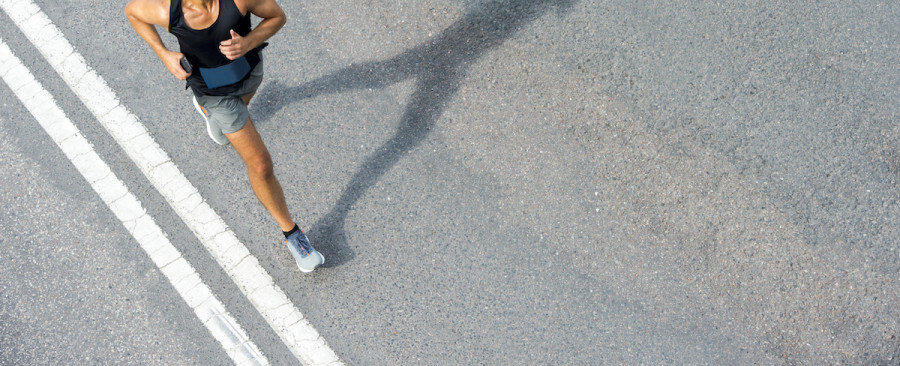
I find that many people think that you’re not allowed to walk if you want to call yourself a ‘runner’. But walking is actually an integral part of running training. By including sections of walking in your running training, you can catch your breath, let your heart rate settle back down and save your legs for a bit. Ultimately, this helps you train more often and clock up more kms overall.
If you’re looking for inspo as a beginning runner, you can find ‘Couch to 5k’ programs online, which all include walking as part of the program.
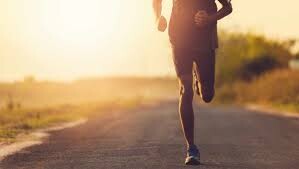
And if you’re a more advanced runner, you can progress to even further distances by incorporating walking in your routine.
2. Do one thing at a time
A lot of us like to get out there and just run as hard as we can. But if you want to run further and faster, you should consider making your training more specialised and intentional – focusing on distance and speed separately.
Some people call it ‘polarised training’, splitting up your running to look something like this:
The bulk of your kms should be at a comfortable, conversational pace to build up your ability to run longer distances and overall aerobic capacity.
Have dedicated, more intense sessions focusing on speed and strength. This could include things like interval training or hill repeats.
If you’re still new to running, you might not want to worry about polarising your training too early, the most important thing is enjoyment.
But if you’ve been running for some time already, you can find training programs on the internet to give you more ideas on how polarised training can help you. Try searching for things like ‘5k to 10k training plan’, ‘10k to half marathon training plan’ and so forth or ‘how to run a faster 5k’.
3. Know where you’re going… or not
Planning where you’re going ahead of time can help you run with purpose. On those days when you don’t feel like running but know you’ll feel better afterwards, having a go-to loop that’s short and sweet and near your house can really help you turn that doorknob. I would suggest having a few routes that you can rely on depending on how you feel.
But running is also a great way to learn about your surroundings or check out a new neighbourhood. Sometimes it can really pay off to run down a street you usually overlook or turn right instead of left. And if you’re afraid of getting lost, you can still get curious in your research – hop on the Maps app on your phone or find a free running map and plot out a running adventure!
4. Do something else
Running is a high-impact activity, so it’s important to give your joints a break by mixing it up with activities like walking, cycling and swimming. On top of this, activities such as weight exercises, yoga and pilates can make your body stronger and more flexible and, in turn, help you run further, faster and injury-free. You can also talk to a personal trainer or physiotherapist for personalised advice.
And remember: if your body is crying out for a break, listen to it – make yourself a tea and spend some quality time reading on the couch! Like I said at the top of this blog, the key to running further and faster is consistency. It’s absolutely okay to miss a session here and there if it helps you stay consistent in the long run.
5. Enjoy it!
There is no silver bullet to running. One session alone won’t magically make you faster and fitter – the key is staying consistent over weeks and months. So, tip number five is to make sure you enjoy yourself. Hopefully, these tips give you some ideas on how to keep that smile (or happy grimace) on your face.
(07/16/2022) ⚡AMPby Tim Siow
Allyson Felix wins her 19th World Championships medal, the most of any athlete in history
Allyson Felix made it very clear that this was her final year of competition. She’s accomplished basically everything there is to accomplish and now she’s on her farewell tour. After the U.S. won a bronze medal in the mixed-gender 4×400-meter relay tonight at the World Championships, Felix was asked about her favorite moment over her career—a career that’s spanned over two decades, five Olympic Games, and countless other accomplishments. She said, “I’ll go with tonight.” She’s cherishing the end. “To be able to come here in front of a home crowd is something I’ve always wanted.”
Her daughter was in the stands. Her husband was in the stands. And it’s as though the rest of the people in Hayward Field were her family. It’s like she’s the only person who matters. She’s the homecoming queen, the poster girl, the best dressed person at the party. If you were blindfolded and you had to guess when Felix got the baton by just using your ears, it wouldn’t be very hard.
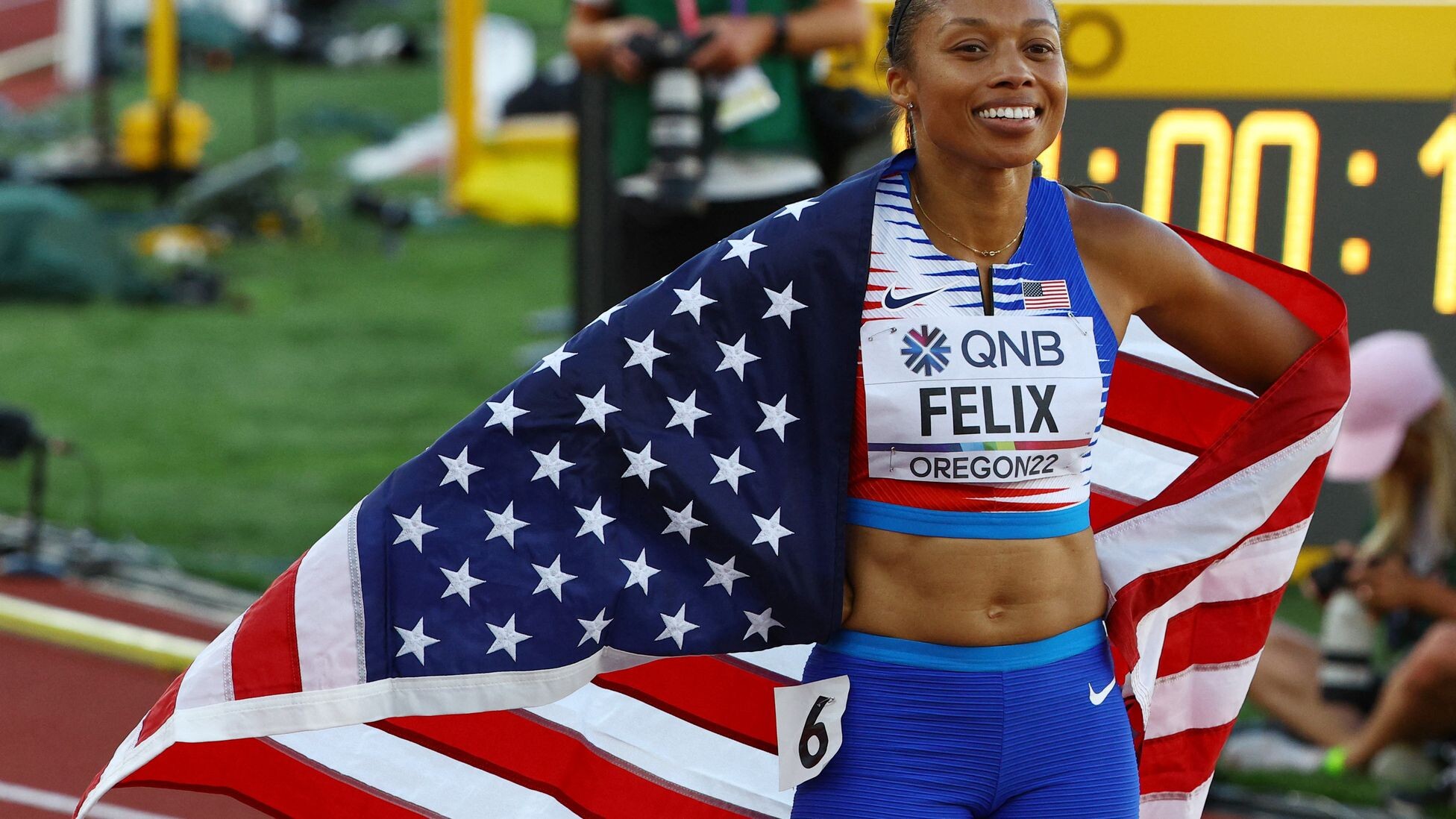
“There was a moment when I could hear all the cheers. I felt joy tonight,” she said. “I just looked around. I was just taking it in. It’s the last time.”
Despite losing, Felix’s teammates were gracious. The media didn’t ask any of them about their personal races, their personal stories, only Felix. The man with the fastest split of anybody in the race, Vernon Norwood, said, “This bronze medal feels like it’s a gold medal since it’s her last.” Teammate Elija Godwin, the second fastest split in the race, said, “It feels like we’re part of history to be with her. I really just want my picture with her.” Norwood and Godwin were the only two men to split under 45 seconds in the field.
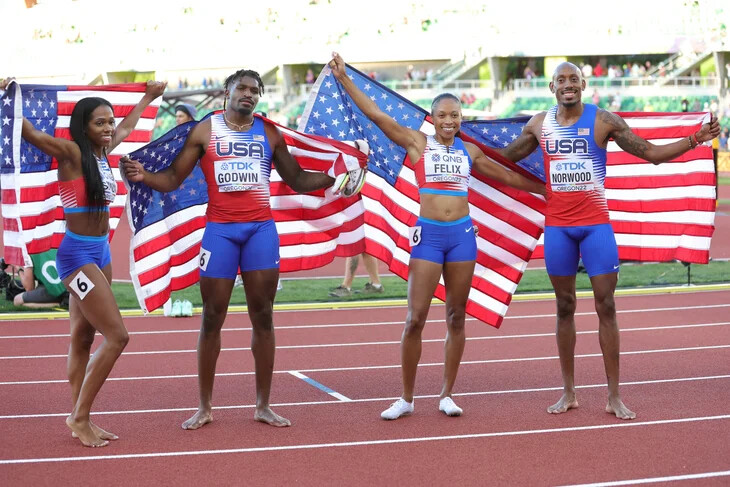
Everybody thought the Americans would win. They were the fastest team in the preliminary round earlier today and they traded out two of their athletes for others with faster PRs. They led or were in touch of the lead the entire race. They got to compete at a World Championships on home soil for the first time ever. But in the end they fumbled. It was as though it happened all at once: With 20 meters remaining, Team USA’s anchor leg Kennedy Simon visibly grimaced, gritted her teeth, and everybody knew what was going to happen. She tied up and it was like she was moving backward. Two teams got around her. The crowd collectively gasped, went silent for a few moments, then sat back down while the team from the Dominican Republic ran a victory lap.
Team USA’s bronze medal is Felix’s 19th medal at a World Championships, the most of any athlete in history. She’s now won a medal at eight separate World Championships, which is a record. (She used to share it with Ezekiel Kemboi of Kenya with seven.)
The Dominican Republic won the race in 3:09.82, the second fastest time ever. With a very fast anchor leg (48.95) from the Olympic medalist Femke Bol, the Netherlands finished second in 3:09.90, a national record. The U.S. finished third in 3:10.16.
Felix got the baton in first and was 50 meters off the front and everybody was on their feet cheering for her. Today was the closest Hayward Field has ever been to maximum capacity and the volume of the crowd felt historic. It was her final lap, and she was running strong. Then the daydream ended. Halfway through the lap, the Dominican Republic’s second leg, Marileidy Paulino, had reeled in Felix. She blew around her on the final straight, splitting 48.47, the fastest leg of any woman in the field. Paulino’s split would be the second fastest time in the world this year if it were run in an open event.
Felix still split 50.15. She said she was proud. Her daughter is too young to register what she witnessed, but Felix said if tonight could teach her something it’d be that “It’s about being a fighter,” she said. “That’s a spirit I hope she carries over, a confidence I hope she has.”
The other woman on Team USA is 14 years younger than Felix and will probably never forget what she was a part of. Simon is only 22 and this was her first major championship race. She’s still in college at the University of Texas, a world apart from where Felix is now. “This whole season was a gradual progression to me getting here,” she said. “For me to be here… I’m satisfied.”
It appeared like the Americans lost the race in the anchor leg. Earlier in the day Kennedy ran the preliminary round and split 50.64, the second fastest split of any woman in the race. She had roughly eight hours to rest before the gun fired a second time, but appeared tired in the final.
It’s hard to show up once. It’s harder to show up twice. It’s even harder, still, to show up like Allyson Felix has, time and time again.
(07/16/2022) ⚡AMPby Matt Wisner
World Athletics Championships Budapest23
Budapest is a true capital of sports, which is one of the reasons why the World Athletics Championships Budapest 2023 is in the right place here. Here are some of the most important world athletics events and venues where we have witnessed moments of sporting history. Throughout the 125-year history of Hungarian athletics, the country and Budapest have hosted numerous...
more...The second fastest woman in history Elaine Thompson-Herah has signed with Puma, and now wants the world record
Five-time Olympic champion and the second fastest woman of all time has signed a sponsorship deal with Puma Running. Elaine Thompson-Herah, the back-to-back Olympic 100m and 200m champion, will boost the company’s impressive roster of track and field athletes ahead of the 2022 World Athletics Championships in Eugene, Ore.
“Puma just felt like the right fit,” says Thompson-Herah. “The company has been working with the world’s fastest athletes for decades and I can’t wait to be part of such an elite group.”
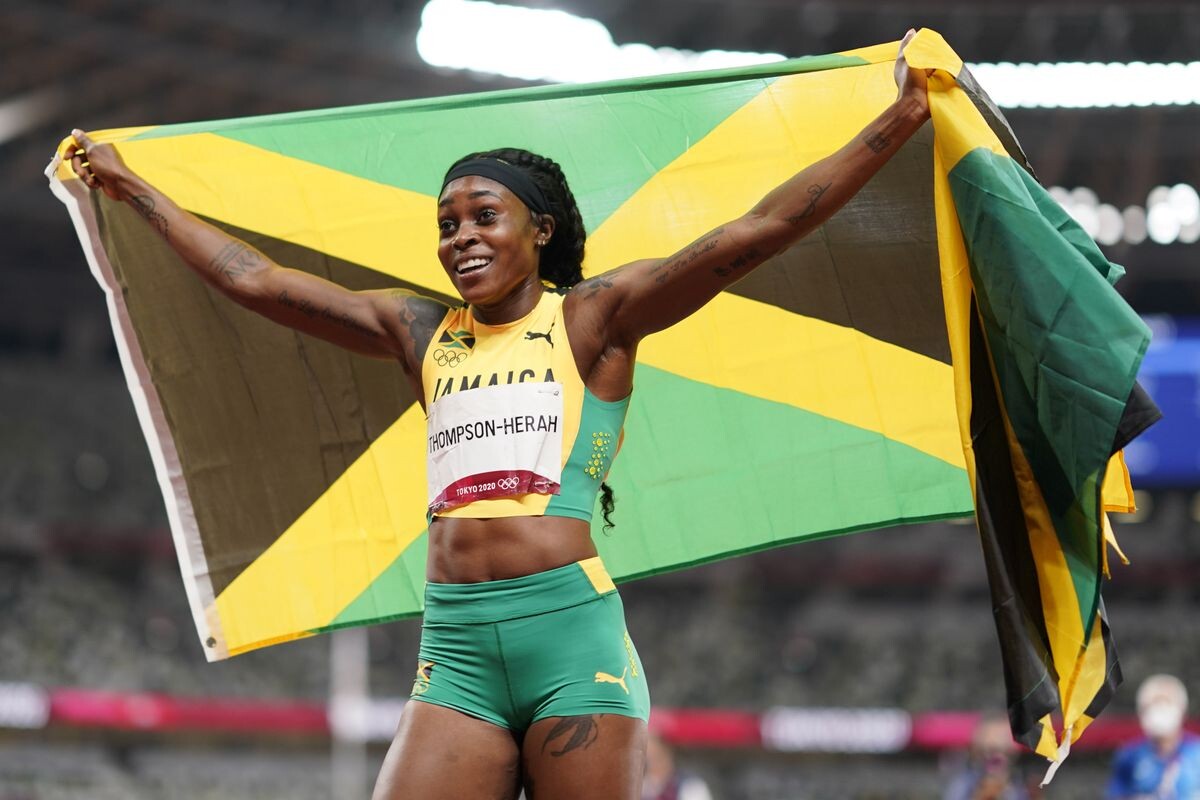
In 2021, Thompson-Herah became the second fastest woman in history when she clocked 10.54 seconds at the 2021 Prefontaine Classic. The 30-year-old Jamaican 100m and 200m record holder spent several years with Nike, and now has her sights set on breaking Florence Griffith-Joyner’s 100m world record of 10.49 seconds from 1988.
“Now is the time to break it,” says the double Olympic champion. “I think there’s still a lot I can unleash.”
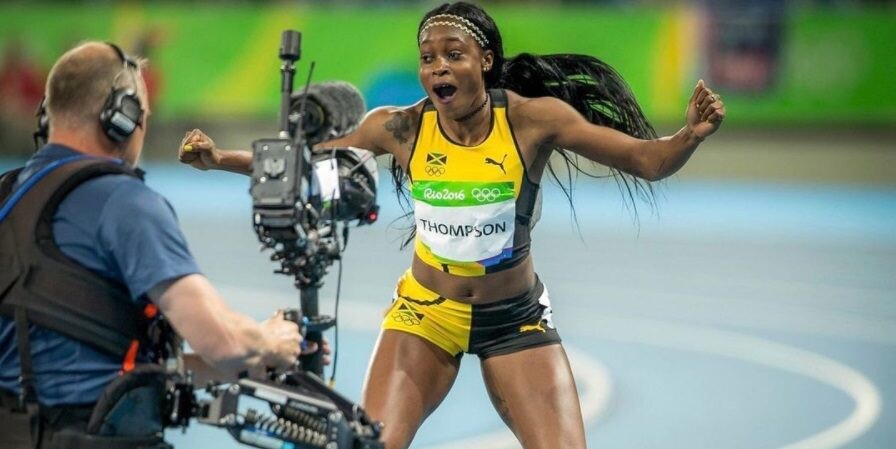
Puma has a long history in the sport of track and field, and has sponsored the Jamaican Athletics Team since 2002. Thompson-Herah now joins her Jamaican compatriot, 100m and 200m world record holder and eight-time Olympic gold medallist Usain Bolt.
Thompson-Herah kicks off her 2022 World Championship campaign on Saturday evening in the women’s 100m heats.
(07/16/2022) ⚡AMPby Marley Dickinson
Should You Cut Caffeine Before A Race?
If there's one thing I know about endurance athletes, it's that we love our caffeine. We love our coffee in the morning, sports nutrition products filled with caffeine to get through tough workouts and races, and a luscious hit of dark chocolate at night. Many of us see caffeine as part of our internal regulation to keep us happy, alert, and running on all cylinders. After all, the very nature of our sport requires us to wake up early in order to jump into a cold pool, pedal on the trainer, or run with a headlamp before the rest of the world gets going. Who wouldn't need a pick-me-up at zero-dark-thirty?
Caffeine might be as essential to the athlete's training regimen as their shoes or their favorite hydration vest. It's the most widely-consumed stimulant throughout the world, found in substances such as coffee, tea, energy drinks, chocolate, and soda. But could that constant daily exposure to caffeine be hurting us on race day?
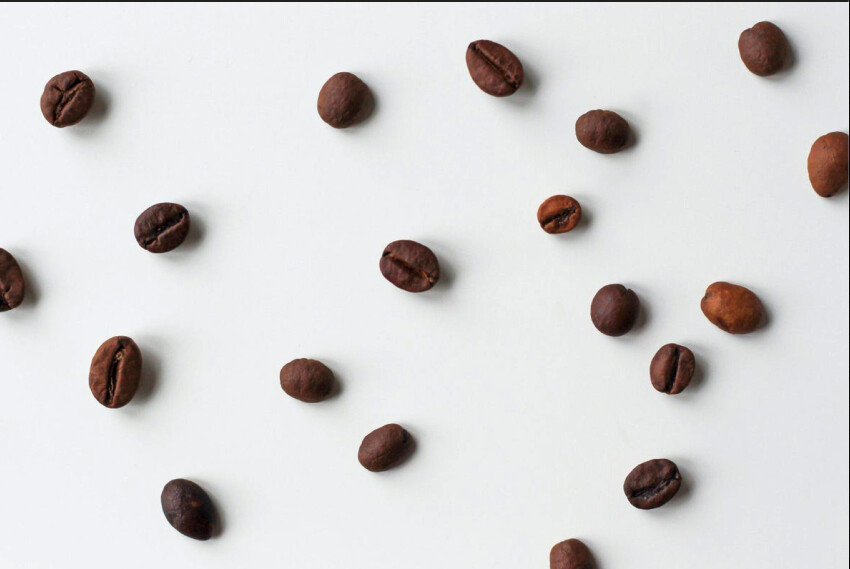
Many of us know the benefits of caffeine as an ergogenic (work-producing) aid to lessen the perception of fatigue and help with sustained intensity for longer durations. However, if you are a regular caffeine user in your daily life, you've probably been warned that your tolerance reduces its race-day stimulation. A new study by Carvalho et al. (2022) set out to determine if habitual caffeine consumption impacted the overall potential benefits of caffeine for both trained and untrained men and women in differing sport types (endurance, power, and strength).
Caffeine is an effective stimulant because it is close in structure to the compound adenosine, which makes you tired. This similar structure makes caffeine an adenosine antagonist - in other words, caffeine blocks adenosine from attaching to the synapses within the brain that signals sleepiness. Simultaneously, there is an indirect effect on the release of other "feel good" neurotransmitters, including norepinephrine, dopamine, serotonin, glutamate, and perhaps neuropeptides. Because the brain hasn't gotten the message to feel tired, and because it has gotten the message to feel excited, humans feel more refreshed and focused than before we made that Starbucks run.
Within an exercise bout, caffeine has been supported by moderate to high-quality evidence to have acute benefits such as positive work-producing impacts on muscle endurance, muscle strength, and aerobic endurance. However, certain studies suggest that habitual caffeine users negate some of the positive benefits to exercise that occur with caffeine use over time. The most recent study aimed to determine if that was the case by quantifying the amount of research published on habitual caffeine consumption.
Does consuming caffeine daily reduce its effectiveness on race day?
Studies with an intervention had to include acute caffeine supplements (of any kind) before an exercise task compared to a control group without caffeine supplementation while doing the same exercise. Finally, outcomes of the exercise task needed to be evaluated as changes in exercise performance or capacity. After screening, 60 caffeine studies met these requirements and were included in the meta-analysis, which included 1137 participants-84% were male, 718 were trained, and 400 were untrained.
After the statistical analysis, the results suggested a small positive overall effect of caffeine supplementation on exercise outcomes of endurance, power, and strength regardless of regular caffeine consumption, sex, or level of training (trained vs. untrained). In addition, this positive effect only occurred when the acute dose was under 6mg/kg body mass, but not over this amount. This is consistent with previous literature which suggests quantities of 2-6mg/kg body weight are appropriate to produce an ergogenic effect on performance in most athletes.
Additionally, caffeine had this positive work-producing effect regardless of whether the acute dose in the study was higher or lower than the participants' regular daily dose administered caffeine or if the research protocol included a withdrawal period before entering the study. One limitation to these findings was that only 24% (60/246 studies) reported their participant's mean habitual caffeine intake, reducing the impact of these results. Therefore, many studies didn't take this into account and could not be used for the final analysis
Do I need to cut back on caffeine before race day?
While many coaches suggest a caffeine withdrawal period before a big race or endurance event, the results of this study do not support caffeine withdrawal as a necessary or effective method for producing an ergogenic effect during a race. Regardless of habitual caffeine intake or the acute dose ingested, an ergogenic effect was reported so long as that acute dose was under 6mg/kg body mass. As a handy reference, we've included a table below of common caffeinated beverages, sourced from the Harvard School of Public Health.
Conclusions
The long and short of the study is good news for many athletes who are daily coffee drinkers. Anyone who has experienced the side effects of caffeine withdrawal - headaches, drowsiness, impaired concentration, depressed mood, anxiety, and irritability - should be letting out a small cheer right now. The taper period can be hard enough as it is, so there's no need to add caffeine withdrawal on top of that.
To get the most out of your caffeine consumption, it would be a good idea for you to experiment with caffeine in doses of 2-6 mg/kg body weight in training to determine how it impacts you personally. Some athletes feel extra jittery on race day, and this may or may not be a good thing to nail your "A" race. It has been suggested that not all athletes have the same reaction to caffeine, and that genotype may play a role in that response. However, until you know your genotype, working with a sports dietitian and tracking your individual response with varying caffeine levels within the proposed range can help identify a caffeine strategy that offers the most potential performance benefits.
(07/16/2022) ⚡AMPby Trail Runner Magazine
Visa delays end British marathoner's hopes of competing at Worlds
U.K. Athletics has confirmed that Chris Thompson, a 2:10-marathoner from Team GB, will not compete in the World Athletics Championships men’s marathon this Sunday after a significant delay in the processing of his U.S. visa.According to the UKA press release, Thompson had been in close liaison with World Athletics and received some help from the U.K. government to solve a last-minute visa hold-up, however, due to the proximity of Sunday’s marathon, Thompson is unable to travel and compete.
“We are very sad for Chris that he has been unable to travel to Eugene for the World Athletics Championships. We are grateful for the interventions and assistance of World Athletics in attempting to resolve the matter, but time has unfortunately run out,” said Team G.B. Leader, Paula Dunn.
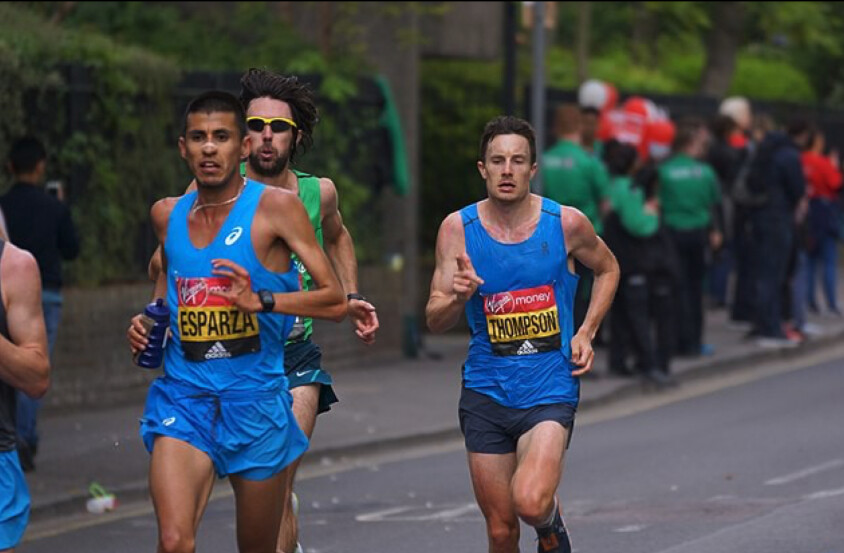
The 41-year-old marathoner was selected to represent Team GB after running a personal best 2:10:21 at the British Marathon Championships in 2021. Last year, Thompson placed 54th at the Tokyo Olympic Marathon in a time of 2:21:29.“I’m absolutely devastated I won’t be in Eugene to compete,” said Thompson in a statement. “This was my major aim for the year and had prepared well for it. I’ll never know what might have been, but I had high expectations of myself going out. It should never have got to this point, and it’s hard to believe it has.” U.S. visa delays have been a common theme at the 2022 World Championships, which has derailed many international athletes’ hopes of competing here in Oregon.
The 2022 World Athletics Championships begin Friday at Hayward Field in Eugene, Ore. All the action in Eugene will be brought to you by Canadian Running and Asics Canada. Follow us on Twitter on Instagram for all things Team Canada and up-to-date exclusive news and content.
(07/16/2022) ⚡AMPby Running Magazine
Obiri, Chelimo will confront Hassan in 10,000m gold rush
Hellen Obiri and Margaret Chelimo, who staged a 1-2 finish in the 5,000m final during the previous 2019 Doha World Athletics Championships, to do battle in the final.
Obiri missed out on a 10,000m medal at the 2019 World Championships and the Olympic Games in Tokyo, finishing fifth and fourth respectively, and has decided to focus on the 25-lap only.
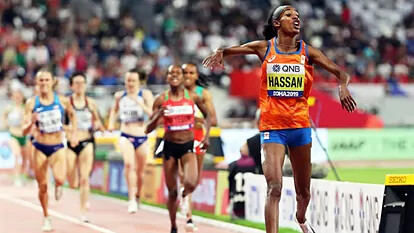
Chelimo hopes to double up in the 10,000m and 5,000m that will begin with the heats on Thursday at 2.25am followed by the final on Sunday at 4.25am.
This year, Obiri won the 10,000m at Kenya Defence Forces and the national trials in April and June respectively. She finished second at Ras Al Khaimah Half Marathon in February in 1:04:22 but won the Istanbul Half Marathon in March in 1:04:48.
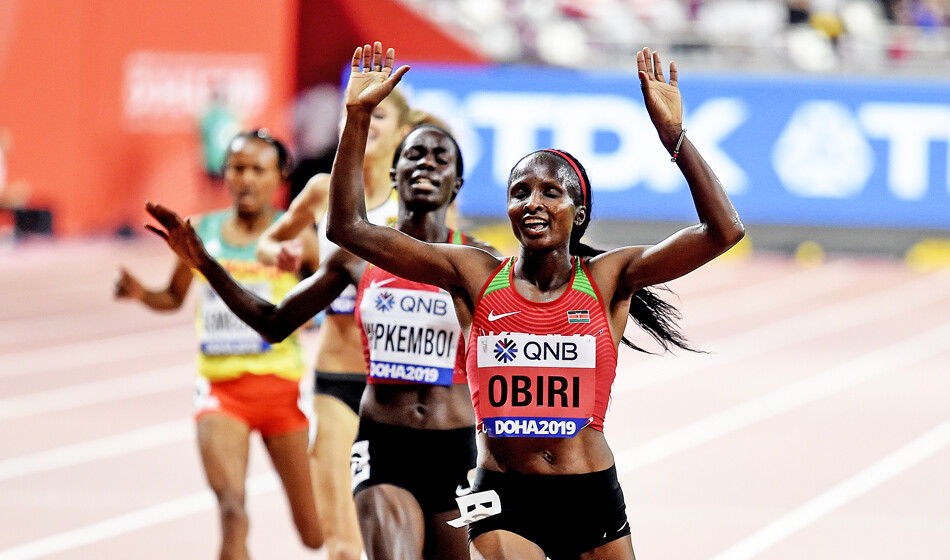
The duo from Kenya Defence Forces will be eying to recapture the title Kenya won last through Vivian Cheruiyot at the 2015 Beijing World Athletics Championships.
The Kenyans have a battle at hand against the Olympic and World 10,000m champion Sifan Hassan from the Netherlands and Ethiopia’s Letesenbet Gidey, the world record holder in both 10,000m and 5,000m.
The Dutchwoman wrestled the 1,500m title from Kenya's Faith Chepng'etich before sealing a double with victory in 10,000m at the 2019 World Championships in Doha.
The 29-year-old would march on to 5,000m and 10,000m gold and 1500m bronze at last year’s Olympic Games.
It's Chepng'etich who halted Hassan's march for the historic hat-trick in Tokyo.
Hassan had not competed this year until a return on July 8 when she won the 5,000m race at Stumptown Twilight Meet, Griswold Stadium, Portland in 15:13.41.
If Hassan wins, she would become only the second woman to successfully defend the title, after Ethiopia’s Tirunesh Dibaba, who achieved the feat in Helsinki in 2005 and Osaka in 2007 – and who also triumphed in Moscow in 2013.
Cheruiyot won the title in 2011 and regained it from Dibaba in 2015.
Gidey, the Ethiopian who obliterated Hassan’s two-day-old world record of 29:06.82 with a stunning 29:01.03 in Hengelo in June last year, has the best finishing kick alongside Obiri.
In Doha in 2019 and in Tokyo last year, Gidey failed to halt Hassan’s dream for victory, taking silver and bronze respectively.
(07/15/2022) ⚡AMPby Ayumba Ayodi
I will forget everything and focus on the finish line, says Ferdinand Omanyala after finally landing visa hiatus
African record holder Ferdinand Omanyala says the visa hiatus that has rocked his boat towards the World Athletics Championships in Oregon will not deter his determination and has vowed to give his best once he lands and sets his spikes on the starting blocks in Eugene.
Omanyala received his US visa late Thursday morning, slightly over 24 hours before the heats of the 100m gun off in Eugene. Athletics Kenya has managed to secure a 6pm flight for his departure from Nairobi, arriving in Oregon 4pm Friday, two hours and 40 minutes before race time.
“First of all it is a relief. It has been a tough last few days. The first target now is to get there on time, hoping there are no more issues along the way. I want to thank everyone who has worked hard to see this possible. At some point yes I thought it was never going to happen but I always felt that a breakthrough would come,” Omanyala told Capital Sport.
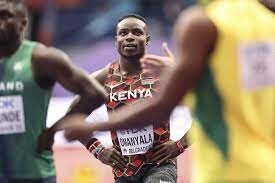
“I would like to thank the President Uhuru Kenyatta, the Government through the Ministry of Sports and CS Amina Mohamed and PS Joe Okudo for all the effort they put to ensure that I get both the US and UK visas despite everything that was going on,” Omanyala added.
He also says; “She (CS Amina) has been working from last night to have this done and I want to thank her so much. I also want to thank the US embassy for expediting. I am sure they did this out of a clean heart.”

He adds; “I hope to get there on time and once I step on the blocks, I will give everything to be on the finish line. Yes it has been tough but it has not deterred my focus. I will use this as a stepping stone to give me more strength for the race.”
The 26-year old has been booked a business class seat to ensure he gets as much comfort as he needs and gets to Eugene a bit better than if he had been on an economy seat.
Though he believes it is a tough call for him to be at the blocks fresh, he hopes for the best.
“It is a challenge of course, to ensure that I have shaken off the jet lag and all. But I thrive under pressure and I love challenges. I am sure I will get over this,” he added.
Omanyala is the third fastest man in the world this year, having clocked 9.85secs to win the Kip Keino Classic in May.
(07/15/2022) ⚡AMPby Timothy Olobulu
World Athletics Championships Budapest23
Budapest is a true capital of sports, which is one of the reasons why the World Athletics Championships Budapest 2023 is in the right place here. Here are some of the most important world athletics events and venues where we have witnessed moments of sporting history. Throughout the 125-year history of Hungarian athletics, the country and Budapest have hosted numerous...
more...Tips for older runners to minimize aches and pains, stay safe, and have fun
So you want to start exercising more after a lifetime of cubicle-dwelling, and have settled on the sport of millions: running. Congrats — it is great exercise, and it can be very rewarding.
But please — if you’re over 50-something, or even younger and truly out of shape — do not simply lace up an old pair of sneakers and charge out the front door.
First, run the idea past your primary-care doctor. A physical exam may identify cardiac issues or other limitations that warrant trying a different form of exercise, instead.
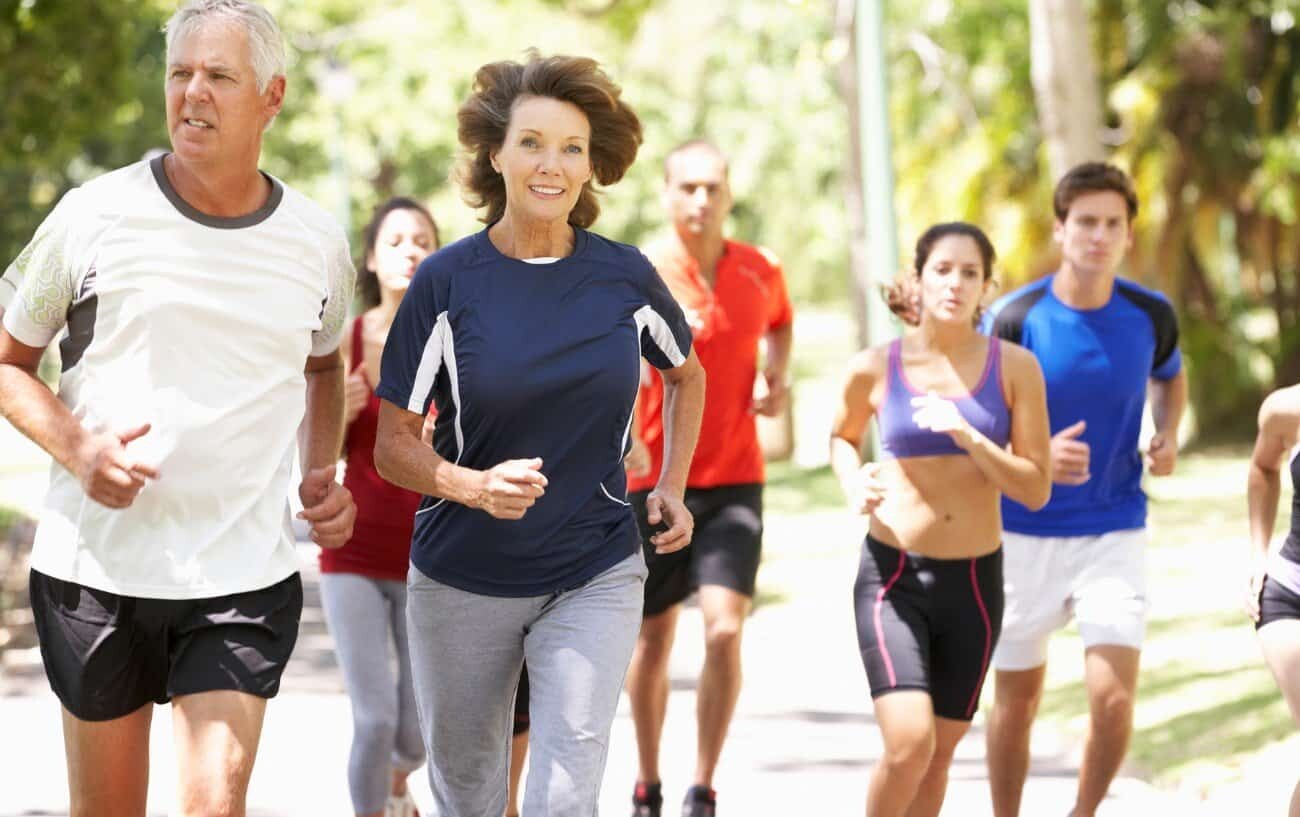
And even after you obtain a clean bill of health, there are practical considerations to keep in mind. We spoke with Joseph Daigneau, owner of Persevere Physical Therapy in Philadelphia, and Dave Welsh, owner of South Jersey Running Co., for tips on how to stay safe, avoid frustration, and above all, have fun.
1. Where to run
One of running’s appeals is that no special facilities are required. Still, it is wise to choose a location carefully, especially as you get on in years.
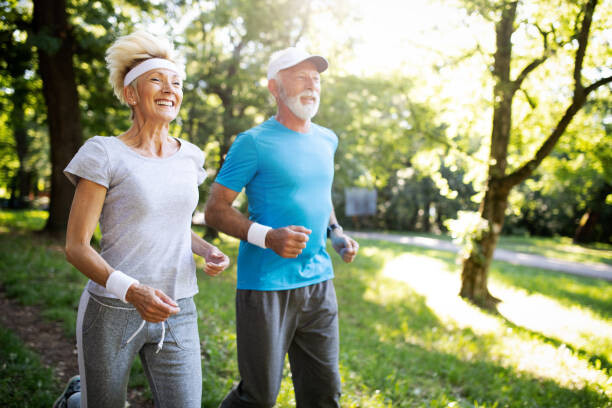
Among the pitfalls: Older folks may not pick up their feet as high as younger people, Daigneau says. If you run on the sidewalk, beware of cracks and uneven pavement that can send you sprawling.
The same goes for running on grass. The forgiving surface may be more appealing than concrete. But for those who are less able to react quickly, hidden dips and depressions can result in a fall or sprained ankle.
A better choice may be a good paved trail in a park. Welsh recommends a high-school track, changing directions periodically or staying in the outside lanes in case the tight turns cause muscle strain.
Yet another option is to run in the street — but in that case, be aware of point number 2:
2. Seeing and hearing
In many states, including Pennsylvania and New Jersey, traffic laws dictate that if sidewalks are available, runners and other pedestrians must stay out of the road. If you must run in the street, stay on the left-hand side, facing traffic. That way, you can see oncoming motorists and get out the way, if necessary.
Above all, don’t assume that drivers can see you. It’s no secret that some people glance at their phones while behind the wheel, or even send a text, despite laws that prohibit it.
If running after dark, wear reflective gear. Many running shoes have shiny logos that reflect vehicle headlights, but that isn’t enough. Consider wearing a vest or light jacket with reflective material.
And resist the urge to wear headphones, lest you fail to hear traffic. That goes double for older people, many of whom have a hearing loss. Consider running with a partner so you can look out for each other, or even a group affiliated with a running store. There is safety in numbers; plus, it’s more fun.
3. Start slow
If you have not exercised in a while, the joints are going to be a bit creaky. Start slow. If running seems daunting at first, feel free to walk, instead.
Daigneau tells novice runners to start by making sure they can walk for 30 minutes with no pain. Then they can graduate to a combination approach: repeated cycles of six minutes of walking followed by four minutes of running at a moderate pace. If you complete five of those repetitions (50 minutes’ worth), that amounts to 20 minutes of running — a respectable goal.
Even after you build up strength and endurance needed for sustained running, there always will be aches and pains. That is true at any age.
The key is to distinguish between regular soreness and the type of pain that suggests you are overdoing it. Daigneau says that if soreness persists beyond two or three days, it’s time to dial it back.
Sudden, sharp pain also is a red flag. When in doubt, stop. Don’t be reluctant to seek medical attention.
4. What to wear
At any age, a runner’s most important purchase is a good pair of shoes. The topic merits an entire article, but at a minimum, keep these tips in mind:
Running shoes generally should be at least a half-size larger than other footwear, Welsh says. That’s because a runner’s feet and toes swell during the course of a run, and they also spread out each time the shoe hits the ground. A bit of extra space is essential.
Older runners may like a shoe with more cushioning, but the most important attribute is a good fit. A trip to a store with trained salespeople is a smart idea.
The shoes can be pricey, sometimes running more than $100. If that’s too steep, ask whether the store has older models at clearance prices.
(07/15/2022) ⚡AMPby Tom Avril
Why run tall is bad advice, the connection between correct running posture, glute activation and quad dominance, explained
You may have heard a lot of advice to keep your shoulders back when you run, or to be mindful of having good posture, or to “run tall.” This advice sometimes even comes from seemingly well qualified people, but it’s based on a fundamental misunderstanding. The best posture for running is with a slight forward lean, which engages your glutes–the body’s largest and strongest muscles and the source of running power.
You may also have heard a lot of advice about “activating your glutes” when you run. This is good advice–but it’s not something you need to do consciously, as long as you’re running with a slight forward lean, as movement expert Jae Gruenke explains in the video.
Moreover, the advice to strengthen your glutes is of little value if you are not running in such a way that your glutes are engaged.
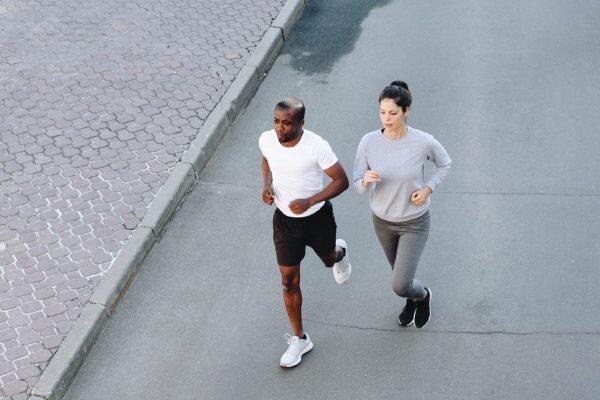
Running with a very upright posture means your weight is too far back for powerful running, and is likely to result in your becoming a “quad-dominant” runner, i.e. a runner who is mostly using their quads, at the expense of their glutes and hamstrings, when they run. (This may also be associated with knee pain, lower back pain and plantar fascia issues, according to Gruenke, who frequently sees this in her practice.)
You may feel like your running is fine, but your quads are likely often sore after a long or hard run, and you are probably not running as powerfully (or as fast) as you could be, even at lower efforts. Moreover, the advice to activate your glutes will seem mysterious, since it’s impossible to do if you’re not leading with your head and chest. (And you do not need to consciously contract your glutes in order to activate them.) Running with a slight forward lean will also greatly improve your ability to run uphill.
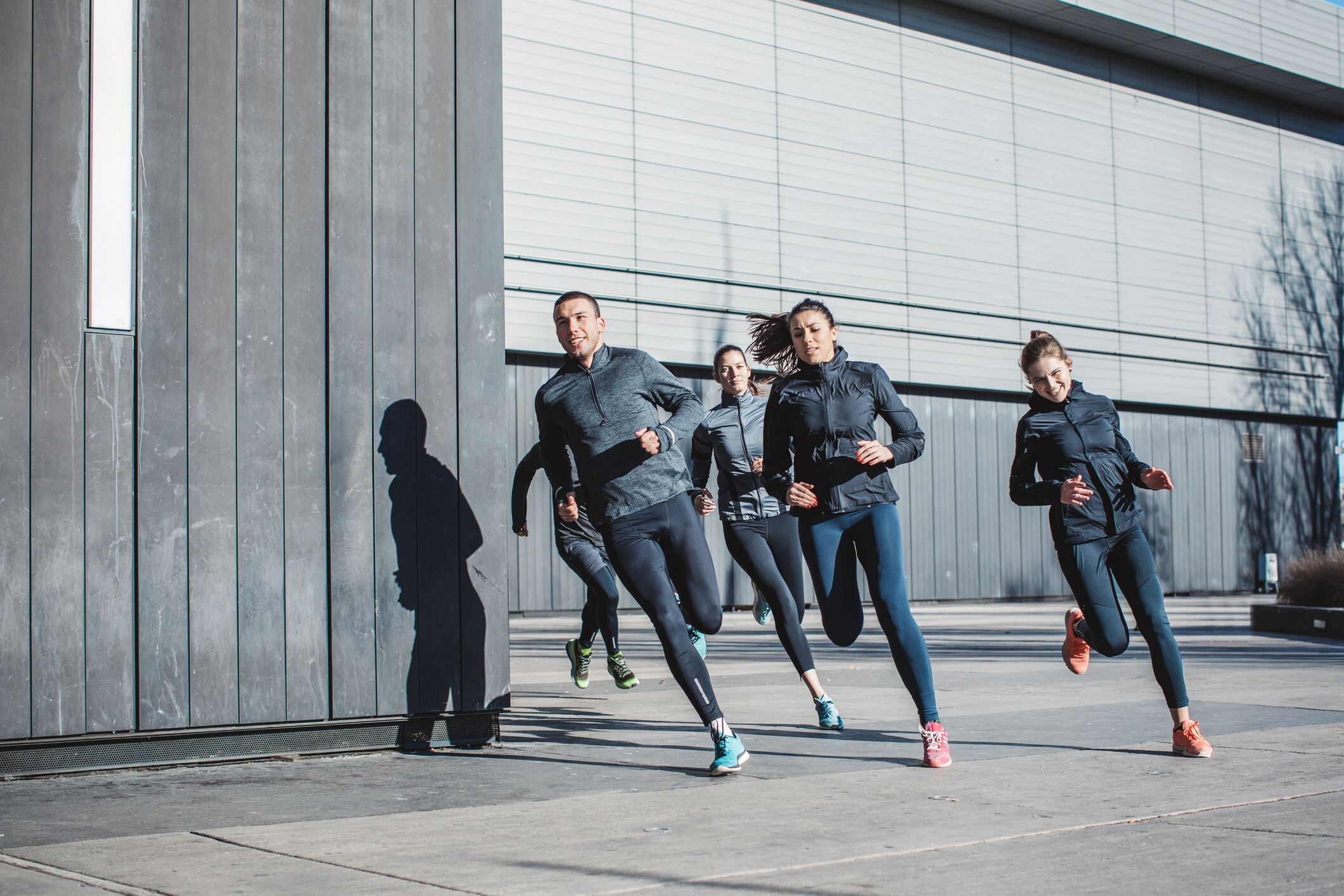
The problem, Gruenke explains, is the assumption that leaning forward when running tilts your pelvis in a way that makes it difficult to engage your glutes; but that assumes that your muscles function the same way when you’re standing, sitting or performing a deadlift as when you’re running, which is not the case. In fact, you must tilt your pelvis forward in order to engage your glutes when running, and take the full load off your quads.
One way to test this is to stand with your knees slightly bent, feet slightly apart, in a forward-leaning position, and hold it for a couple of minutes; you will soon feel your glutes working.
If you’ve ever watched champions like Jakob Ingebrigtsen or Timothy Cheruiyot run, you’ll see the forward lean in action. (It’s not a coincidence that they usually dominate in races!) Granted, they’re running much faster paces than the average runner, but the principles are no different.
(07/15/2022) ⚡AMPby Anne Francis
Visa issues cause headaches for hundreds of athletes and officials at track world championships
100-meter sprinter Ferdinand Omanyala is expected to land in Oregon about three hours before his first heat Friday
Kenya's Ferdinand Omanyala is one of the fastest men in the world at 100 meters, the rare African sprinter who could medal this weekend at the 2022 track and field world championships in Oregon.
But first, he has to make it there – and that's proven to be anything but simple.
Omanyala is one of the hundreds of international athletes and officials who have encountered visa issues ahead of the world championships at Hayward Field, leaving them frustrated, frazzled and, in many cases, racing just to make it to the start line.
The issues appear to stem from poor communication, applications being filed too late and general backlogs at U.S. embassies, where athletes must schedule an appointment and interview in order to obtain a temporary visa.
"This is ridiculous!" retired U.S. sprinting star Michael Johnson wrote on Twitter. "It’s been known US entry visa may be one of the most difficult and (World Athletics) and the organizing committee didn’t get ahead of this?"
World Athletics spokesperson Nicole Jeffery told USA TODAY Sports in an email that, as of Thursday, 374 visa cases involving athletes or officials had been flagged to a joint committee consisting of local organizers, World Athletics and the U.S. Olympic and Paralympic Committee, who have worked to help speed up the process.
About 73% of the cases have been resolved, Jeffery added, leaving a little less than 100 still in various stages of the process.
"We continue to follow up with those outstanding visa issues," World Athletics said in a statement. "International travel in general has become more challenging due to the pandemic and we are extremely grateful for the help and experience of the USOPC in helping to resolve issues that have come up in Omanyala, who has recorded the third-fastest time in the 100 this year, is perhaps the most high-profile athlete who has been impacted. His manager, Marcél Viljoen, told USA TODAY Sports that the 26-year-old has been "frustrated and disappointed" while working to obtain his visa, which he finally did Thursday morning in Kenya.
Viljoen said Omayala is now scheduled to arrive in Eugene, Oregon about three hours before his first heat Friday.
"I want to thank everybody who has worked around the clock to ensure I get my visa," Omanyala told the BBC.
"There's nobody to blame here. It's the system, how it works. You cannot force anything."
Nearly a dozen athletes from South Africa have also encountered visa issues, according to South African media outlet Independent Online, as have athletes from India, Iran and Jamaica, among others.
"Missed out on representing Libya at Worlds because my Federation couldn’t get visas," sprinter Ahmed Amaar wrote on Twitter on Monday. "Representation matters and with no support from (World Athletics) there can be no development for smaller Nations."
Inocencio added that he was surprised to encounter logistical issues like this given the United States' size and reputation. He hopes it might serve as a learning moment before the nation hosts the Summer Olympics in Los Angeles in 2028.
In the meantime, athletes whose travel plans have been disrupted – but not completely derailed – by visa delays can only try to make the best of a stressful situation.
"We (are) finally going, although some of us are going to arrive on the day we racing," South African sprinter Gift Leotlela wrote on Instagram. "We will fight and represent our country with Pride and honour."
(07/14/2022) ⚡AMPWorld Athletics Championships Budapest23
Budapest is a true capital of sports, which is one of the reasons why the World Athletics Championships Budapest 2023 is in the right place here. Here are some of the most important world athletics events and venues where we have witnessed moments of sporting history. Throughout the 125-year history of Hungarian athletics, the country and Budapest have hosted numerous...
more...Pick up your pace with a ladder workout, add some variety to your interval sessions while boosting speed
Ladder workouts are beautifully simple and can be adapted to any training plan. You can run them outside, take them to a treadmill, or make them into a track or stair workout. The concept of a ladder is simple: each interval gets either longer or shorter (or both), as if you’re climbing up or down rungs. Once you’re familiar with the layout of ladder workouts, they can be fairly simple to create and tweak on your own depending on your running needs. Here are two basic ladder workouts that build on increasing speed.
45-minute ascending ladder workout

10 minutes easy running
10 minutes at half-marathon pace
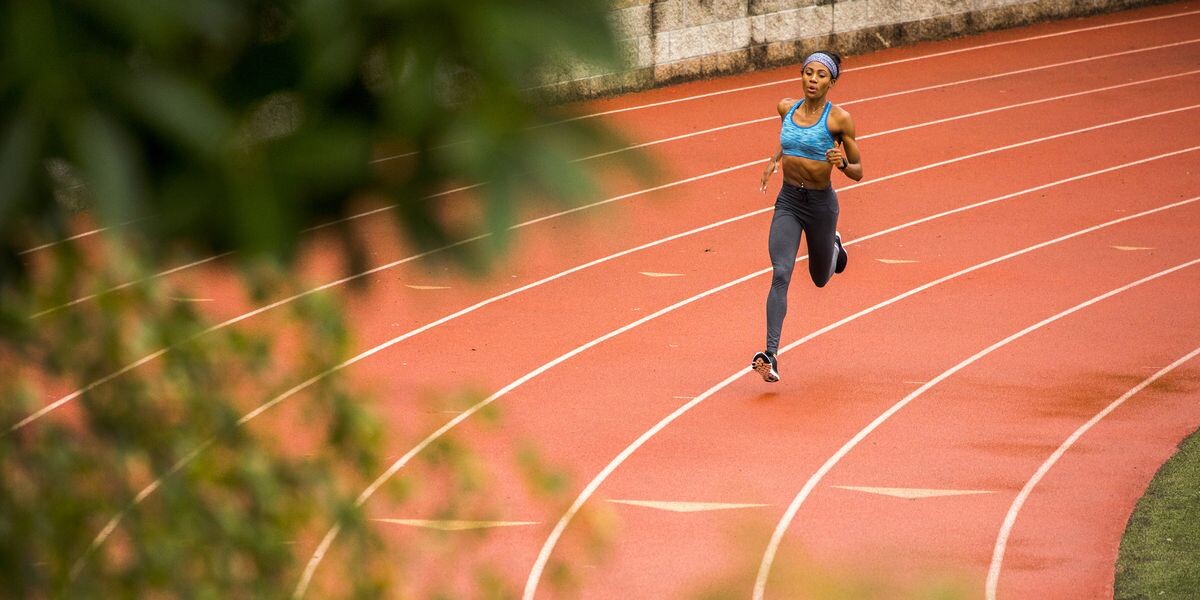
15 minutes at 10K pace
10 minutes easy running
8-kilometer track ladder workout
1,200 meters easy running
800 meters at 10K pace
1,200 meters at 5K pace
1,600 meters at 3K pace
1,200 meters at 5K pace
800 meters at 10K pace
1,200 meters easy running
Once you’ve mastered these ladder sessions, you can tweak the workouts to make them more challenging by increasing the pace in each portion, the distance (or both, if you’re really ready for a challenge). Remember to follow a speedwork session with any easy or recovery running day, and hydrate well.
(07/14/2022) ⚡AMPby Keeley Milne
Conseslus Kipruto leads Kenyan quartet in quest for steeplechase gold
Kenya's dominance in the 3,000 metres steeplechase faces a stern test when the World Championships start on Friday in Oregon, USA.
Defending champion Conseslus Kipruto, Olympic Games bronze medallist Benjamin Kigen, 2017 World Under-18 2000m silver medallist Leonard Bett and Commonwealth Games silver medallist Abraham Kibiwott are carrying the nation's hopes of keeping the title the country has won in every World Championship since 1991 except in 2001 and 2005.
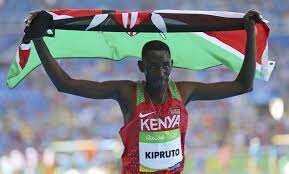
Kenyan-born Qatari Saif Shaheen, who holds the world record of 7:53.63 in the race, bagged gold in 2001 Saint-Denis and 2005 Helsinki World Championships.
Bett and Kibiwot are in the first heat where they will be seeking to make the final scheduled for Monday.
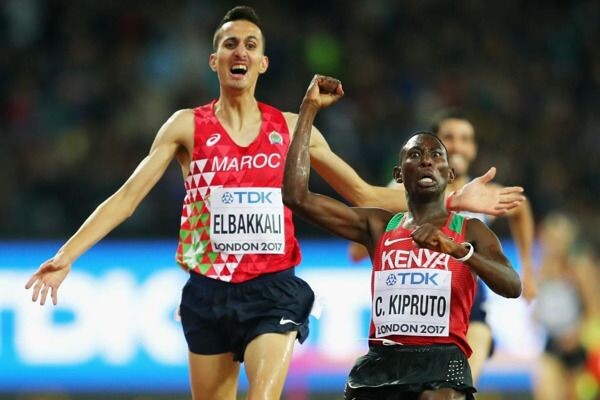
The top three athletes in each semifinal plus the six fastest losers will qualify for the final.
Bett and Kibiwott face an uphill task as they face Olympics champion Soufiane El Bakkali from Morocco in the first heat. Bakkali has a personal best time of 7:58.15 which is also the world-leading time.
Bett told Nation Sport that the plan is to safely navigate through the heats before they can hatch a plan on how to claim the medals in the final.
“We started our preparations early by joining the camp before the trials because the initial plan was to make sure we tackle the stiff competition especially from the two athletes (Girma and Bakkali) who have been on top form this season," said Bett.
“I won’t tell you who will win the gold medal but we have to work as a team to make sure we redeem our name as a country,” added Bett.
The second semifinal will see the Kipruto square it out with Ethiopia’s Lamecha Girma, whom he narrowly beat during the 2019 World Championships in Doha, Qatar.
Djibouti’s Mohamed Ismail, Canada’s Ryan Smeeton, USA’s Hillary Bor are also in the field.
Kigen, Ethiopia’s Hailemariyam Amare, Tunisia’s Mohamed Amin, USA’s Evan Jager, Norway’s Jacob Boutera are in Heat Three.
Kipruto, who has been battling injuries after his triumph in Doha in 2019, is seeking to atone for lost time after missing the Olympic Games last year.
Kipruto finished fifth during the Athletics Kenya Track and Field Championships which acted as the trials for the Africa Senior Championships after clocking 8:32.24, before emerging in the same position during the Kip Keino Classic in Nairobi last month.
“Kenyans should not be worried because this is a championship and you can’t compare it with the Diamond League races. It will be a tight contest in the final and I will be doing my best to make sure we bring back our glory as Kenyans,” Kipruto had said in an earlier interview before leaving for Oregon.
In the 2019 worlds, Kipruto won gold in 8:01.35 ahead of Girma who clocked 8:01.36 while Bakkali settled for bronze in 8:03.76.
(07/14/2022) ⚡AMPby Bernard Rotich
World Athletics Championships Budapest23
Budapest is a true capital of sports, which is one of the reasons why the World Athletics Championships Budapest 2023 is in the right place here. Here are some of the most important world athletics events and venues where we have witnessed moments of sporting history. Throughout the 125-year history of Hungarian athletics, the country and Budapest have hosted numerous...
more...Three ways for a beginner to improve your form
Everywhere you read, someone is trying to give you advice. It’s easy to get confused about what you should and should not focus on. You’ll still want to make sure you are practicing good habits early on, as you will find it’s the easiest way to improve. Practicing bad habits will only slow down your progress and make it harder to work on your form later.
Here are three easy ways to improve your form:
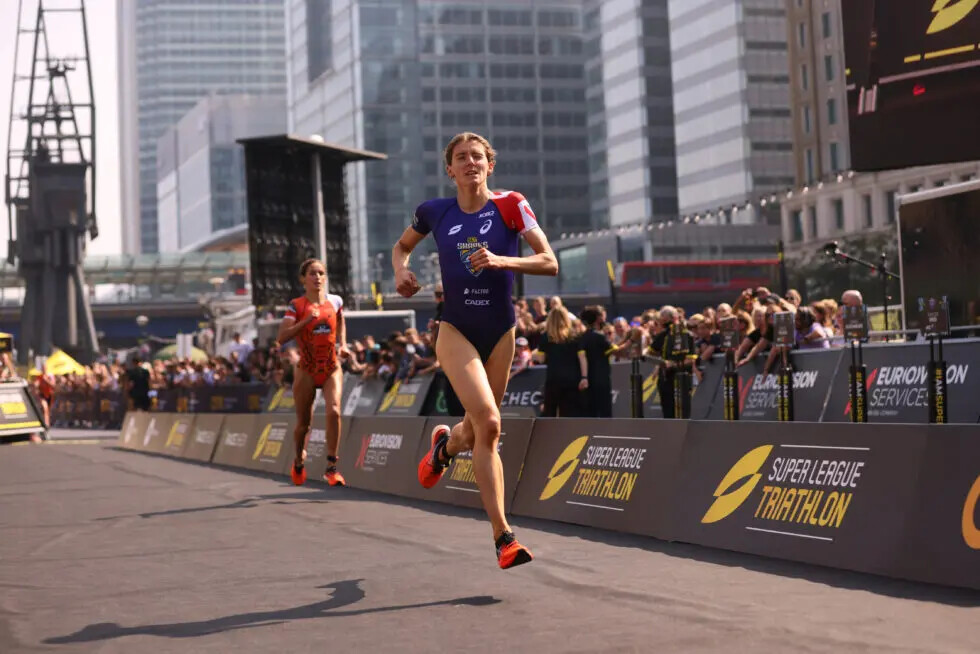
1. Relax your upper body
You are not sprinting, so there’s no need to tense up your upper body. When you relax your shoulders and arms, you’ll expend far less energy than running tensed up. If you are having trouble doing this, try running while holding raw (or imaginary) eggs. The relaxation needed in your hands will prevent you from tensing up the rest of your upper body.
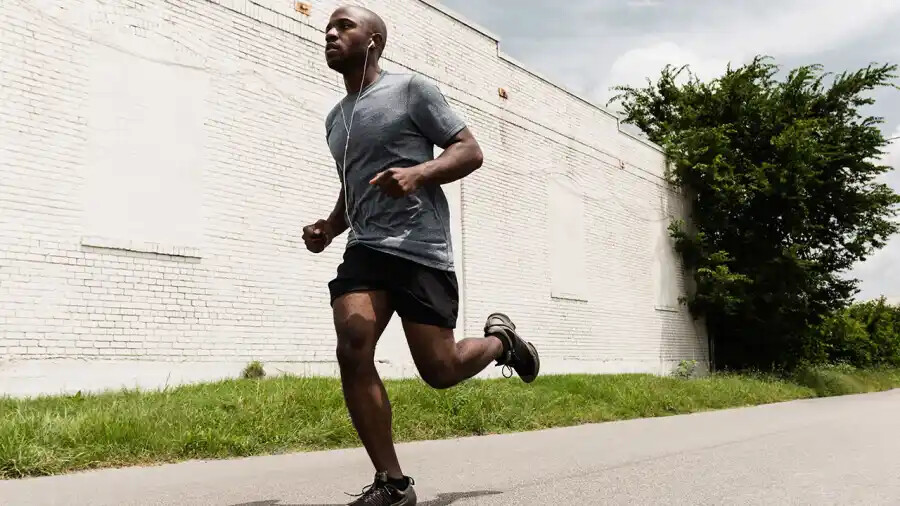
Training yourself to run relaxed and in a way that you can maximize forward movement (without bouncing up and down or shifting your weight excessively from side to side) can help you maximize your potential to run faster.
2. Focus on your breathing
Breathing might be the most important thing that can influence your performance. Practicing breathing techniques in the early stages of learning can help runners maximize their oxygen intake and remain relaxed. The general rule of thumb for distance running is to breathe normally, whether you naturally breathe in through your nose and out through your mouth, or whether you mostly breathe through your mouth. The more you practice your breathing during exercise, the easier you’ll find it to get into a rhythm on your run.
Focusing on your breath can also help your body remain relaxed for the long haul and keep your form intact.
3. Pick up your feet
A bad habit you commonly see in new runners is the dragging of the feet. When runners drag their feet, they put more pressure on their knees during each stride. Try opening up your stride, and instead lift one foot over the other (like you are climbing a small ladder). This technique puts your centre of gravity at the hips, glutes and core, therefore, you will naturally generate more power on each step.
If this technique feels awkward at first, throw your pace out the window and focus on getting more comfortable bringing one foot over the other.
These three easy tips on running form are bound to make you a better, stronger and faster runner within weeks.
(07/14/2022) ⚡AMPby Running Magazine
Joshua Cheptegei is set to defend his world title at Oregon
Cheptegei, 25, currently holds the 5000m and 10000m world records, the Commonwealth double and the 5000m Olympic title, will also hope to wrestle the 5000m title from Ethiopian Edris Muktar.
Now Cheptegei, who is bidding to defend his world title over the 25-lap distance, will lead Africa’s quest for glory on the west coast of the USA.
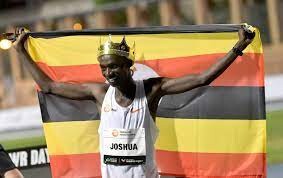
Silver medalist over the same distance at the Tokyo 2020 Olympics last August, Cheptegei’s title defence will be backed up by Stephen Kissa and world half-marathon champion Jacob Kiplimo on Sunday.
There are others like Kenyan Timothy Cheruiyot will face stiff competition from Norwegian Jakob Ingebrigtsen over the 1500m distance.
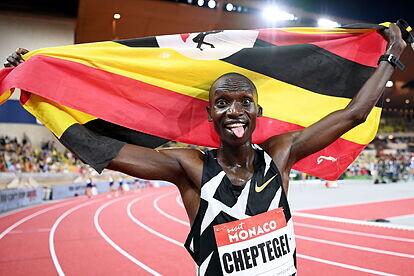
Other African stars set to bid for glory include South African sprinter Akani Simbine, Olympic 1500m champion Faith Kipyegon, Burkina Faso’s world triple jump bronze Hugues Zango among others.
According to World Athletics, 37 of the 43 individual winners from Doha will aim to defend their titles in Eugene.
Besides the champions from Doha, 42 individual gold medal winners at the Tokyo 2020 Olympics are in Eugene too.
TEAM UGANDA TO OREGON WORLDS:
Women: H. Nakaayi (800m),
W. Nanyondo (1500m),
P. Chemutai (3000m Steeplechase),
E. Chebet (5000m),
M. Chelangat (10000m),
S. Chesang (10000m),
I. Chemutai (Marathon)
Men: T. Orogot (200m),
R. Musagala (1500m),
P. Maru (5000m),
O. Chelimo (5000m),
J. Kiplimo (10000m),
S. Kissa (10000m),
J. Cheptegei (5000m & 10000m),
F. Chemonges, F. Musobo & J. Kiprop (Marathon)
That starts with Japanese Toshikazu Yamanishi who will attempt to retain his 20km race walk final on the morning programme of Day 1 action tomorrow.
(07/14/2022) ⚡AMPby Allan Darren Kyeyune
World Athletics Championships Budapest23
Budapest is a true capital of sports, which is one of the reasons why the World Athletics Championships Budapest 2023 is in the right place here. Here are some of the most important world athletics events and venues where we have witnessed moments of sporting history. Throughout the 125-year history of Hungarian athletics, the country and Budapest have hosted numerous...
more...Five basic types of runs all runners need
If you want to be a better runner, you can’t just go out and run for as long as you can or as fast as you can. Well, you may be able to improve to a certain extent, but if you want to bring your running performance to the next level, you should incorporate these 5 basic type of runs into your training. Yes, as simple as it sounds, this is the secret to becoming faster!
#1 The Recovery Run
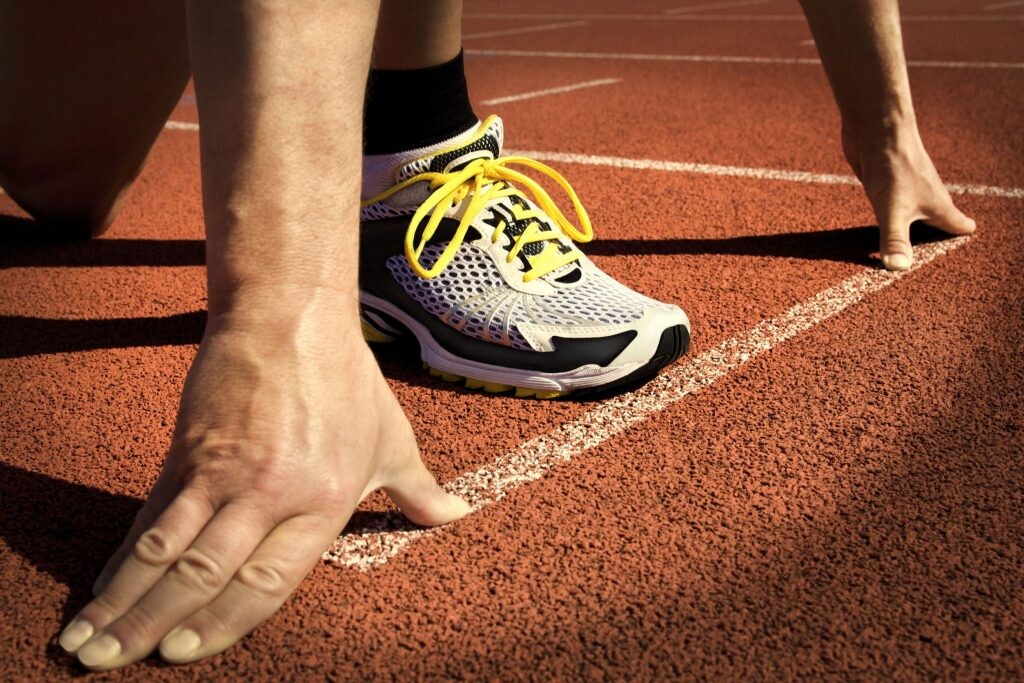
Recovery here actually means recovery! Just to give you a rough idea of what the recovery run means – the Kenyans know how to train hard, but also know how to recover well. They start off their recovery runs at a 6min/km pace and end at a 5min/km pace. Bear in mind this is given their 3.30min/km tempo run pace. This probably gives you a gauge on how slow a recovery run should be. Recovery runs may seem painstakingly slow, but that is the point of the run – to recover, not to make yourself more tired.
#2 The Tempo Run

This is often described as comfortably hard. This means running at a sustained effort at what is known as the lactate threshold intensity. In short, lactate threshold is a point where lactate starts to increase exponentially in our muscles. When lactate starts accumulating in our muscles, there will come a point whereby our muscles start to fatigue and can no longer sustain a particular speed. The tempo run serves to tackle this and increase your lactate threshold. To find your tempo pace, add roughly 15 seconds to your recent 10km race pace! Remember this just gives you a gauge. There is no right magic number. Run at this pace for a time of 20 minutes, and voila you’ve got a tempo run in.
#3 Speed Intervals
This is often described as running above your red line. You will come out gasping for air. I guess you could call this uncomfortably hard. You run for a short intense period, then have a short recovery time before going out full force again. You will have to learn how to deal with the pain. This workout trains your speed, fatigue resistance and pain tolerance. An example of this would be doing 400m x 12 sets at every 3 minutes.
#4 The Long Run
The long run has been the staple of every long distance runner’s training plan. It is advocated as the method to train your aerobic capacity, also known as raw endurance. It’s not difficult to grasp this concept, just run a long distance 15 – 20km at a rather comfortable pace. You should be able to hold a conversation at this pace. The long run aims to train your body to draw energy from other sources other than blood sugar which is especially important in the marathon event. It also gives you a confidence boost to complete a long distance race.
#5 Hill Repeats
This is the secret to being a fast runner. This is what will make a difference between a great runner and a regular one. Hill repeats allow you to build power, physical strength and mental strength. It is going to hurt, but that pain tolerance is what’s going to make you a better runner. Pick a short segment of a hill, and tackle it as hard as you can.
Now you know what to do. Grab your running shoes, mix it up a little and hit your personal bests!
(07/13/2022) ⚡AMPby
Why hiking may be your best cross-training tool
Many of us head out of town whenever we get the chance, spending time alone or with family in whatever type of wilderness is close by. A change of pace can feel rejuvenating, and research says being in nature can have a positive effect on our mental health and cognition. Hiking is perfect for cross-training or easy-day exercise; here are a few ways that heading to the mountains will improve your running.
It has many of the same training effects as a recovery run
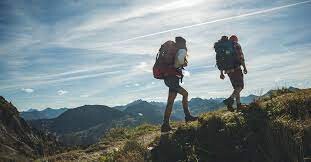
An easy-to-moderate hike will keep your heart rate low–the equivalent of a Zone 1 or 2 workout. When tackling a steep climb or hiking fast, you’ll definitely be getting the equivalent benefit of a running workout on the flat, though it will feel quite different. If you’re hiking on an easy or recovery day, make sure to keep the climb or terrain at an easy level to avoid overtraining. If you’re on a family trip, unable to fit in a hard run but can easily get out the door with your people for a swift hike, don’t worry: you’re getting a great workout, and potentially lessening the chance of injury by switching up your routine. Hiking, while giving similar aerobic benefits to running, avoids the repetitive motions of running, giving your body a break. You’ll be sore in all kinds of new places, and that’s a good thing.
You’ll incorporate hill training (and enjoy it!)
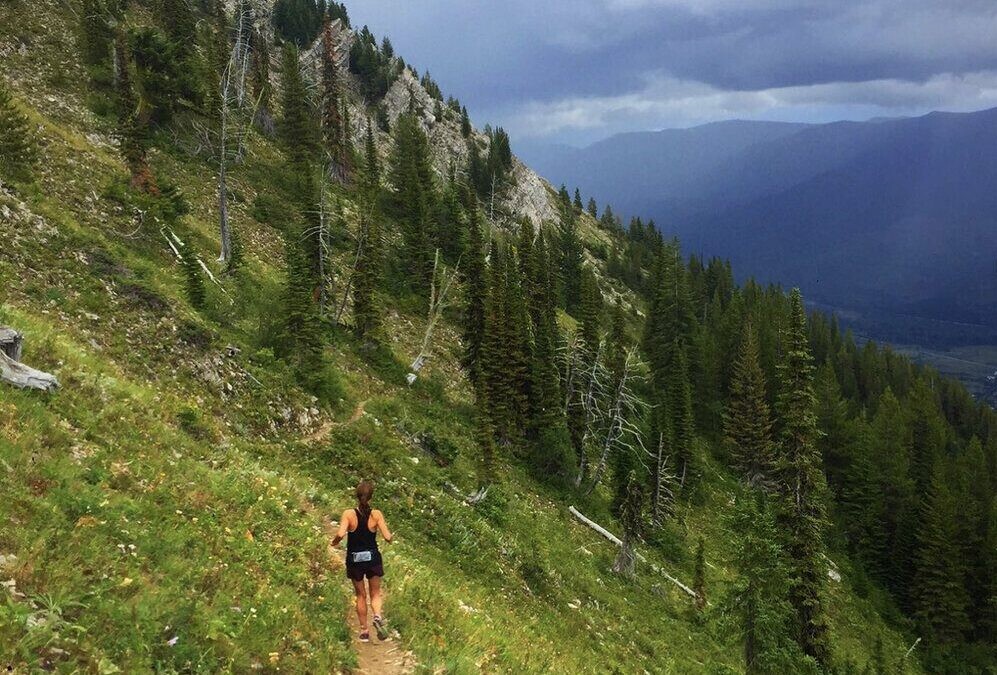
As you climb on your hike, you won’t have to think about activating your glutes–they’ll definitely be engaged. Descending on your hike will use your quads, which we often neglect in running workouts but are essential if you ever encounter a race course with a net downhill. Anyone who has ever run a race with a lot of hills will reiterate this: it’s the downhill, not the climbing, that hurts. Hiking is a brilliant way to get the benefits of going both up and down hills, and you’ll be so busy enjoying the views and soaking in the surroundings that you’ll hardly notice the effort.
Leg strength, core stability and stabilizer muscles all get a workout
Hiking is underrated for runners; many of us dismiss it as being too leisurely. In fact, it can be the perfect complement to almost any training regime because it lets you add mileage without the repetitive stress on your body. While we know running is actually good for our joints, doing the same impactful action over and over can cause stress injuries if our structural tolerance isn’t high. Hiking is gentler on our bodies and cues different muscles than running.
Core muscles kick in as we shift from one foot to the other; moving more slowly engages different and more diverse systems than when we are pounding out an interval session. The uneven terrain on most trails strengthens the stabilizer muscles in our ankles and feet, which carries over perfectly to our next fast run and might prevent a rolled ankle.
If you’re headed into the great outdoors to enjoy a hike, remember to let people know where you are going and how long you expect to be gone, and, depending on your location, be aware of bears and cougars.
(07/13/2022) ⚡AMPby Keeley Milne
Peter Mwaniki Njeru sets new course record at the KATA 10k Time Trial clocking 29:00.9
Peter Mwaniki Njeru used his international experience to produce scintillating performance at the Kenyan Athletics Training Academy (KATA) 10 Kilometres monthly time trial held in Thika Kenya on Wednesday morning (July 13).
Njeru bounced back to victory and chalked new course record of 29:00.81 to surpass his previous mark while his namesake Peter Wanyoike, the winner of the last four editions, also beat his personal record after timing 29:18.88, eclipsing his time of 29:53.19 attained last month.
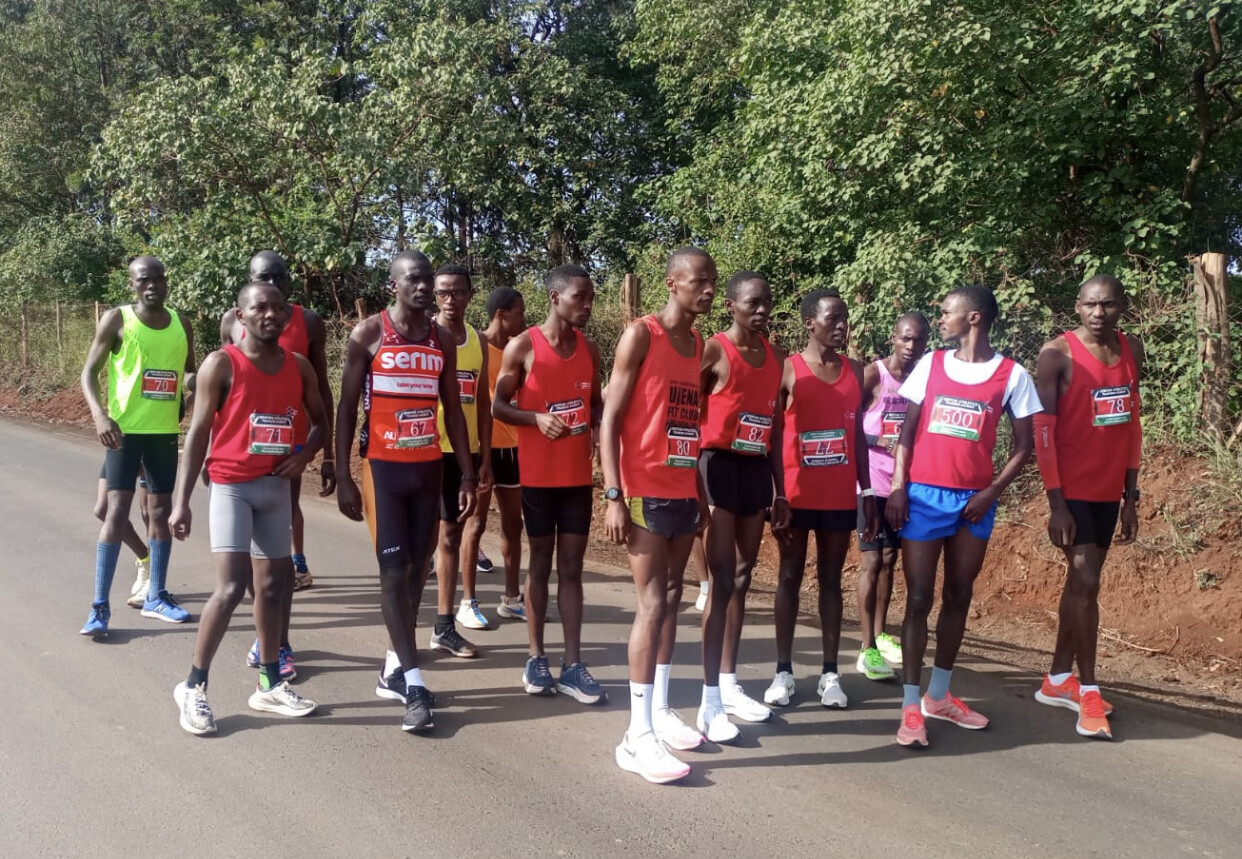
The victory, coming soon after the winner resumed his training after competing in Europe, aided the champion to focus on the programe for faster times in August.
“I was just testing my body after doing good loading the last two weeks. I know I will do better in my next races,” said Njeru, whose races are centralized in Italy.

The monthly time-trial also ushered in newcomers KepharNamtala from Nyahururu and Evans Kiguru of Murang’a who clocked 30:29.6 and 30:40.4 and finished 3rd and 4th respectively during the event held on a five kilometres paved stretch of road not far from KATA.
In the absence of consistent and regular Zakariah Kirika, rising star Nicholas Kitundu registered new 30:46.3, erasing his previous 31:13.3 to finish in position five as the Academy, located near Mang’u High School, off Thika Superhighway, marked 11th months since it officially opened.
The next time-trial, will be moved to the track to introduce variety, is scheduled for August 17th this year.
KATA 10k Time Trial #11 Results:
Name Bib Age Time
1. Peter Njeru 80 23 29:00.9
2. Peter Wanyoike 78 26 29:18.9
3. Kephar Namtala 66 23 30:29.6
4. Evans Kiguru 79 27 30:40.4
5. Nicholas Kitundu 500 22 30:46.3
6. Johnson Kaberia 81 25 31:10.4
7. Raphael Gacheru 72 22 31:26.9
8. Boniface Mungai 77 23 31:46.3
9. Levis Kuria 82 21 32:04.1
10. Fredrick Kiprotich 100 23 33:26.8
11. Erick Mutuku 99 20 33:27.4
12. Alfred Kamande71 24 34:17.8
13. Martin Mambo 98 27 34:18.2
14. Peter Mukundi 85 25 37:59.8
15. Jackson Cheruiyot 70 29 38:01.5
16. Eston Mugo 73 29 D N F
17. Robinson Mwaura 67 29 DNF
(07/13/2022) ⚡AMPby By Coach Joseph Ngure
KATA Time Trial Series
Welcome to the KATA Monthly Time Trial Held at the Kenyan Athletics Training Academy in Thika, Kenya, the KATA Monthly Time Trial is a unique and inclusive event designed to support runners of all levels in achieving their goals and showcasing their fitness. This event offers both 10K and 5K distances on an accurate, certified course, providing participants with...
more...Olympic 100m champion Marcell Jacobs to run at world championships
Italy's shock Olympic 100 meter champion Marcell Jacobs will bid to add the world crown to his medals cabinet despite an injury-affected campaign, the Italian Athletics Federation (FIDAL) said on Wednesday.
The 27-year-old will be on the start line for the 100m heats which get underway on Friday, the first day of the world championships in Eugene, Oregon.
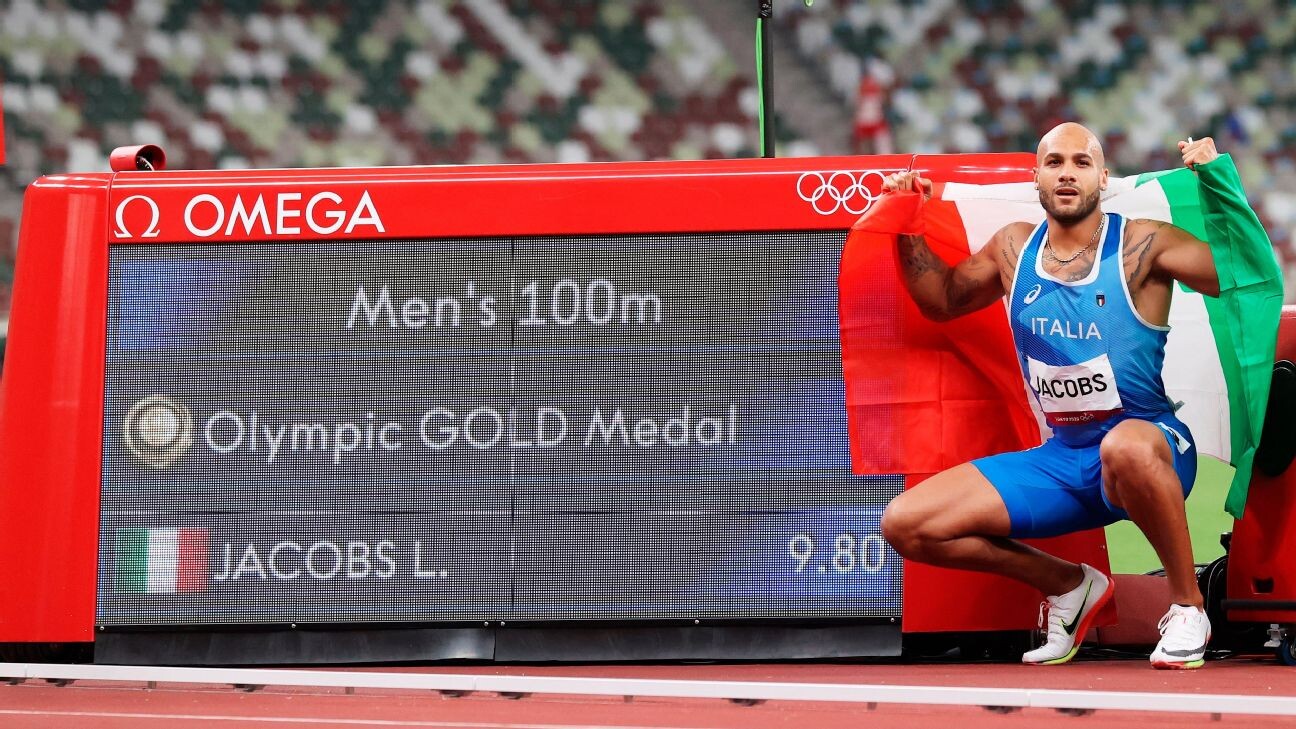
Jacobs kicked off the season with world 60m indoor gold in Belgrade, but a thigh injury in mid-May has disrupted his outdoor campaign withdrawing at short notice from several meets.
"The double Olympic champion (he also won 4x100 metres relay gold in Tokyo) will take part in the 100m heats scheduled for Friday," said the federation in a statement.
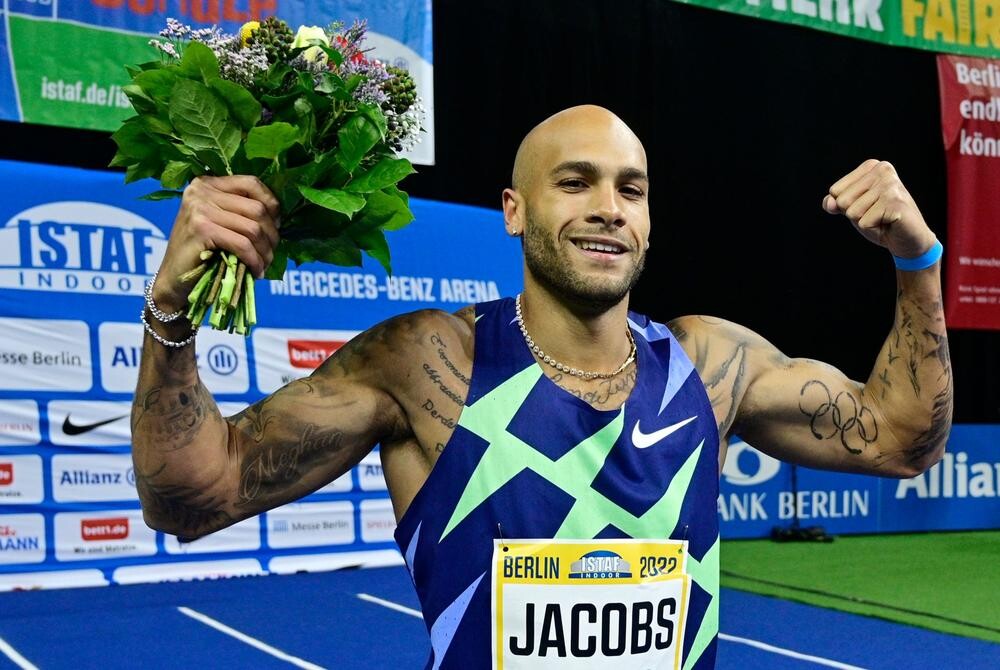
"The decision was taken after a discussion between the athlete, his coach Paolo Camossi and the technical directors of the Italian team after reassuring news coming out of his training camp at Beaverton, near Portland."
Camossi told Wednesday's edition of newspaper Corriere della Sera, the injury cloud had been well and truly lifted.
"The physical problem has been resolved, he does not feel any pain at all," said Camossi.
Jacobs, who has also been affected by intestinal problems this season which forced him to withdraw from the Nairobi meet at the beginning of May, has run just two 100m this term.
He timed 9.99 seconds, aided by a favourable wind, on May 18 and then on June 25 won the Italian title in a time of 10.12sec, far from the European record of 9.80sec he set when winning the Olympic title in Tokyo last year.
(07/13/2022) ⚡AMPWorld Athletics Championships Budapest23
Budapest is a true capital of sports, which is one of the reasons why the World Athletics Championships Budapest 2023 is in the right place here. Here are some of the most important world athletics events and venues where we have witnessed moments of sporting history. Throughout the 125-year history of Hungarian athletics, the country and Budapest have hosted numerous...
more...Olympic 800m medalist Nijel Amos suspended for doping
The third fastest 800m runner of all time, Botswana’s Nijel Amos has been provisionally suspended ahead of this week’s World Championships, after the 2012 Olympic silver medallist tested positive for a banned metabolite, the Athletics Integrity Unit (AIU) said on Tuesday.
The drug found in the 28-year-old’s system was GW1516, which modifies how the body metabolizes fat, and which can boost endurance. An AIU press release said that the World Anti-Doping Agency (WADA) has also warned that it poses a health risk to athletes.
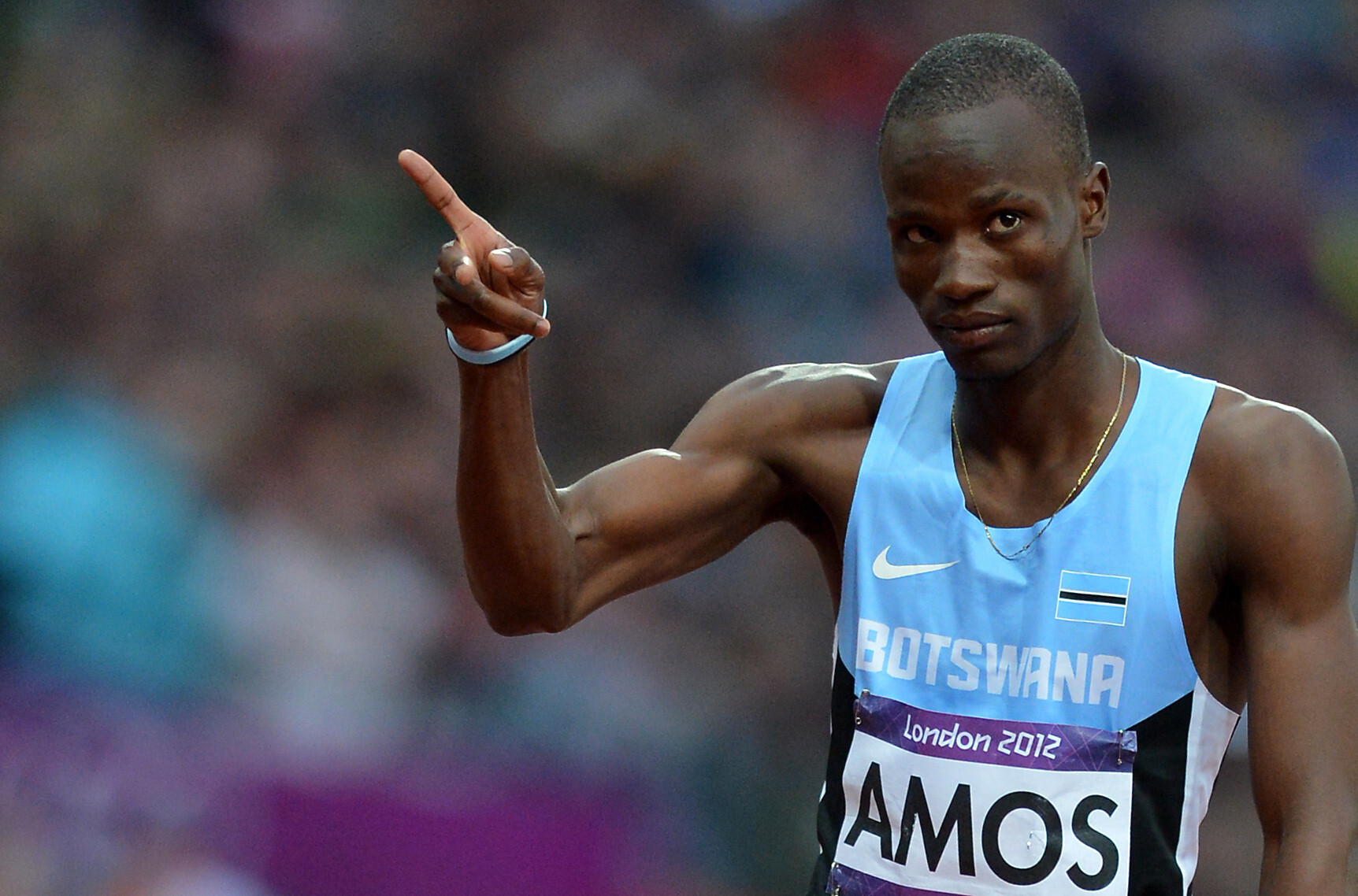
GW1516 was originally developed to treat obesity and diabetes, but is not approved for human use, since it was discovered to be carcinogenic. It is banned in and out of competition, and not eligible for Therapeutic Use Exemption (TUE). A USADA bulletin from 2019 says GW1516 is also sometimes known as cardarine or endurobol and has been found in some supplements, even though it is illegal. In 2017, there were 31 sanctions worldwide related to its use.
The AIU collected the sample from Amos during an out-of-competition test on June 4. Amos was notified of the result while he was preparing for the World Championships in Eugene, Ore., where he was scheduled to compete in the heats of the 800m on July 20. He finished eighth in the 800m final at Tokyo 2020. At Rio in 2016, he failed to make it out of the heats.
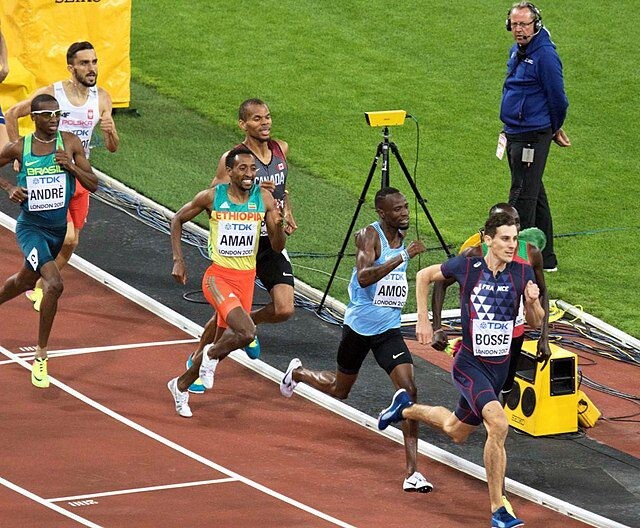
Amos’s silver in the 800m from the London Olympics was Botswana’s first Olympic medal and ranks as the third-fastest 800m time ever (1:41.73) behind Kenya’s David Rudisha (1:40.91) and Wilson Kipketer (1:41.11).
Amos has spent his last six seasons training with Mark Rowland and the Nike Oregon Track Club. Rowland recently left the club to start a new role as a coach with the Athletics Canada West Hub.
The AIU says the length of his suspension will be determined at a later date.
(07/13/2022) ⚡AMPby Marley Dickinson
Mike Wardian talks about his transcontinental run, "I want to run across all the continents, and then also run on the Moon"
Mike Wardian wrapped up his transcontinental run across the U.S. just over a week ago, running 107 miles on his last day to finish in Rehoboth Beach, Delaware. The renowned endurance athlete lives in Arlington, Va., and had been dreaming of this adventure for decades. Partially inspired by the fictional character Forrest Gump, Wardian ran with the support of a crew chief, Erik Belz, who had previously helped ultrarunner Karl Meltzer run a record time on the Appalachian Trail.
He was joined along the way by people who came out to cheer him on and run with him for some portion of the journey, and he managed to raise over $100,000 dollars for the organization World Vision, which helps families access clean drinking water.
Wardian is known for his many extreme accomplishments, including setting the World record for the fastest time to run seven marathons on seven continents in seven days. Throughout his run, Wardian posted daily highlights on Instagram, including what audiobook he’d listened to that day, a favorite quote-of-the-day, and notable observations or memorable moments. We caught up with Wardian to chat about his journey and to see where he’s headed next.
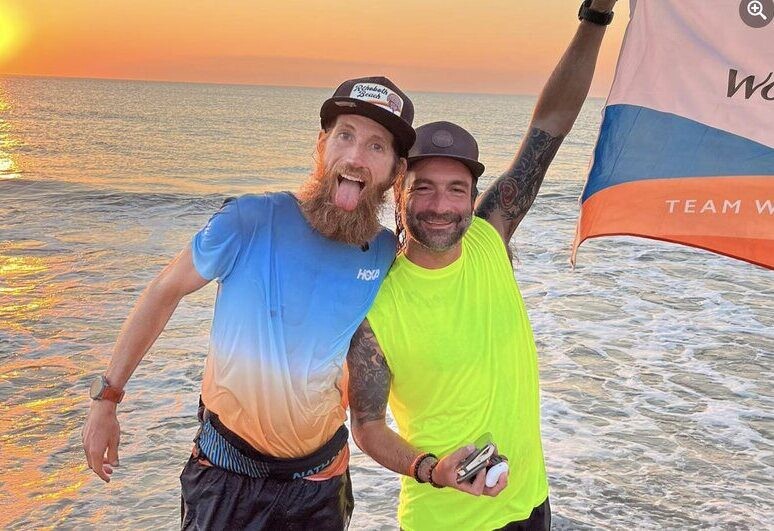
Congrats on the amazing journey! Who made up the stellar crew that helped you?
So my crew was Belz, my dad (Dick Wardian), and a friend named Henry.
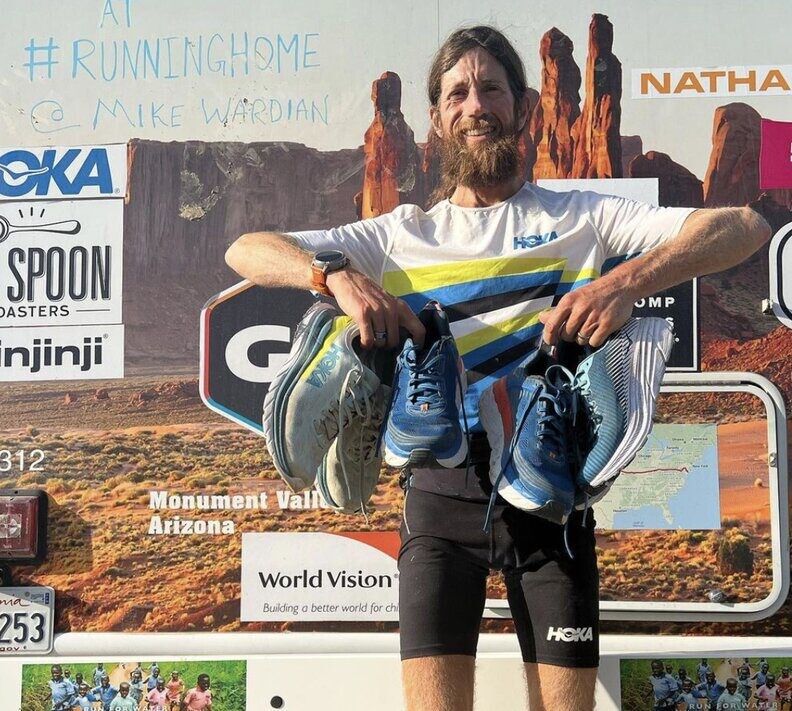
What was the absolute best day of the whole run?
The best day of the whole trip was the last day, of course. Seeing my family and finishing on the beach with the sun rising, just being with all the friends and the completion of the journey made it really special.
Worst day?
The worst day was when someone threw a hamburger at us in Ohio. It hit my friend, a vegan, in the stomach. Just so rude and mean.
What was the most useful advice you received going into this journey? What advice would you give anyone thinking about trying a transcontinental run?
I think the best advice I received was just to be consistent. Don’t overreach–I think I would give that same advice to somebody else.
What state had the safest roads for running?
Surprisingly the best roads were Delaware and Utah because I was running on the highway.
You did an incredible job raising so much money for World Vision USA! What inspired you to choose that charity for your fundraiser?
I was inspired to choose World Vision USA as a fundraiser because I work with them regularly sorting out humanitarian food and shipments. I know what good work they do and that they were a worthwhile charity.
What’s next for you?
I have so many things I want to tackle next! I want to row across the Atlantic and I want to run the Appalachian Trail. I want to do the Pacific Crest Trail, run across all the continents and then also run on the Moon.
(07/12/2022) ⚡AMPby Keeley Milne
Mo Farah: I was smuggled into UK and this isn’t my real name
Multiple Olympic and world champion reveals in BBC documentary that he was trafficked under a false name as a child
The Home Office has confirmed it will not be taking any action against Mo Farah following revelations in a BBC documentary that he was smuggled into the country as a child under a false name. “No action whatsoever will be taken against Sir Mo and to suggest otherwise is wrong,” said a statement.

The BBC programme, which is called The Real Mo Farah and which airs on Wednesday night, tells the story of the athlete being originally called Hussein Abdi Kahin but being illegally trafficked into Britain using the name of another child.
He had previously claimed he had left Somalia aged eight to join his father, after his parents made the decision to send three of their six children to London for the chance of a better life.

But in the BBC documentary the 39-year-old admits he was brought to London by a stranger under an assumed name.
“Most people know me as Mo Farah, but it’s not my name or it’s not the reality,” he says. “The real story is I was born in Somaliland, north of Somalia, as Hussein Abdi Kahin. Despite what I’ve said in the past, my parents never lived in the UK.”
In the programme he adds: “When I was four my dad was killed in the civil war, you know as a family we were torn apart. I was separated from my mother, and I was brought into the UK illegally under the name of another child called Mohamed Farah.”
Farah said he and his twin, Hassan, were sent by their mother to live with an uncle in neighbouring Djibouti and that he would be taken to Europe and renamed Mohamed. “As a kid, you never think beyond what you’ve been told,” he says.
But on arriving in England, he says: “I had all the contact details for my relative and once we got to her house, the lady took it off me and right in front of me ripped them up and put it in the bin, and at that moment I knew I was in trouble.”
After London 2012 he brought out an autobiography that talked about growing up in Djibouti near the border with Somalia but he has now decided to talk about something which has always been buried in his past.
“I’ve been keeping it for so long, it’s been difficult because you don’t want to face it and often my kids ask questions, ‘Dad, how come this?’ And you’ve always got an answer for everything, but you haven’t got an answer for that.”
In the documentary, Farah says he has concerns about his immigration status. But the Home Office has confirmed that he would not face any repercussions. “No action whatsoever will be taken against Sir Mo and to suggest otherwise is wrong,” a spokesperson said.
The documentary, which was a year in the making, ends with Farah speaking to the real Mohamed Farah, whose identity he took entering the UK, before adding Farah will continue to go by the name he was given when he entered the UK. There have also been unsuccessful attempts to speak to the woman who trafficked Farah to England.
The story has received widespread coverage, featuring on many of the front pages of British newspapers on Tuesday. Among the many people to comment, Mayor of London, Sadiq Khan, said: “Everything Sir Mo has survived proves he’s not only one of our greatest Olympians but a truly great Briton. Thank you for sharing your story and shining a spotlight on these awful crimes. We must build a future where these tragic events are never repeated.”
(07/12/2022) ⚡AMPby Athletics Weekly
Ten tips you should know when preparing for a marathon
Running a marathon is no easy task. It takes months of preparation, and even then, there are no guarantees you will make it to the finish line. But for those who have put in the hard work and dedication, crossing that finish line is an unforgettable experience.
Marathons are not only a test of your physical strength but also your mental fortitude.
Here are 10 things you should know before running a marathon:
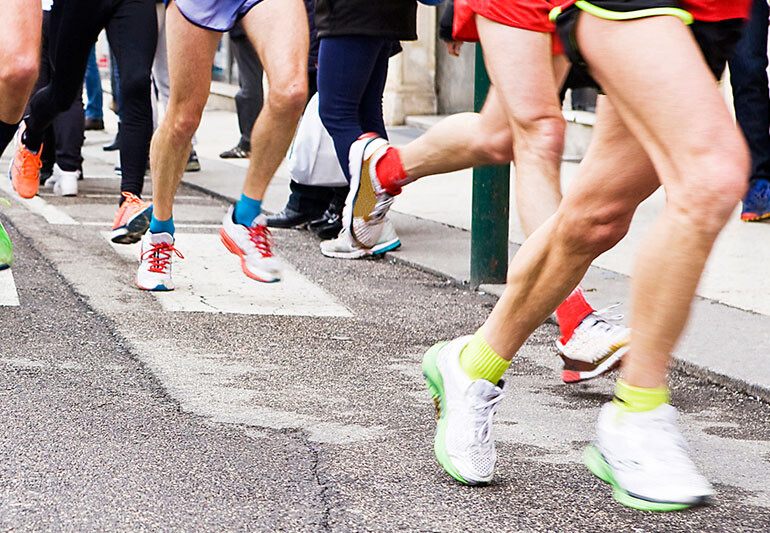
Get Your Nutrition In Check
Proper nutrition is essential for any runner, but it becomes even more important when training for a marathon. Be sure to fuel your body with plenty of carbohydrates to give you energy for long runs and speed workouts. And don’t forget to hydrate!
Drink plenty of water and sports drinks throughout the day to stay hydrated. Find out more about proper fuel for runners here.
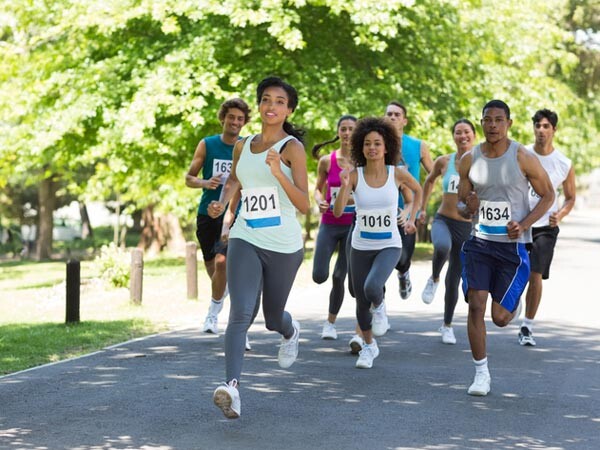
Build Up Your Mileage
Once you have a few weeks of running under your belt, increase your mileage. A good rule of thumb is adding 10% to your weekly mileage. So if you’re running 20 miles per week, increase it to 22 miles the following week.
Be sure to listen to your body during this process. If you’re feeling fatigued or have aches and pains, take a step back and reduce your mileage for a week or two.
Incorporate Speed Workouts
In addition to long runs, include some speed work in your training program. Speed workouts help to improve your endurance and can make running at a slower pace feel easier.
Some typical speed workouts include tempo runs, intervals, and fartleks. Tempo runs are runs performed at a slightly faster pace than your marathon goal pace. Intervals consist of alternating between periods of fast running and slower recovery paces. Fartleks are unstructured speed workouts where you pick up the pace for short periods throughout your run.
Start Slow
Don’t try to run 26.2 miles on your first training run. Ease into it by starting with shorter runs and gradually increasing your mileage. Try running 3-4 times a week to start.
By starting slow, you reduce your risk of injury and allow your body to get used to the demands of running long distances. This can help you stay motivated and avoid burnout as you prepare for the marathon.
Create A Training Plan
With so many different training programs available, it can be tough to know where to start. The best way to find a training plan that works for you is to consult with a coach or experienced runner. They can help you create a custom plan based on your goals, schedule, and current fitness level.
Having a plan to follow will help you stay on track and make the most of your training. It can also be helpful to write down your weekly workouts so you can see your progress over time.
Join A Running Group
One of the best ways to stay motivated during training is to join a running group. These groups meet regularly to run together and often have members of different abilities.
Not only will you make new friends, but you’ll also have access to experienced runners who can offer advice and support. And on those days when you don’t feel like running, the group atmosphere can help give you the motivation you need to get out the door.
Rest & Recovery
Rest and recovery are a vital part of any training program. Be sure to take one or two days off from running each week to allow your body to recover. And don’t forget to include cross-training activities such as biking, swimming, and strength training.
These activities can help improve your fitness while giving your joints a break from the impact of running.
Set Realistic Goals
When setting goals for your marathon training, make them realistic. Trying to do too much too soon can lead to burnout and injuries. Start by selecting a plan for how many miles you want to run each week. Then gradually increase your mileage until you’re running the distance you need to complete a marathon.
Setting time goals for your long runs and speed workouts is also essential. This will help you gauge your progress and ensure you’re on track for race day.
Stay Motivated
There will be days during training when you don’t feel like running. That’s normal! But it’s essential to find ways to stay motivated to stick with your program.
Some things that may help include:
Setting goals.
Listening to music.
Joining a running group.
Finding a training buddy.
Remember, the key is to keep moving forward even on the days when you don’t feel like it.
Be Prepared For Race Day
After all your hard work, it’s time for the big day! Make sure you’re prepared by doing a dress rehearsal a few weeks before the marathon. This means running the same distance you’ll be racing at the same time of day, wearing the same clothes, and using the same fueling strategy.
This will help you identify any potential problems so you can fix them before race day. It will also allow you to practice your race-day routine, so you know what to expect on the big day.
Marathons are a test of endurance, both mental and physical. But with proper training and preparation, you can cross the finish line with a sense of accomplishment. Use these tips to make the most of your marathon training and have a successful race.
By following these tips, you’ll be well on crossing the finish line of your first marathon!
(07/12/2022) ⚡AMPby Athletics Weekly
Chinese Su Bingtian will have season's debut at World Athletics Champs
A total of 53 Chinese athletes, including veterans Su Bingtian, Xie Zhenye and Gong Lijiao, will compete for more glory at the upcoming World Athletics Championships set to start on Friday in Eugene, Oregon in the U.S.
The first-ever Asian sprinter to break the 10-second barrier in the 100-meter track and field event, 33-year-old Su is the fastest Asian man with a personal best of 9.83 seconds. He will have his season's debut as the only Chinese to participate in the red hot men's 100m event at the World Championships, where he will face a line of superstar rivals.
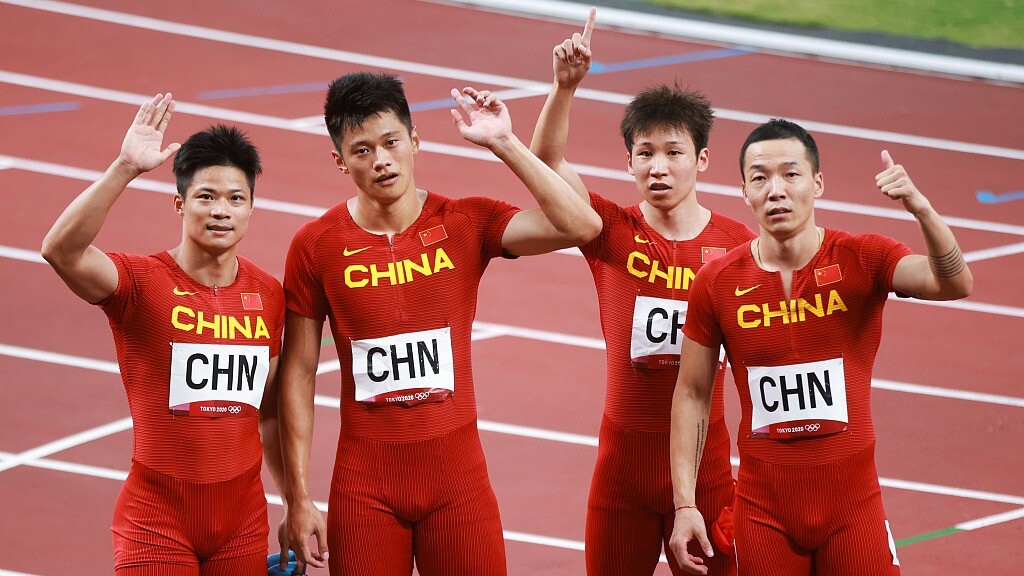
China's Xie Zhenye will compete in the men's 200m. Meanwhile, Xie, Su, Wu Zhiqiang, Tang Xingqiang, Chen Guanfeng and Deng Zhijian are down to compete in the men's 4X100m. The Chinese relay team was upgraded to a historic bronze medal at last year's Tokyo Olympics after Team Great Britain were stripped of the silver over a doping violation.
Other highlights for Team China will include Gong Lijiao's attempt to win her third consecutive world championship title in women's shot put and women's race walks attended by defending champion Liu Hong and teammates Qieyang Shenjie, Ma Zhenxia and Wu Quanming.
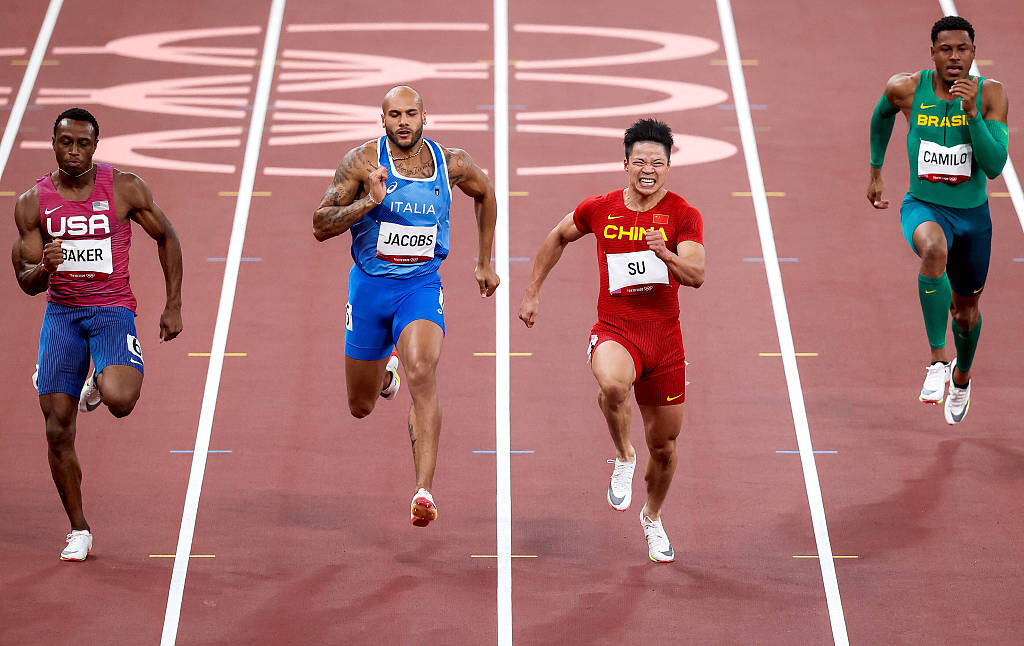
Olympic champions in women's javelin Liu Shiying and Lyu Huihui are also sure to attract attention.
However, event host the U.S. are almost sure to dominate, having won 170 gold medals since the first championship in 1983 – 110 more than next-best Kenya.
Team USA's 151-strong roster features nine defending champions and 20 medalists from last year's Tokyo Olympics and, for a 10th and final time, superstar Allyson Felix, aged 36.
Missing the event this year is Olympic and world 400 meters champion Bahamian Steven Gardiner, who will not defend his World Championship title due to UTE tendon inflammation.
In the United States for the first time, the 18th edition of the World Championships has seen a handful of late withdrawals, including Olympic women's marathon champion Kenyan Peres Jepchirchir, who will miss out with a right hip injury.
Olympic gold medalist Lamont Marcell Jacobs returns to the 100m big stage after muscle injuries ruled him out of several Diamond League meets.
Team USA have high hopes of making it three in a row after the disappointment at the Tokyo Olympics, where the Italian team took a shock gold.
Tokyo silver medalist Fred Kerley has been in fabulous form this season and could well be part of a home podium sweep alongside defending champion Christian Coleman and Trayvon Bromell.
(07/12/2022) ⚡AMPWorld Athletics Championships Budapest23
Budapest is a true capital of sports, which is one of the reasons why the World Athletics Championships Budapest 2023 is in the right place here. Here are some of the most important world athletics events and venues where we have witnessed moments of sporting history. Throughout the 125-year history of Hungarian athletics, the country and Budapest have hosted numerous...
more...Inspired by his dream of competing in the Boston Marathon, Bob Anderson started Distance Running News In 1966
Bob Anderson (publisher of My Best Runs) started Distance Running News in 1966, while he was still a high school student. Retitled Runner’s World in 1970, the magazine played a pivotal role in establishing running’s credentials as a legitimate sport.
Feature articles on training, diet, race tactics, and hotly contested reviews of running shoes delivered Runner’s World an audience in the millions, before the company was sold in 1984. Nearly 40 years later, Bob is still an exercise evangelist and a serial entrepreneur. Just don’t call him a jogger, he was only interested in racing!
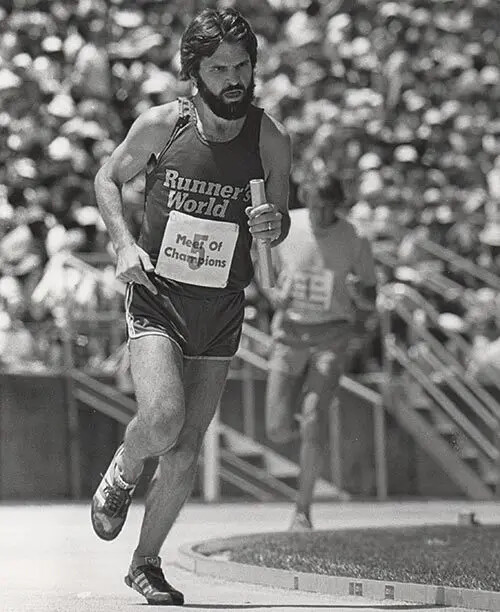
ANDERSON HAS COMPETED IN NEARLY 1000 RACES
1. Why do you love running so much?
I love running simply because it gives me a lot of self-confidence. Plus you can run anyplace, anywhere, anytime — all you need is a good pair of shoes! It’s just you and your body in the fresh air. I also love that feeling when your heart’s pumping, things are clicking and you’re running as fast as you can. It’s an adrenaline rush. I’m 74 years old and I still run about 30 miles a week and walk another 30 miles. My little dog Daisy joins me for about half of this.
2. That is an amazing effort. Back in the early 70s, running wasn’t considered a sport in the way that football or baseball is, was it? How would you describe it?
Well, my dad, when he was in his 40s, wouldn’t have been caught dead in a pair of running shorts outside, it was just way too weird! I grew up in Kansas and ran cross-country and track in high school. But once the season ended, there was nothing, and college running was really only for superstars. People just didn’t run for fun and fitness. There were a few pockets of hardcore runners (like in San Franciso), and the Boston Marathon was around, but only a few hundred people entered races in those early years.
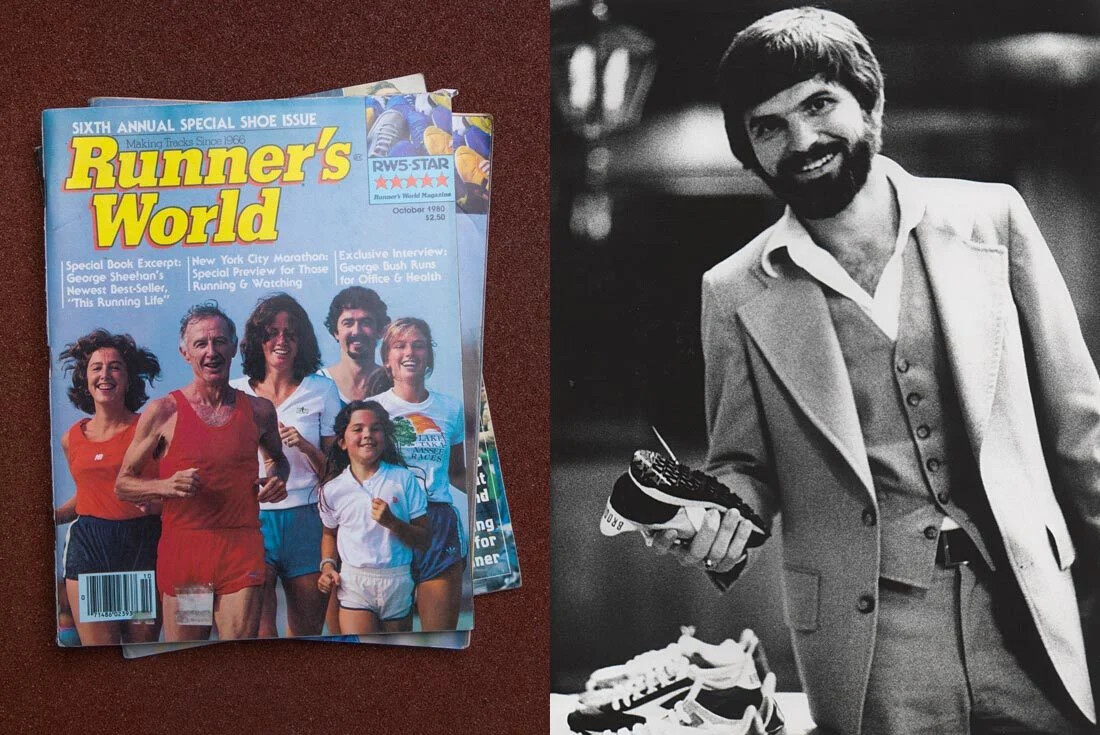
A STACK OF HISTORY
3. A lot of things conspired to create the jogging boom in the late 1970s. How did the marathon become a phenomenon?
I have to say one thing about jogging — I’ve never jogged a mile in my life! I run, and I run races! Anyway, what really helped put running on the map was when Dr. Kenneth Cooper came out with the book Aerobics. A few years earlier, President John F. Kennedy started the 50-mile hike challenge. Those two events really jumpstarted the running scene in America.
In January 1966, I published the first issue of Distance Running News. Even though I only printed a thousand copies, lots of people wanted to read it. The next thing I knew, people started sending in subscription money. New Balance was one of my first advertisers. I think they paid $10 for a little ad.
4. Bargain!
It started with two issues a year, then we went from four to six, then monthly. We went from black and white photos to colour. I started with a hundred bucks, and by the time I sold the magazine in 1984, we had 2,500,000 readers! We changed the name to Runner’s World in 1970, and the magazine became the Bible of running.
5. Did you have a grand plan for the business?
Not really. I was still in high school at the time! I was interested in running the Boston Marathon but had no idea how to train or go about it. I was reading every single word I could find about running, which wasn’t much. On the way to a cross-country meet one day I said to my best friend (Dave Zimmerman), "I want to start a magazine about running. We’ll call it Distance Running News!" He said great!
A YOUNG BOB BESIDE HIS HANDY WORK
6. It sounds like the magazine fostered a great sense of community.
Absolutely. You’re right, it was all about bringing people together, which is exactly what social media does for people today. A kid living in Cheyenne, Wyoming, who absolutely loved running, but was into it by himself, was suddenly able to find out what was happening in the world of running by reading the magazine.
We covered all sorts of topics, including articles on how to break through the pain barrier when you hit the wall at 20 miles, training information, dietary advice, running after 40, and women’s running. When I started Runner’s World, a woman was not allowed to run more than a half-mile.
7. Whoa! I have never heard that before.
I mean, it’s hard to believe that was the case, but a lot of people thought the female body was just not made to run beyond a half-mile. As far as I was concerned, people are people, and it didn’t matter if you were a man or a woman. I didn’t care if you were 10 years old or 75 years old — or even 100 years old! — the fact of the matter is running should be for everyone. I remember Kathy Switzer was thrown out of the Boston Marathon in 1967. It was crazy, but women were not allowed to run 26 miles at that time. That rule didn’t change until 1972. Anyway, those are the sorts of things we were dealing with in those early days, and we covered it all.
8. The athletic brands were also in their infancy during this period. Did you have any inkling how big brands like New Balance would become?
I wish I could say I did. [laughs] At the time, the sneaker companies were really small firms. New Balance was based up in the North East of the USA and other brands were dotted around America. To put things into perspective, back in those days, a best-selling running shoe maybe sold a thousand pairs. That’s how small the business of running was.
In 1968 I asked some experienced runners if 10,000 subscribers was possible. They told me that figure was just unbelievable and that I’d never reach it. Those people I talked to clearly thought I was just a kid with crazy dreams, but I didn’t start Runner’s World to make money — I just wanted to help the sport! In my mind that was a much bigger goal.
9. Well, I’d say you had the last laugh. Do you remember when your first running shoe edition was printed?
Oh yeah, our first shoe issue came out in 1967, and we reported on all the brands. As the years went on we did it annually, and it became the biggest issue of the year by far, with close to four million readers. We hired Peter Kavanaugh at Penn State University — who we paid $25,000 for equipment — and sent him all the shoes to test. We included feedback from readers in the results too. We would end up ranking the shoes starting with the number one running shoe of that year.
10. Sounds like a recipe for drama and intrigue.
Yeah, it was. [laughs] Because we rated a shoe number one, the controversy was never far away. Some brands felt we had too much power and … actually one company thought that we were being ‘influenced’ and decided to pull out of the shoe issue, thinking that their second place ranking should have been higher. Funnily enough, we sold more copies of that October shoe issue than we ever had because the controversy made the national news. We were fully investigated and cleared, of course, because we were doing nothing wrong. We just presented the facts as we saw them.
11. What are your memories of working with Jim Davis, president of New Balance?
First of all, Jim was very personable and he didn’t need to be in the limelight. He seemed like a really hardworking guy who really cared about running shoes and making the very best product that he could. I was very impressed, and you just got the feeling he was gonna make his brand work. He made and sold shoes in different width sizes, and he was willing to roll the dice on that. And here we are today, New Balance is a huge company. It’s a very impressive story.
(Jim Davis bought a small Boston Shoemaker in 1972 and turned it into a $3.6 billion New Balance company. Jim is the chairman of New Balance and his wife Anna joined the company in 1977 and is the vice chairman. Jim and Anna's net worth is estamated to be 4.6 billion dollars.)
12. You sold Runner’s World in 1984, by which time you had 300 employees…
We had 350 employees actually. [laughs] I was going through a divorce at that time and needed to sell the company. It’s funny, I started the magazine because I wanted to run the Boston Marathon, but I literally became a weekend runner only because my day was pretty full from six in the morning until eight at night. However, I was still able to run sub-six-minute miles in races on the weekend.
13. That’s quite ironic, isn’t it?
Yeah, it is. I wish I had followed my own advice. As I’ve gotten older, when I look back, my whole life was Runner’s World before the age of 35. Instead of taking off for an afternoon run, I just worked really hard. Luckily I’m still running 30 to 35 miles every week. I finally ran the Boston Marathon in 2013. It only took me 45 years to be on the starting line.
14. And was it as amazing as you thought it would be?
Oh my gosh, I’ve run close to a thousand races in my life but the Boston Marathon is number one. It was just an incredible experience and I was thrilled my wife and son Michael were with me that day. At the same time, that was also the year of the terrible bombing. Luckily I finished about a half hour before that happened. I ran 3:32:17 that day at age 65. I was proud of my time but it only gave me like 9th in my age division.
15. I didn’t connect that tragic year with the Boston race. That should have been a great day for you and a lot of other people.
Yeah, it was great, right up until the point the bomb went off. The experience of finally running through Boston and seeing the crowds was just beyond words. That doesn’t overshadow the victims and all the other people whose lives were destroyed that day, but the Boston Marathon is still an incredible race. What a tragic contrast to the joy that running brings.
16. One last question. You just can't stay away from being part of the running world!
I just love running and it will be part of my life until the end. I am the editor/publisher of our website My Best Runs. As of 2022 we have nearly one million unique readers annually. In 2010 I started a new sport called Double Racing and we established the Double Road Race Federation. The double is a two stage race. Our most popular disance is the Double 15k. We run 10K and then a 5k one hour and 45 minutes after the start of the 10k. Times are added together for scoring. In 2012 I ran 50 races over the course of a year covering 350.8 miles averaging 6:59/mile. A movie A Long Run the movie covers the event.
I also started the Kenyan Athletics Training Academy (KATA) in Thika Kenya (one hour outside of Nairobi) and officially opened it Sept 4, 2021. We currently have 13 Kenyan runners living and training there. We do a monthly 10K time Trial and we have had four of our runners already break 30 minutes. We have a lot of plans and have just started. I am working with an amazing team there who takes care of the day to day. Many have already told us we have one of the nicest if not the nicest "camp" in all of Kenya.
I love running and I love turning on as many people as I can to this amazing sport...Running and Racing!
(07/11/2022) ⚡AMPby Woody (Sneaker Freakers)
Michael Bergeron runs 34:47 10k while juggling a world record
Michael Bergeron of Cavendish, P.E.I. Canada, has broken the 10K joggling world record he has been chasing for the last four years. Bergeron covered 10K in 34 minutes and 47 seconds while juggling three balls around 25 laps of the University of Prince Edward Island Athletics Track.
He previously attempted the 10K record in 2018, but his time was not ratified by Guinness World Records since it was done on an uncertified course. The previous record is held by Toronto’s Michal Kapral in a time of 36:27.

A Guinness World Record doesn’t happen by accident. In order to verify the event, there must be video evidence and two witness statements. Bergeron had several pacers in the race, while his friend Amber MacLeod recorded the race from the infield and his wife Jennie called splits for every 400m lap. “I am ecstatic about this record,” Bergeron says. “Breaking this record kept me motivated to train during the pandemic.”
This record isn’t Bergeron’s first; he currently holds the Guinness World Record for the fastest half marathon while juggling, 1:17:09 at the 2018 Toronto Waterfront Half Marathon.
Bergeron began running track when he was 13 and learned to juggle in high school. He brought his two hobbies together as a dare by a friend in university. He did his first juggling race in 2014 at a local 5K.
(07/11/2022) ⚡AMPby Running Magazine (Marley Dickinson)
World Athletics Championships Oregon22 preview: marathon
Kenya’s Geoffrey Kamworor, whose career was traumatized in June 2020 when he was hit by a motorbike during a training run and required surgery on a broken tibia, is due to contest his first major championship marathon in Eugene on July 17.
The 29-year-old from Nyen was named on the Kenyan team for the World Athletics Championships Oregon22 along with 33-year-old Lawrence Cherono – who missed a medal by one place in the marathon at last year’s Olympics – and 35-year-old Barnabas Kiptum.
Kamworor, confident and outgoing, was flying high when he had his accident.
Although he had performed to high levels on the track, where he earned 10,000m silver at the 2015 World Championships in Beijing, it was on grass and roads that he had excelled, winning the world cross-country senior titles in 2015 and 2017, and world half marathon titles in 2014, 2016 and 2018.
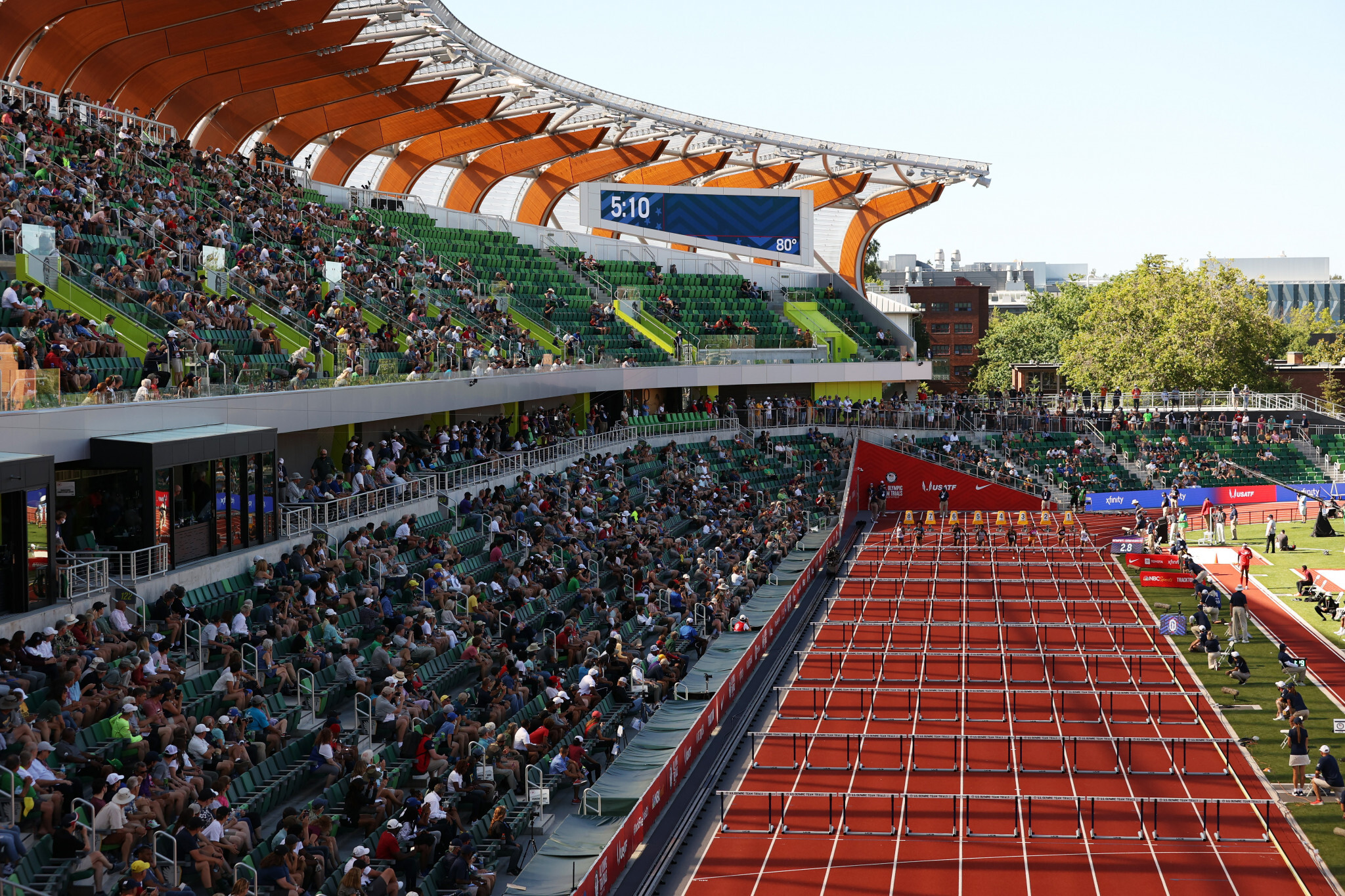
In his first competitive marathon in 2012 he finished third in Berlin in 2:06:12, and he was a consistent presence on the podium at World Majors Marathons thereafter, particularly in New York, where he finished second in 2015, first in 2017, third in 2018 and first again in 2019.
Kamworor ran his first race since the accident in January 2021, winning the Kenyan Police Cross Country Championships before going on to secure a place on Kenya’s Olympic 10,000m team after winning the national trials, only to have to pull out with an ankle injury.
But at the Valencia Marathon last December he was able to perform to the peak of his ability once more as he set a personal best of 2:05:23 in finishing fourth.
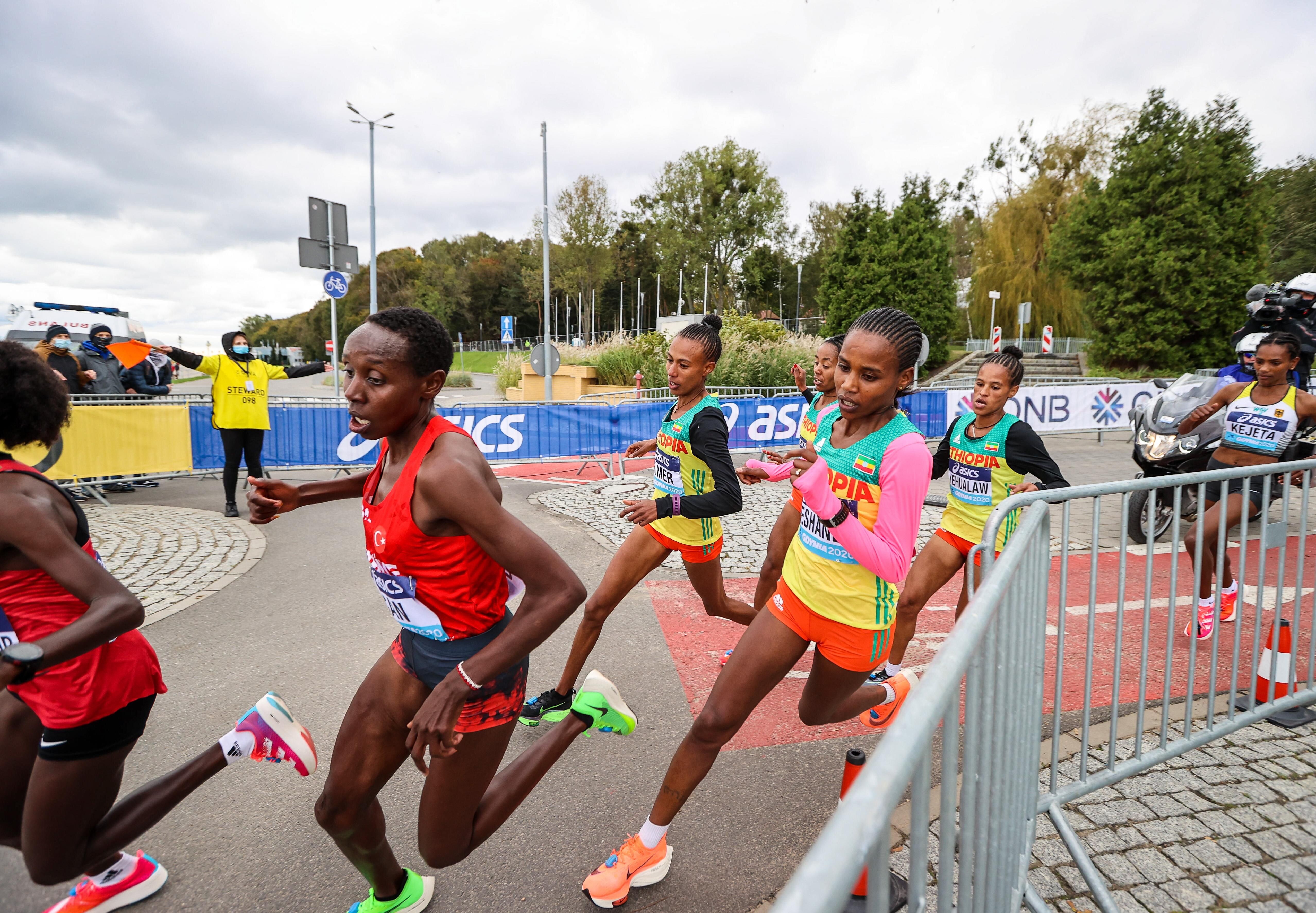
At the previous year’s running in Valencia, Cherono was second in a personal best of 2:03:04, putting him eighth on the world all-time list, having made his World Marathon Majors breakthrough in 2019 when he won in Boston in 2:07:57 and then Chicago in 2:05:45.
Like Kamworor, Kiptum also set a personal best last year as he clocked 2:04:17 in placing third at the Milan Marathon and he has a solid top-three record in virtually every race he has contested.
Such is the depth of Kenyan talent that they can name 2017 world champion Geoffrey Kirui as a reserve.
Meanwhile Kenya’s perennial rivals Ethiopia will be looking to their current world champion Lelisa Desisa, who found the way to win in the steamy heat of Doha three years ago, to make the most of his wild card entry to this year’s competition.
Desisa had early track success, winning the African U20 10,000m title in 2009, and he has since become a highly consistent performer at the highest level, achieving podium finishes four times in New York, including victory in 2018, and four times in Boston, where he won in 2013 and 2015.
He also has championship pedigree, having earned world silver in 2013 six years before his Doha gold, and has a personal best from 2013 of 2:04:45.
The formidable talent Ethiopia can call upon was made clear when it was confirmed that Desisa will have as teammates Tamirat Tola, Mosinet Geremew and Seifa Tura.
Tola earned Olympic 10,000m bronze in 2016 and world marathon silver in 2017. He set his personal best of 2:03:38 last year.
Geremew took silver behind Desisa at the 2019 World Championships, having finished second at that year’s London Marathon in 2:02:55, the third-fastest time in history.
Tura set his personal best of 2:04:29 last year in Milan before going on to win the Chicago Marathon in 2:06:12.
Uganda, the rising nation in distance running, earned this title in 2013 thanks to their 2012 Olympic champion Stephen Kiprotich. But the 33-year-old hasn’t been selected for Oregon, nor have Stephen Kissa, who ran a national record of 2:04:48 in Hamburg earlier this year, and Victor Kiplangat who was third in the second-fastest time ever by a Ugandan, 2:05:09.
Instead, Filex Chemonges, Fred Musobo and Jackson Kiprop will run the World Championships marathon, according to the Uganda Athletics Federation. So Kiprop, who helped Kiprotich to win the 2013 world title, is back at the World Championships for the first time since 2015.
Kissa, meanwhile, is due to be in Oregon in the 10,000m, where he will run with fellow Ugandan Joshua Cheptegei, the world 5000m and 10,000m record-holder, while Kiplangat is reported to be running the Commonwealth Games marathon.
Abdi Nageeye of the Netherlands and Belgium’s Bashir Abdi earned surprise silver and bronze medals respectively at the Olympics last year, but went on to confirm that their performance in Sapporo was anything but a fluke. Abdi set a European record of 2:03:36 to win the Rotterdam Marathon just two months later, while Nageeye was victorious at the Rotterdam Marathon earlier this year in a Dutch record of 2:04:56, finishing ahead of Abdi.
Both men will line up for the marathon in Oregon, only this time it will be less of a surprise if they reach the podium.
The United States will be looking to the highly consistent figure of Galen Rupp. After taking Olympic 10,000m silver in 2012, Rupp moved to the roads and earned Olympic bronze in 2016.
In 2017 he became the first US man to win the Chicago Marathon since 2002 and finished second at the Boston Marathon. He qualified for Oregon by finishing eighth at last year’s Olympics.
The championships will be in Rupp’s home state, in the same city where he made his first Olympic team in 2008 while he was a student at the University of Oregon.
The other US selections are Elkanah Kibet and Colin Mickow. Kibet, who is with the US military, finished 16th at the 2017 World Championships and set a personal best of 2:11:15 in finishing fourth at last year’s New York marathon.
Mickow is a 32-year-old full-time financial analyst for an organic and natural foods distributor who took up road running six years after finishing his college track career. He qualified for his first international vest after being the top US man home at last year’s Chicago Marathon, where he was sixth in 2:13:31.
Japan’s trio of male runners will be headed by Kengo Suzuki, who set a national record of 2:04:56 in February 2021 at the Lake Biwa marathon in Otsu. Daniel Do Nascimento of Brazil has run a 2:04:51 personal best this year and is another one to watch.
The three-loop World Athletics Championships marathon course only varies by about seven meters between its high and low points and the weather is likely to be considerably cooler than it was in Sapporo or Doha, where the men's marathon had to be held at midnight and the start time temperature was 29C/84F with 51% humidity.
Women's marathon
Ruth Chepngetich will defend her marathon title at the World Athletics Championships Oregon22 on July 18 by virtue of a wild card.
Chepngetich claimed the first gold medal of the 2019 World Championships, clocking 2:32:43 in the steamy heat to gain her first major gold.
She went on to finish third at the 2020 London Marathon before a roller coaster 2021, when she set a world record of 1:04:02 at the Istanbul Half Marathon, failed to finish the Tokyo 2020 Marathon in Sapporo but then won the Chicago Marathon.
At this year’s Nagoya Women's Marathon she won in 2:17:18, just 10 seconds off her personal best and the second-fastest ever women-only marathon.
She will be joined on the Kenyan team in Oregon by Judith Jeptum and Angela Tanui. Jeptum set a French all-comers’ record of 2:19:48 to win the Paris Marathon this year, while Tanui won the 2021 Amsterdam Marathon in 2:17:57.
Ethiopia will be represented by Gotytom Gebreslase, who won the 2021 Berlin Marathon on her debut and finished third in this year’s Tokyo Marathon in 2:18:18, Ababel Yeshaneh, second at the 2019 Chicago Marathon in a personal best of 2:20:51, and Ashete Bekere, third in last year’s London Marathon in 2:18:18, who has run 2:17:58 this year.
USA’s Keira D’Amato, who broke the North American record when winning January’s Houston Marathon in 2:19:12 – taking 24 seconds off the mark set by Deena Kastor in 2006 – has answered a late call to join the host nation’s team following the withdrawal of Olympic bronze medalist Molly Seidel.
Seidel has been suffering from a hip injury that forced her to drop out of the Boston Marathon in April and withdrew from the team after being unable to resolve her issue, giving the 37-year-old D’Amato, who only began serious marathon running in 2017, three weeks to prepare, but she is reported to be in “great shape”.
Her teammates will be Emma Bates, runner-up at last year’s Chicago Marathon, and Sara Hall, who finished second at the 2020 London Marathon and third at last year’s Chicago Marathon.
Japan has named Mizuki Matsuda, who has a personal best of 2:20:52, Mao Ichiyama, who has run 2:21:02, and Hitomi Niiya, who has a best of 2:21:17.
Britain will be represented by Rose Harvey, Olympian Jess Piasecki and Charlotte Purdue, who ran a personal best of 2:23:26 in finishing 10th at last year’s London Marathon.
Other names to watch out for are Bahrain’s Eunice Chumba, who ran 2:20:02 in Seoul in April this year, and Israel’s European 10,000m champion Lonah Salpeter, who won the 2020 Tokyo Marathon in 2:17:45 and was going well in the lead group at last year’s Olympic marathon before dropping down to 66th place in the closing stages.
After also dropping out of the 2019 World Championships marathon, Salpeter will be seeking to make the global impact her talent warrants.
Meanwhile Eritrea’s Nazret Weldu, who has run a personal best of 2:21:56 this year, is another one to watch.
(07/11/2022) ⚡AMPby World Athletics
World Athletics Championships Budapest23
Budapest is a true capital of sports, which is one of the reasons why the World Athletics Championships Budapest 2023 is in the right place here. Here are some of the most important world athletics events and venues where we have witnessed moments of sporting history. Throughout the 125-year history of Hungarian athletics, the country and Budapest have hosted numerous...
more...Jemal Yimer and Rosemary Wanjiru take wins at Utica Boilermaker
Jemal Yimer Mekonnen of Ethiopia won the 45th running of the Boilermaker 15K Road Race presented by Excellus BlueCross Blue Shield, smashing a 12-year-old course record by 8 seconds in the race's return to its traditional first Sunday in July. Rosemary Wanjiru of Kenya took home the women's crown and a $10,000 Super Bonus as part of the Professional Road Racing (PRRO) 25th Championship.
Mekonnen won the 9.3 mile race with a time of 42:38, overtaking Edwin Kimutai of Kenya in the final mile and taking the win by 2 seconds. Mekonnen took home $7000 for winning the Boilermaker and a $2500 bonus for winning the PRRO Championship. He was not eligible for the PRRO Super Bonus, which requires a win in a previous series race.
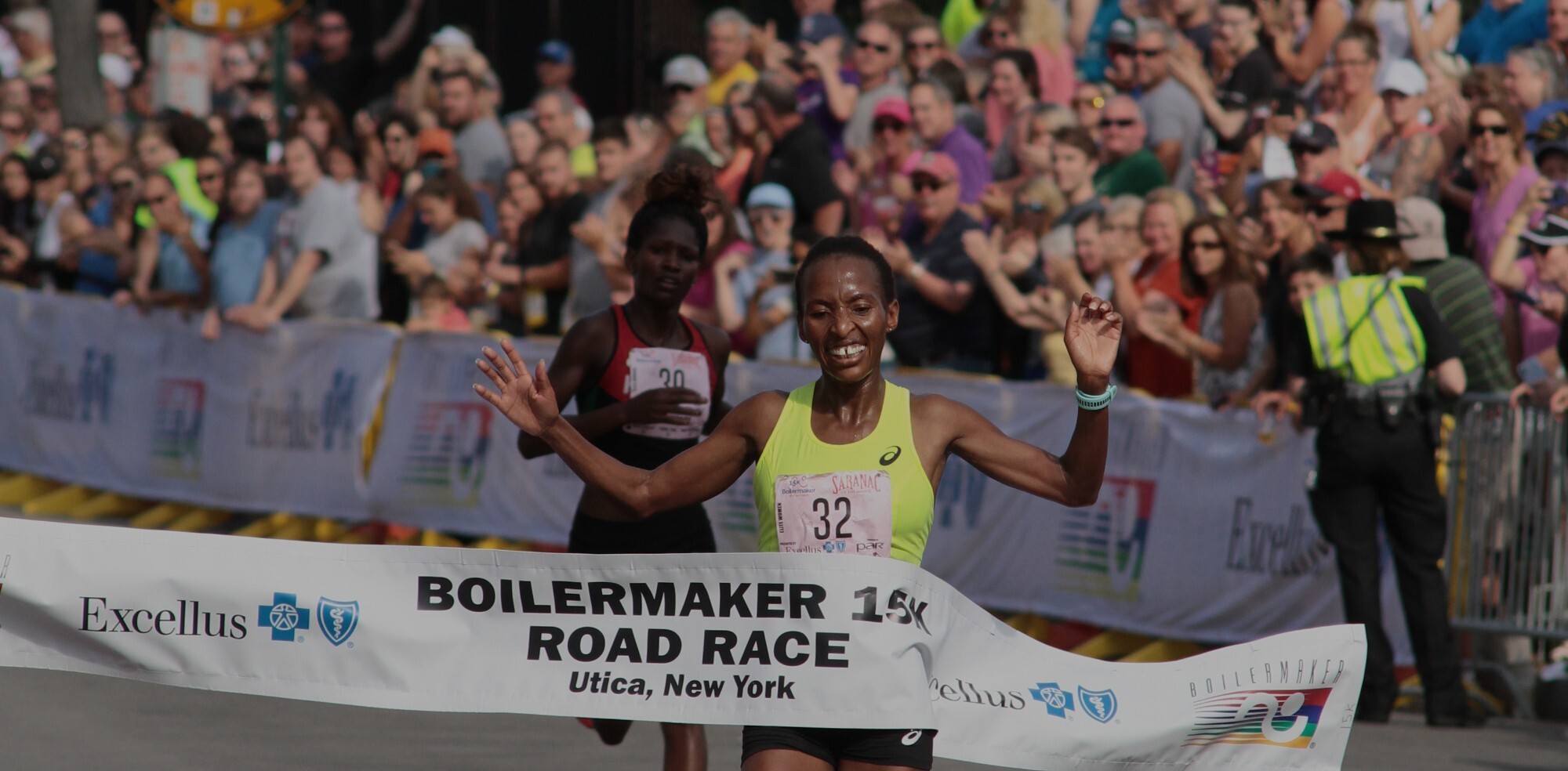
Mekonnen bested the Men's Open record of 42:46 set by Lelisa Desisa of Ethiopia in 2010.
Wanjiru, who previously won the Bloomsday Run in 2019, bested fellow-Kenyan Veronica Nyaru Wanj by nearly 20 seconds, finishing the race in 48:54. The women's course record is held by Edna Kiplagat of Kenya, who won the 2010 race with a time of 47:57.

Wanjiru leaves the race as the PRRO Series Champion, winning $7000 from the Boilermaker in addition to the super bonus prize money from PRRO.
Sam Chelanga of Columbia, SC, the top American male, finished third overall with a time of 43:09, while the top American woman was Carrie Verdon of Boulder, CO. Verdon was the fifth overall female, finishing in 49:37.
As part of the PRRO Championship, runners who were eligible for the PRRO Super Bonus who finish in positions 2-10 in the men's and women's open divisions receive a $1500 bonus. On the men's side, Kimutai earned the $1500 PRRO bonus for his second-place finish in the men's open division, in addition to $4000 from the Boilermaker. On the women's side, Birukayit Degafa earned the $1500 PRRO bonus, in addition to $1500 for her fourth-place Boilermaker finish, while Susanna Sullivan takes home the $1500 PRRO bonus to go along with the $1000 she won for finishing sixth.
Last year's men's open winner, Syracuse native Stephen Rathbun, who now lives in Springfield, NJ, finished 23rd with a time of 47:15. Interestingly, Rathbun's finishing time was 17 seconds faster than his winning time from the October 2021 race. New Hartford native Savannah Boucher of San Antonio, TX, who won the women's open race in 2021 with a time of 56:24 was 14th in the women's open division with a time of 54:40.
Daniel S. Romanchuk of Champaign, IL, the world's top ranked wheelchair athlete, won the Boilermaker Men's 15K Wheelchair Race presented by Sitrin and NBT Bank with a time of 31:33, besting his own course record, set in 2018, by one second. Local favorite Hermin Garic of Utica finished second in the men's wheelchair division with a time of 35:25.
Jenna Fesemyer of Champaign, IL, won the women's race with a time of 43:01. Emily Sweeney of Montrose, NY successfully completed the Sitrin Wheelchair Challenge, finishing in 1:14:15, earning a custom-made racing wheelchair.
The race returned to its traditional second Sunday in July for the first time since 2019. A total of 5848 runners finished the 15K presented by Excellus BlueCross BlueShield, while 2848 finished the 5K presented by Utica National.
Michael Hennelly of Suffern, NY won the men's 5K with a time of 16:04, while Tricia Longo of Waterford, NY won the women's race in 17:49.
(07/11/2022) ⚡AMPby Glen Andrews
Boilermaker 15k
The Boilermaker 15K is the premier event of Boilermaker Weekend. This world krenowned race is often referred to as the country's best 15K. The Boilermaker 15K is recognized for its entertaining yet challenging course and racing's best post-race party, hosted by the F.X. Matt Brewing Company, featuring Saranac beer and a live concert! With 3 ice and water stops every...
more...These two downhill workouts will make you stronger
The warmer months are the perfect time to try some new terrain, whether that means signing up for a trail race or trying out a hilly road route. While you might remember to add uphill workouts into your routine, maximizing speed and skill on the downhill is often neglected. Here are two workouts to incorporate into your regular training that will prep you to tackle those downhills. You can run these sessions on trails, or make them work on city paths or sidewalks.
As you run downhill, try to land with your feet underneath you, and imagine that your arms and core are a source of stability. Running downhill takes some practice, so make sure to always maintain a pace that feels safe to you. Practice landing your feet gently and smoothly.
Downhill fartlek
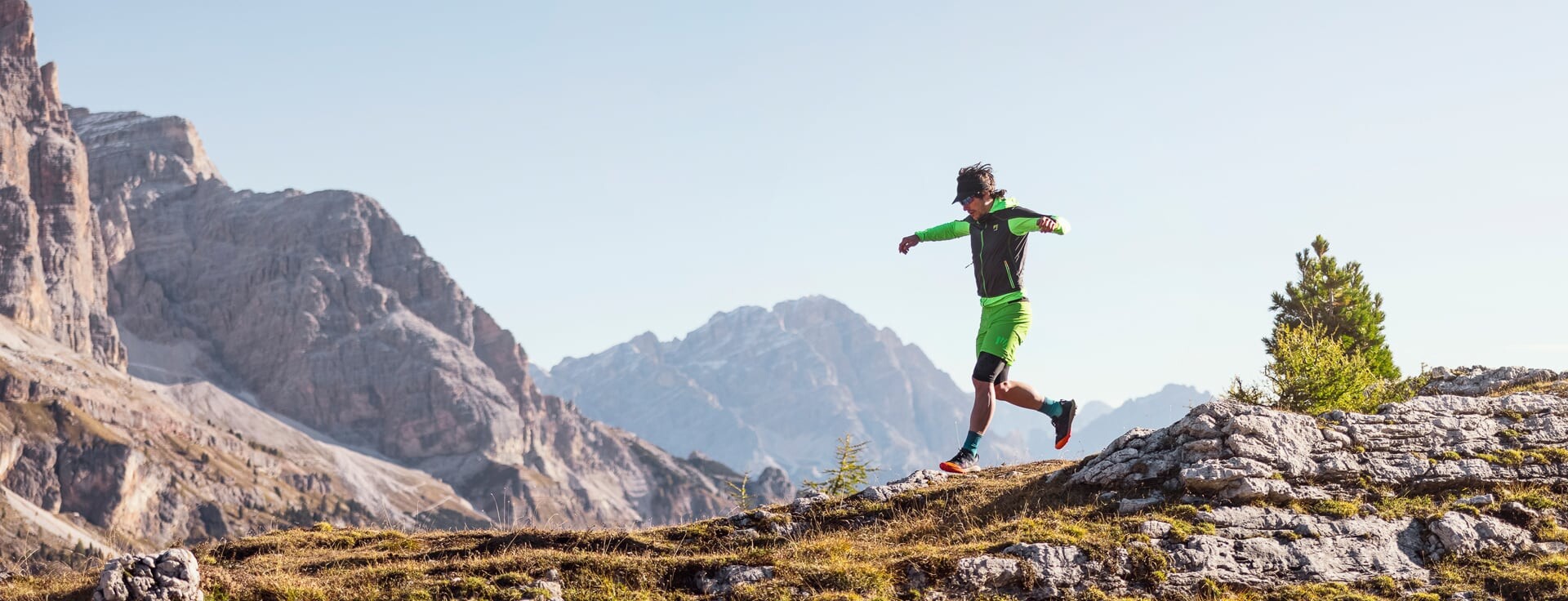
Fartlek is a Swedish word meaning speed play. A fartlek training session involves running continuously, while increasing and decreasing speed and intensity.
Take this workout to a path or sidewalk that has some hills, along with some flatter sections.

Warm up with 15 minutes of easy running.
Turn the rest of your run into a fartlek by increasing your speed to race pace on each downhill. After you reach flatter ground, recover with easy running as necessary. Repeat on 4-10 hills throughout the run.
Cool down with 10-15 minutes of easy running.
Leg crushers
For this workout, find a fairly steep hill, but one that you can comfortably run down at a fast pace without losing control.
Warm up with 10-20 minutes of easy running.
Run up the hill at a very easy pace, for one to two minutes (depending on the size of your hill and your experience).
Passive rest (standing) for 30 to 60 seconds.
Run down the hill at a hard you feel comfortable, stopping at the bottom of the hill.
Passive rest for 30 to 60 seconds, repeat 5-10 times. If you’re new to downhill running, start with fewer repeats, and increase by one or two repeats weekly.
Cool down with 10-20 minutes of easy running.
You may be surprised to find that downhill running often will require more recovery time than an uphill workout, and you’ll certainly feel it after trying either of these workouts. Make sure to follow a downhill day with an easy running or rest day.
(07/11/2022) ⚡AMPby Keeley Milne
Peres Jepchirchir, world’s top marathoner, withdraws from world championships
Kenyan Peres Jepchirchir, who in the last year won the Olympics, New York City and Boston marathons, withdrew from next Monday’s world championships marathon due to a right hip injury, her agent confirmed.
Jepchirchir, a 28-year-old mom, began feeling discomfort last week, according to the Daily Nation.
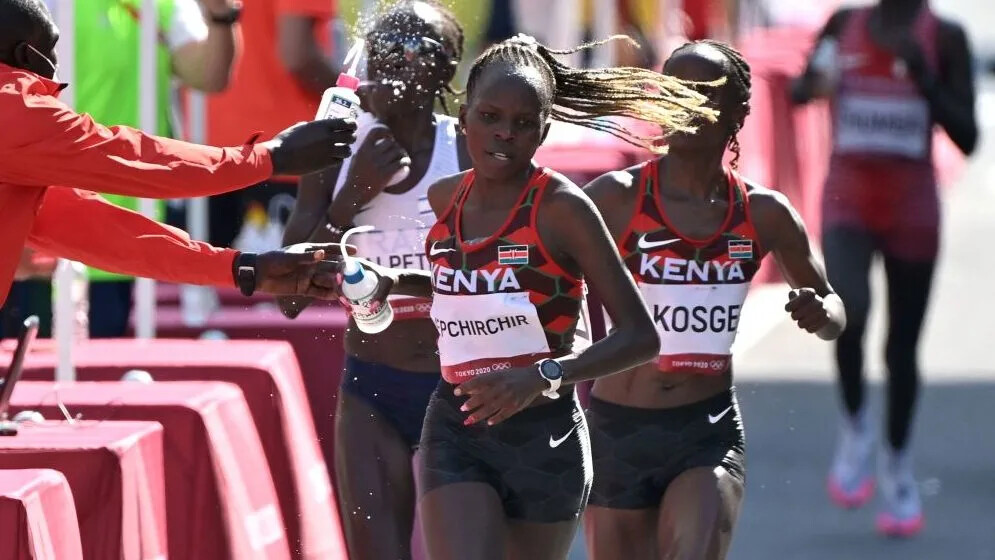
Last year, Jepchirchir became the first person to win the Olympic and New York City Marathons in a career, doing so in a span of three months. She then added a title in Boston on April 18, cementing her status as the world’s top marathoner.
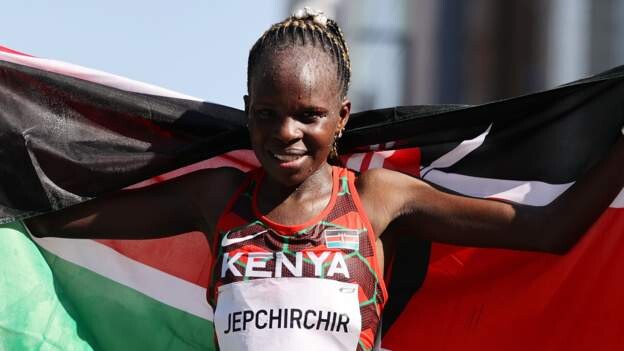
In Jepchirchir’s absence, the marathon field at worlds in Eugene, Oregon, is led by defending champion Ruth Chepngetich of Kenya and Ethiopians Ababel Yeshaneh (second to Jepchirchir in Boston) and Gotytom Gebreslase (Berlin Marathon champion), plus American record holder Keira D’Amato.
D’Amato replaces Olympic bronze medalist Molly Seidel, who withdrew two weeks ago, citing a hip injury, an ongoing process seeking a therapeutic use exemption for ADHD medication and a focus on her mental health.
(07/11/2022) ⚡AMPby Olympic Talk
World Athletics Championships Budapest23
Budapest is a true capital of sports, which is one of the reasons why the World Athletics Championships Budapest 2023 is in the right place here. Here are some of the most important world athletics events and venues where we have witnessed moments of sporting history. Throughout the 125-year history of Hungarian athletics, the country and Budapest have hosted numerous...
more...Kara Goucher turned 44 on July 9
Kara posted on Facebook:
Fun day, Fun year, Fun life.
Thankful for 44
Kara Goucher (born Kara Grgas on July 9, 1978) is an American long-distance runner. She was the 10,000 meters silver medalist at the 2007 World Championships in Athletics and represented the USA at the 2008 Beijing Olympics and 2012 London Olympics. She made her marathon debut in 2008 and finished third the following year at the Boston Marathon.

It was 57 years ago today when Ron Clarke and Gerry Lindgren ran 12 laps around a track in London
WHITE CITY STADIUM (London) was the scene of the crime...I call it a crime as these two were both caught speeding...they ran so fast it just HAD to be illegal
On this July 10th day in 1965, Ron Clarke becomes the first man ever to break the 13:00 sound barrier over three miles when he churned out a mind numbing 12:52.26 on the black British cinders, while towing a youthful Gerry Lindgren to a sterling AR mark of 13:04.2
Might I add, that these two athletes as pictured here some 57 years ago, are amongst the finest with whom I have ever had the opportunity to 'talk track' in a one on one capacity.
(Mike posted this first on FB and Gerry Lindgren wrote this comment: "I was young and naive. I had no idea HOW to race 3-miles. The gun went off....I raced. I should not have been able to run with this elite field of European champions nor Ron Clarke. But I was naive. So, if someone tried to pass, I sprinted. If someone got ahead of me, I passed them back. I just didn't know."
Gerry went on to say, "After that race I was so tired, Ron Clarke had to hold my arm up.")
(07/10/2022) ⚡AMPby Mike Fanelli
How to Overcome a Workout Plateau to Reveal Your Best Performance
Use these pointers to bust through barriers and progress your running and strength training.
You’ve been working hard for months now, trying to get your paces right where you want them. Yet, lately, you can’t seem to make progress, no matter how hard you try. It’s frustrating and confounding, and you don’t know how to break through. Unfortunately, you’ve probably hit a workout plateau.
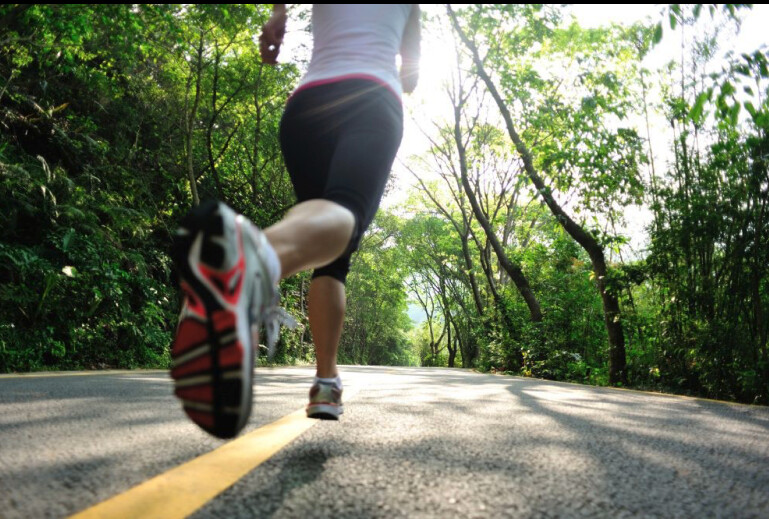
A workout plateau can happen in running and/or your strength training. Coaches will tell you these roadblocks usually reveal themselves after about three or four weeks of stagnation. In running, this might mean you just aren’t seeing progress in training, whether that’s in your track splits or your mileage gains.
In strength training, it could mean that you’re not able to lift a heavier weight in a squat or other exercise, or you’re not seeing changes in body composition, even when you had a steady six months of progress.
The important thing to know is that workout plateaus don’t last forever—with a little drilling down, you can find the cause and then, the fix. Here’s how to overcome your workout plateau so you can bring out your best performances.
If you’ve reached a running plateau…
Feeling like you’ve hit a plateau in running can take on several forms, depending on your outlook. “It can feel like you’ve stagnated physically, like you’re unmotivated, or like you’re stuck in no-man’s land,” says Jessica Hofheimer, certified running coach at North Carolina-based Pace of Me, and coach for Another Mother Runner. “It means different things to different people. But whatever your goal, it feels like you’re not moving toward it anymore.”
Hofheimer cautions, however, that running progress doesn’t happen overnight, and sometimes, you’re not truly hitting a plateau. “You don’t do a hard workout one day and see results the next week,” she says. “It takes consistency over time.”
If, however, you’ve been training consistently for months and hit a wall, then take the time to evaluate what might be causing your workout plateau and then figure out how to address it. Here’s where to start:
Check your rest
It’s tempting to skip your rest days, but don’t. Take them regularly, says Hofheimer, so that your body can recover. Also, follow a plan with variation, which ensures you are alternating your hard days with easy days. How easy is easy? “An easy run shouldn’t be harder than a four on a scale of one to 10,” Hofheimer explains. “And be honest with yourself when it comes to that easy pace.”
This applies to your sleep schedule, too. If you’re skimping on your shut-eye, you’re skimping on your body’s ability to repair muscle damage from your hard runs. Aim for an average of seven to nine hours each night. If you’re struggling to get a solid night’s sleep, look for ways to improve your sleep routine, like a consistent bedtime, a break from screens before bed, and making your bedroom a peaceful environment.
Assess your stress
As Hofheimer reminds us, stress is stress is stress, and your body can’t distinguish one type from the other—whether that’s mental stress from a job or physical stress from your run. If you’re going through a tough time at work or with your family, maybe it’s a season to dial back on your running, saving the dedicated, programmed training for another time.
“Plateaus aren’t a necessary part of training,” says Hofheimer. “But sometimes we’ll hit them. We can’t push all the time and if you must force running, maybe you need a break to refresh and break through.”
Look in your ‘fridge
Good nutrition that optimizes recovery is essential when you’re in training. Aim to get enough carbohydrates to fuel your runs—think simple, easy-to-digest foods like bagels, a banana with nut butter, or even a sports drink.
Once you’ve returned from your run, grab something to help your muscles recover. Think protein- and healthy fat-rich foods like yogurt, avocado toast, eggs, or even a bowl of oatmeal with nut butter. Postworkout and heavy training periods are not the time to skimp on calories. You need the nutrients to repair muscle damage.
Research backs up the importance of a solid nutrition plan for optimizing performance, calling for a personalized plan that works for your running, along with your digestive health. One scientific review published in the International Journal of Environmental Research and Public Health looked particularly at nutritional intervention for women during their menstrual cycle, finding that hydration, micronutrient, and phytochemical interventions can improve athletic performance, based on measurements like aerobic capacity, anaerobic power, and strength. It also found nutrition intervention could help ease exercise-induced damage, like muscle soreness or signs of dehydration.
Talk with a doc
If you’ve tried all of the above, you might want to go the extra mile to figure out what’s going on. Hofheimer suggests “taking a look under the hood,” if you’ve been feeling more tired than usual for a period of time. “Have your bloodwork done and make sure there’s not a health issue going on, like low iron levels,” she recommends.
If you’re reached a plateau in your strength training…
Strength training is the essential backend work all runners should be doing to keep their bodies better prepared for the stress of the sport. And if you’re doing it right, you’re incorporating a routine that helps you continually progress in the amount of weight you lift, perpetually challenging your body. But it’s also easy to hit a strength workout plateau every now and again.
Meghan Weiser, D.P.T., a certified strength and conditioning specialist at the Maryland-based Recharge Modern Health & Fitness, says there are several possibilities for a strength-training plateau. But first, she says, “Before you define it as a plateau, determine if there are areas where you can improve.” These steps will get you on track:
Progress your loads accordingly
In strength training—as with running—you want to continually challenge your body. That means that as time goes on, you should gradually increase the weights, reps, or sets that you’re lifting, and/or the frequency of your strength sessions. This is called progressive overload and it’s key to avoiding or overcoming a workout plateau (in weight training and running).
This is where a trained strength coach can come in handy, as they can write a proper program for you to follow—one that continues to progress—and consult with you if trouble arises.
Take recovery days and weeks
Much like a running program, a good strength program will build in occasional weeks where you step back in training before pushing on to the next level. These “deload” weeks will involve dropping down in the amount of weight you lift, cutting back on frequency, or both. This gives your muscles a chance to repair and prepare for the next jump up. Plan to take a de-load week about every four to six weeks.
Also, similar to running, strength training requires adequate rest at night, and days off, says Weiser. Aim for that same good night’s sleep, with seven to nine hours as your goal for shut-eye. If your body is super sore from your strength session, take that as a sign you need a rest day, too.
Examine your weekly workouts
New activity is fun, and cross-training has many benefits for runners. But if you’ve recently added in new physical pursuits—a hike or two per week, for example—that might be enough to impact your strength training potential. Be intentional with your new activities, adding them in slowly and in short durations to make sure you’re not over-stressing your muscles. If you think you are, dial back until your body feels refreshed.
Eat to build muscle
Even more than running, the idea behind strength training is to inflict a bit of microscopic damage to your muscles. When the repair work begins, your muscles get bigger and stronger. Skimp on adequate calories or nutrient-dense foods—especially protein—and you’re selling yourself short, not giving your muscles what they need to make those gains.
Know there will be ups and downs
Weiser points out that progress is not always linear, and it doesn’t always come in big increments. “If you’re deadlifting 150 pounds for a few weeks and then move up to 155 pounds, that’s still progress,” she says. “With any activity, there are going to be weeks when it sucks, and you feel weak and that’s just how it goes. It doesn’t mean you’re stuck in that place forever.”
(07/10/2022) ⚡AMPby Runner’s World
How running has helped Joey Chestnut become a hot-dog-eating champion
Joey ‘Jaws’ Chestnut, who recently ate 63 hot dogs to win his 15th Fourth of July Nathan’s Hot Dog eating competition on New York’s Coney Island, has a well-documented training program designed to overcome his body’s physical limits. In short, he trains like a marathon runner.Chestnut told GQ Magazine that his training includes two months of “simulated contests,” in which he eats as if it were July 4. “It’s really just training to stave off nausea that a typical person would endure when their stomach gets full,” says Chestnut. “It’s similar to marathon training, when you are slowly ramping up. Hitting times and distances again and again.”
To understand the pain marathon runners go through, Chestnut, 38, took part in his first marathon at California’s Surf City Marathon in 2019, where he ran 5:02:44. “Eating hot dogs is like a marathon runner running,” Chestnut explained in Brooklyn Reporter in 2021. “Your body is telling you that it’s tired, but you ignore certain feelings at the end of the race.”Besides using running as a way to work off the 17,000 calories of 63 hot dogs, it’s clear it can help the mental side of the sport too.

by Running Magazine
Run first, think later: three tips for using behavioral activation in running
While the activation energy we need from day to day varies, it comes down to simple chemistry: chemical reactions need a certain amount of energy to begin working. Activation energy is the minimum energy required to cause a reaction to occur. Sometimes, despite all the mental roadblocks we may be facing, fitting in a run or accomplishing something challenging is as simple as using activation energy to get started.
In an article for the New York Times, coach and author Brad Stulberg explains the strategy of harnessing our “oomph.” “Behavioral activation is based on the idea that action can create motivation, especially when you’re in a rut,” Stulberg writes. This doesn’t mean thinking positive thoughts in order to pep-talk yourself into running (although self-positivity can be incredibly helpful, trying to use it to get out the door can backfire).This strategy simply means that we need to accept that we cannot change our thoughts and feelings, but know that we can kickstart them into being more positive by taking action.


Mood follows action, rather than the other way around. We have a certain amount of activation energy available to us, and we need to apply it to important things.Reflect on why running (or exercise) matters to you
Stulberg suggests thinking about what helps you to feel grounded, or what helps you feel a sense of well-being. “Then ask yourself how to apply that activation energy strategically,” he says. “What actions will give you the oomph you need? For example, if improving your fitness would make you feel better, you might start with 30 minutes of daily movement,” says Stulberg. If you’re having trouble just getting out the door, let alone tackling a hard workout, focus on something smaller, like a few kilometres around your block, or a 20-30 minute run.
You’ll feel better once you start. Remember: you can’t control your thoughts, but you can control your actions.Tell yourself you can quit after a few laps around the street, put on the clothes you’ve conveniently laid out by the door, and take a couple of steps. You may find that the inertia that had built up by sitting around and postponing movement is gone once you start an activity and endorphins are released. Stulberg suggests that over time, it can become a habit to bypass that lack of mental motivation and simply get moving. “Dedicating yourself to the practice, no matter how you feel, is what builds motivation,” he writes.Be flexible and kind to yourself
Life, for most of us, has changed in the last few years. Schedules have changed, health has shifted, and if you have struggled with job loss, mental health, or just felt stuck, you’re certainly not alone. While it’s important to put the “mood-follows-action” concept into practice to create lasting change, be kind to yourself if you’re experiencing something particularly draining or tough. Having a sense of self-compassion can help build resilience through hard times.
If running feels like too much, go for a walk and listen to a podcast. Take your dog to the park, or walk to the local store with a friend: the important thing is to keep moving, in any way possible, and remind yourself that this time of low energy will pass.
(07/10/2022) ⚡AMPby Running Magazine
Track and field officials confirmed Friday that Russians will not be allowed to compete at this month’s World Athletics Championships Oregon22 due to the war in Ukraine
The federation banned Russians from major international events shortly after the country invaded Ukraine in February. At the time, World Athletics president Sebastian Coe said the unprecedented move appeared “to be the only peaceful way to disrupt and disable Russia’s current intentions and restore peace.”
The world championships begin next Friday and run through July 24.
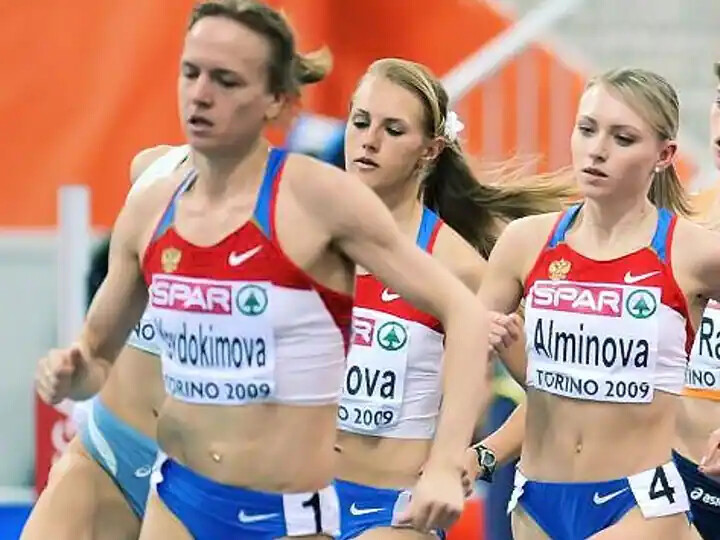
World Athletics confirmed the ban in a news release announcing it had cleared an additional 18 Russian athletes to compete as neutrals in international competition, but that the approvals would not apply to worlds.
Those athletes were cleared as part of a protocol in the wake of a doping scandal that has left Russia’s athletics federation under suspension since 2015. At last year’s Olympics, 10 Russians were allowed in the track meet; at the world championships in 2019, 29 Russians competed.

There are now 73 Russian athletes who can compete as neutrals, though their status at major international events is in limbo due to the war.
Among those athletes is reigning Olympic and world champion high jumper Maria Lasitskene, who has never lost in an international competition. Last month, she blasted the decision in an open letter to Thomas Bach, the president of the IOC, which has recommended the Russian ban.
Lasitskene’s top rivals are from Ukraine and she said “I still don’t know what to say to them or how to look into their eyes.”
“They and their friends and relatives are experiencing what no one human being should ever have to feel,” she said.
(07/09/2022) ⚡AMPThe Dibaba family of Ethiopia dominated the women’s long-distance running for decades
The Dibaba Sisters, from Ethopia, is the fastest family on earth.
Ethiopian distance runner Tirunesh Dibaba made history at the 2008 Beijing Olympics when she became the first woman to win gold in both the 5,000-metre and 10,000-metre races. She defended her gold medal title in the 10,000 metres at the 2012 London Olympics, becoming the first woman to win the event at two consecutive Olympics.
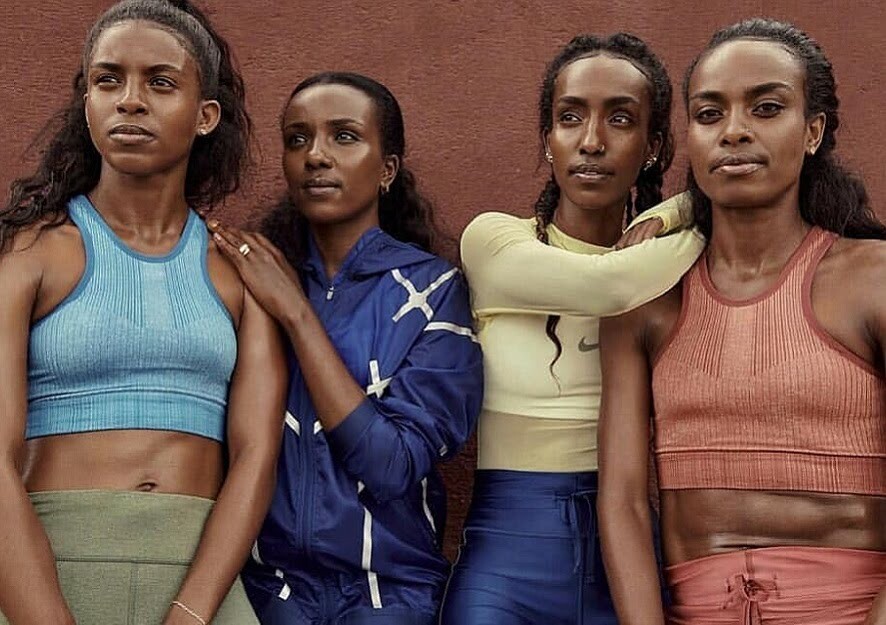
She was inspired by a family of runners. In fact, she and her sisters have been amazing in the field of distance running. The Dibaba sisters — Tirunesh, Genzebe, Anna, and Melat — are the only siblings in recorded history to hold concurrent world records, and they are a fiercely competitive family from a humble background.
Their parents, Gutu Tola and Dibaba Kaneni, were not athletes themselves but their children have always acknowledged the support that their parents have given them to thrive in athletics.
Her baby-like face combined with her track performance gave her the perfectly fitting nickname ‘The Baby Faced Destroyer’.

Fourth born in a family of six, Tirunesh started running with a clear focus on becoming a professional athlete at the tender age of 14.
Her sister, Ejegayehu Dibaba was already a professional athlete, and her cousin, Derartu Tulu, also helped inspire to take up athletics.
Moving to the Ethiopian capital of Addis Ababa in 2000, the year her cousin Ejegayu had won her second Olympic gold during the Sydney Olympics in the 10,000-meter race, Tirunesh moved in to live with Ejegayu launching her athletic career.
Just over two years later, in 2003, Tirunesh would win her first international medal by scooping gold in the 5000 metres during the IAAF World Track & Field Championships.
A year later, Tirunesh competed in the Olympics winning the bronze medal finishing behind teammate Meseret Defar and Kenya’s Isabela Ochichi.
From there Tirunesh went on to establish herself as one of the greatest ever long-distance woman runners of all time becoming the youngest female World Champion in the history of athletics. She has gone on to win three Olympic gold medals.
In her highly decorated career, Tirunesh boasts of three Olympic gold medals and three bronze along with five World Championship gold and one silver. Additionally, she has four World Cross Country Championships 4 gold medals, and 2 silver, and has won two African Championships gold and one silver medal.
In total, ‘The Baby Faced Destroyer’ has 14 gold medals, four silver, and three bronze medals from all major global athletics events.
The biggest reason behind her success has been the blistering speed that she used in the final laps leaving the competition in her wake.
Now 37 years old, Tirunesh has informally retired as one of the greatest track and field athletes of all time. She has won everything and set records that will take a while before they are broken.
Ejegayehu Dibaba
Ejegayehu is the eldest of the Tirunesh’s and just like her younger sister she has also carried the Dibaba’s flag high and to the top.
Winner of the 10,000m silver medal in the 2004 Athens Olympics, Ejegayehu finished ahead of her cousin Derartu Tulu who took the bronze.
Other medals from major internationals include two World Championships bronze in Helsinki 2005 in the 5000m and 10,000m.
She also went on to surprise the world by winning her debut marathon in Chicago in 2011.
Genzebe Dibaba
Genzebe is the youngest of the family and has also tasted the sweetness of winning an Olympic medal. Her moment of glory in the Olympics came in the 2016 Rio Olympics winning silver in the 1500m race.
In total Genzebe won a total of 11 gold medals, five silver medals, and two bronze medals in her athletic career.
Derartu Tulu
Cousin of the three sisters, Derartu Tulu's exploits were an inspiration to the Dibabas setting the pace for her cousins by concurring the world.
Tulu became the first Black African woman to win an Olympic gold medal winning the 10,000m race at the 1992 Barcelona Olympics.
Eight years later she would win her second Olympic gold at the 2000 Sydney Olympics.
She would have an incredible achievement winning a medal in three different Olympics winning a bronze at the 2004 Athens Olympics in the 10,000m.
Other major titles in her illustrious career include 10,000m gold and silver medal at World Athletics Championships in Gothenburg 1995 and Edmonton 2001.
Sileshi Sihine
Sileshi Sihime is a two-time Olympic silver medalist with over a dozen major athletics medals under his belt. Married to Tirunesh Dibaba, he is a three-time Olympic gold medalist.
Conclusion
In terms of ‘Sports Dynasties’, the Dibabas are the 'African Sports Dynasty’. Talent, hard work, and dedication are clearly what enabled the Dibabas to conquer the world of women's long-distance races for decades.
(07/09/2022) ⚡AMPTrail runners prefer to race the marathon distance or longer, new study finds
If you first experienced trail running in your mid-30s, you’re in good company. A new study on the training habits of trail runners reports that almost a quarter of athletes began exploring trails between the ages of 31 and 35. The research was conducted by the International Trail Running Association (ITRA), an international non-profit.
Results came from surveys distributed worldwide and cover everything from whether athletes started with road running or jumped directly onto the trails, to how often and where they race. We parsed a few of the most interesting takeaways.

Most common injuries
Roughly 60 percent of athletes had experienced some kind of injury, the most common being ankle sprains and muscle issues. Athletes tend to take training breaks, and often incorporated cross-training into their exercise routine, possibly to help prevent future setbacks.

Gear habits and spending
Trail runners surveyed spent between $250 and $800 dollars per year on gear. Salomon was the top choice for footwear and trail gear. Garmin boasted a clear lead in watches, and was the chosen brand for 60 per cent of trail athletes.
Race distances
Racing habits varied among trail runners, with half of those surveyed preferring to stay within their local area to race, and half opting to travel internationally. Trail runners also reported a variety of distances raced and frequency of races, with more than a third participating in around five races per year. Interestingly, the most common race distances were between 42.2 km and 80 km (so “trail marathons” and longer), with only three per cent of athletes going over the 100-mile distance.
The study concluded that trail runners participate in the sport because they love being in harmony with nature, discovering new places as well as staying fit and preparing for their next race.
(07/09/2022) ⚡AMPby Running Magazine
Galen Rupp fueled by family time as he prepares for marathon at World Athletic Championships
It’s been nine months since Galen Rupp ran his last full marathon.
He contemplated running another this spring after finishing the Chicago Marathon last October, but decided against it to avoid tiring himself out ahead of the summer.
Now, as he trains for the 2022 World Athletics Championships, he’s been replicating the effects a marathon has on his body. That includes going on long, painful runs no matter how tired he is.
But Rupp is always able to get through it because he knows what’s waiting for him at home once he’s finished: a sit-down dinner with his wife and kids.
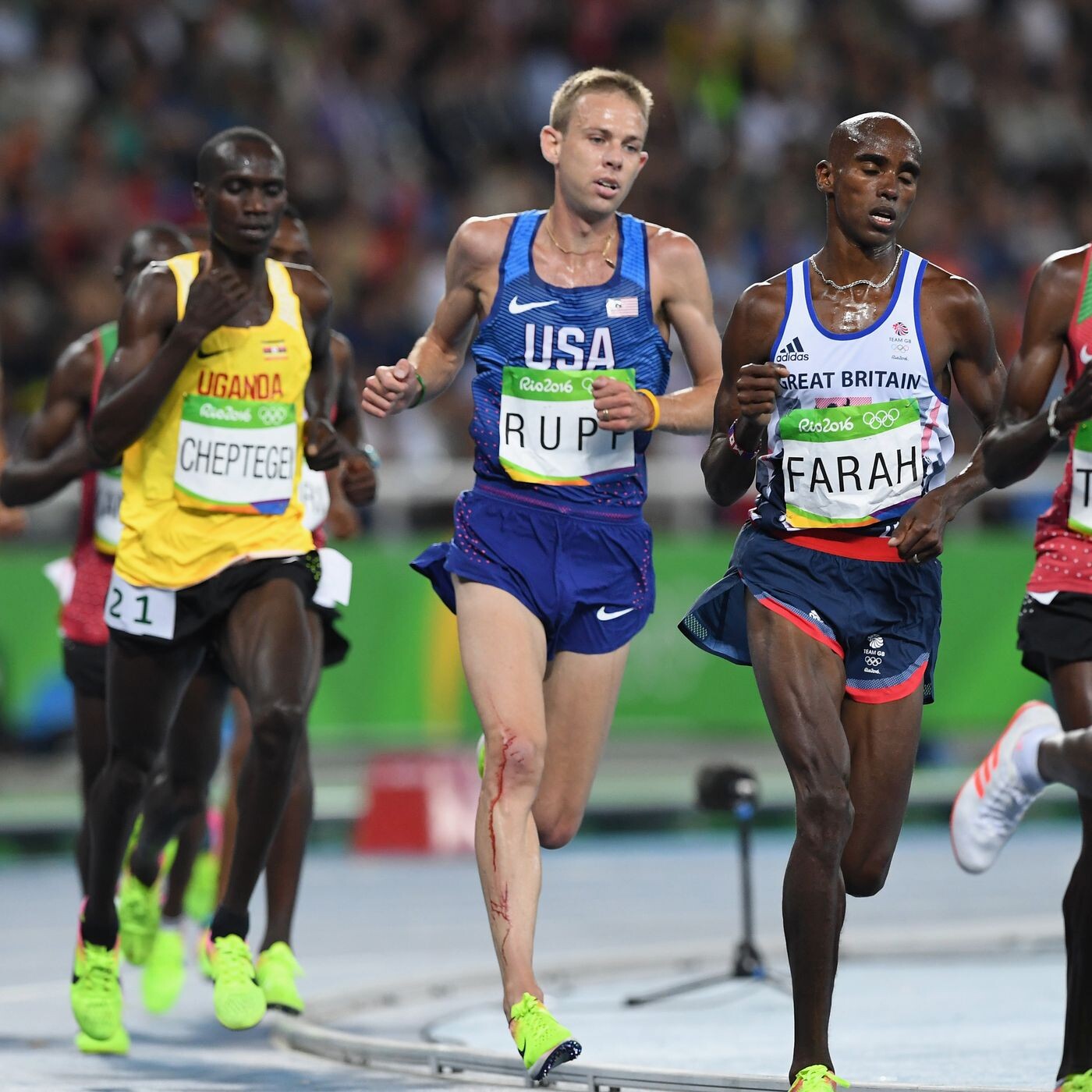
It doesn’t matter if his training went well or not, Rupp said. When he gets home and his kids come running to hug him, whatever happened that day doesn’t matter compared with what’s in front of him.
“I get a lot of strength from being around them,” Rupp said. “Mentally, I’m in the best place possible when I’m in their presence.”
That helps fuel Rupp, 36, as he’s running competitively, knowing his family is in the stands or along the route. They’ll only need to make a two-hour drive south to Eugene for this year’s world championships, which run July 15-24 and are being held in the United States for the first time.
Friends, family and fans of Rupp have always turned out to watch him race, from his time at Central Catholic High School in Portland all the way to the Olympics.
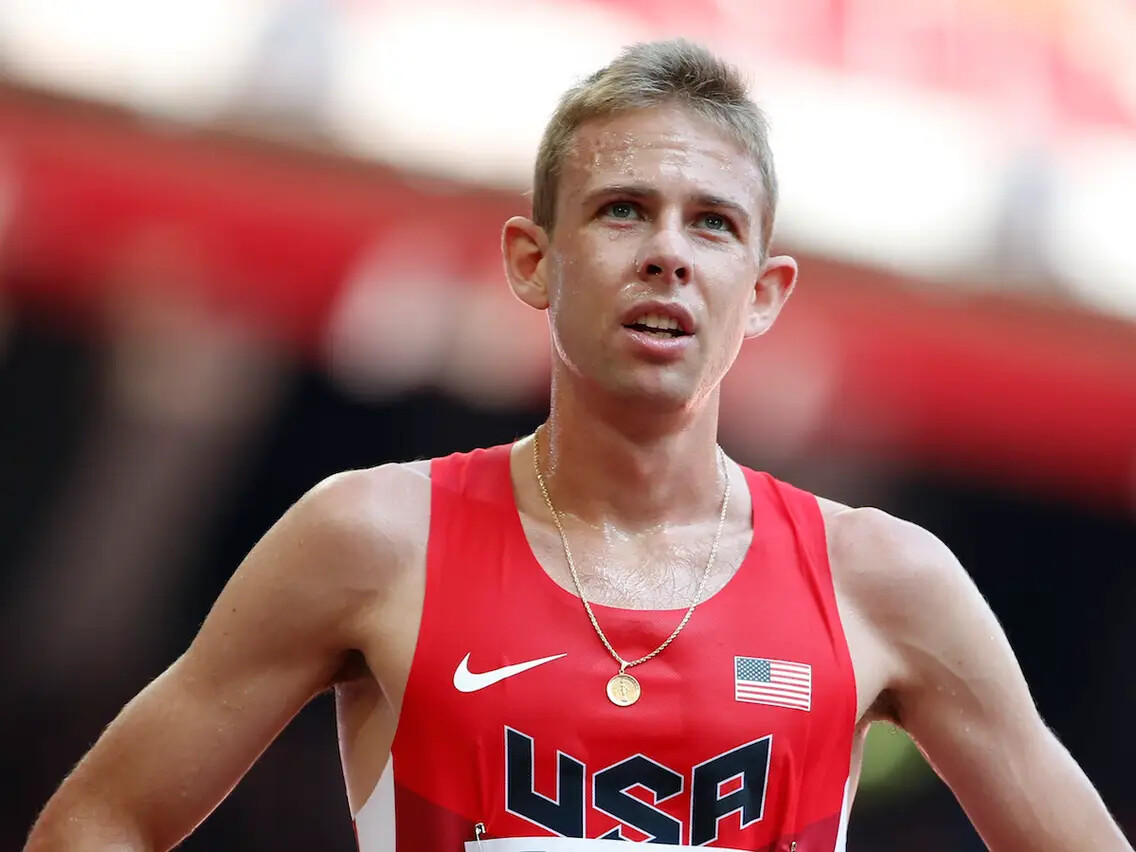
Rupp is no stranger to competing at Hayward Field. He ran with the Ducks’ cross country and track teams from 2004-09 and holds multiple school records. The team’s website refers to him as “one of the greatest distance runners in UO history.”
His days competing in Eugene didn’t end once he joined the professional ranks. He frequently has been in town for the Olympic trials or the Eugene Marathon. Memories from Eugene that stick out for Rupp include setting the American record in 10,000 meters at the 2014 Prefontaine Classic and making his first Olympic team in 2008.
"There’s always a buzz around the city and stadium when there’s a big meet in town,” Rupp said. “There’s really nothing like it.”
Rupp’s training process changed slightly since he started working with a new coach, Northern Arizona University’s Michael Smith, in 2020. With Smith based in Arizona, he relies on Rupp sending videos of his workouts, taken by his wife, to provide tips and advice.
The two keep up a steady stream of communication via text, and Rupp said he appreciates Smith’s willingness to tell him to try different things and new workouts.
“He’s not scared to challenge me,” Rupp said. “The biggest growth comes when you start trying new things and doing some different things in training.”
All that training, which Rupp said amounts to a full-time job, has kept him busy over the last few months. Outside of spending time with his kids, which usually means fishing for trout, he’s had to stay off his feet in his free time.
With the downtime he has, Rupp tries to keep up with UO athletics. He’s particularly excited for Oregon’s new football coach, Dan Lanning, and the Ducks’ season opener against Georgia in September.
“I’m pumped for Dan Lanning, excited to see what the team’s going to look like under him,” Rupp said.
Rupp said he hasn’t given much thought to what he’ll do once his running career wraps up. The 2024 Summer Olympics in Paris are on his radar, but he stressed that making Team USA at the trials is difficult, so he doesn’t want to make any hasty assumptions.
Going into coaching has crossed his mind a few times, but he doesn’t dwell on those thoughts to avoid letting them become a distraction. For now, he’s focused on the next race.
“I still feel like I’ve got a lot of years left for sure,” Rupp said. “I want to keep putting all my energy into that for the time being.”
(07/09/2022) ⚡AMPby Luke Norton
World Athletics Championships Budapest23
Budapest is a true capital of sports, which is one of the reasons why the World Athletics Championships Budapest 2023 is in the right place here. Here are some of the most important world athletics events and venues where we have witnessed moments of sporting history. Throughout the 125-year history of Hungarian athletics, the country and Budapest have hosted numerous...
more...Caster Semenya to make surprise comeback at world championships
Caster Semenya is listed to compete at next week's world championships in Oregon, potentially setting up a surprise return to the big stage for the two-time Olympic champion and one of the most contentious athletes.
Semenya was listed on Friday for the women's 5000m, an event she has turned to after being banned from running in her favorite 800m race by track and field's testosterone regulations.
Semenya's inclusion on a competitor list released by World Athletics was unexpected after she didn't make the qualifying time for the 5000 and was not included in the South Africa team for the worlds named this week.
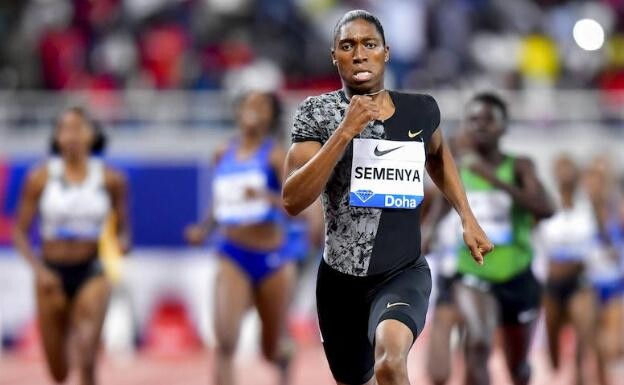
NBC reported that Semenya was moved up onto the list for the worlds after some higher-ranked runners didn't enter the championships. South Africa's track federation and Semenya's representatives didn't immediately respond to requests for clarification.
If she runs, it will be the first time Semenya has appeared at a world championships or Olympics since 2017, when she won her third world title in the 800. She also has two Olympic golds over two laps but has been barred from running in races from 400m to one mile since 2019 under rules that bar women who have an intersex condition called 46,XY difference in sex development.
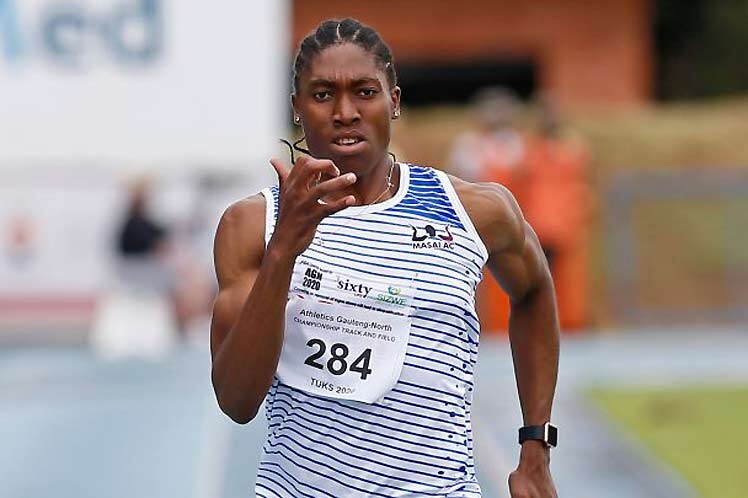
Semenya has twice gone to court to appeal against the rules but has lost both cases. She is pursuing a third appeal at the European Court of Human Rights.
Semenya's appearance at a worlds would also come just as athletics authorities are considering changes to their DSD regulations that might go so far as to completely exclude women athletes with 46,XY DSD and high natural testosterone from all female events at major meets.
Semenya was assigned female at birth, raised as a girl and identifies as a woman. She has never publicly identified herself as intersex – that is, having both male and female traits – or as having the 46,XY DSD condition.
However, she essentially acknowledged having the condition by appealing the DSD rules at the Court of Arbitration for Sport in 2018. Semenya has publicly acknowledged having high natural testosterone but has declined to submit to the DSD rules that state she must undergo treatment to suppress her natural hormone levels to below a specific threshold if she wants to compete in the 800m.
(07/09/2022) ⚡AMPby Gerald Imray
World Athletics Championships Budapest23
Budapest is a true capital of sports, which is one of the reasons why the World Athletics Championships Budapest 2023 is in the right place here. Here are some of the most important world athletics events and venues where we have witnessed moments of sporting history. Throughout the 125-year history of Hungarian athletics, the country and Budapest have hosted numerous...
more...Walking Can Prevent Knee Pain Even in Individuals With Arthritis, Study Suggests
Researchers find that even if you’re older and have osteoarthritis, going for a walk can slow damage in the knee joints.
New research published in Arthritis & Rheumatology says that walking can improve joint health, particularly in those with knee osteoarthritis.
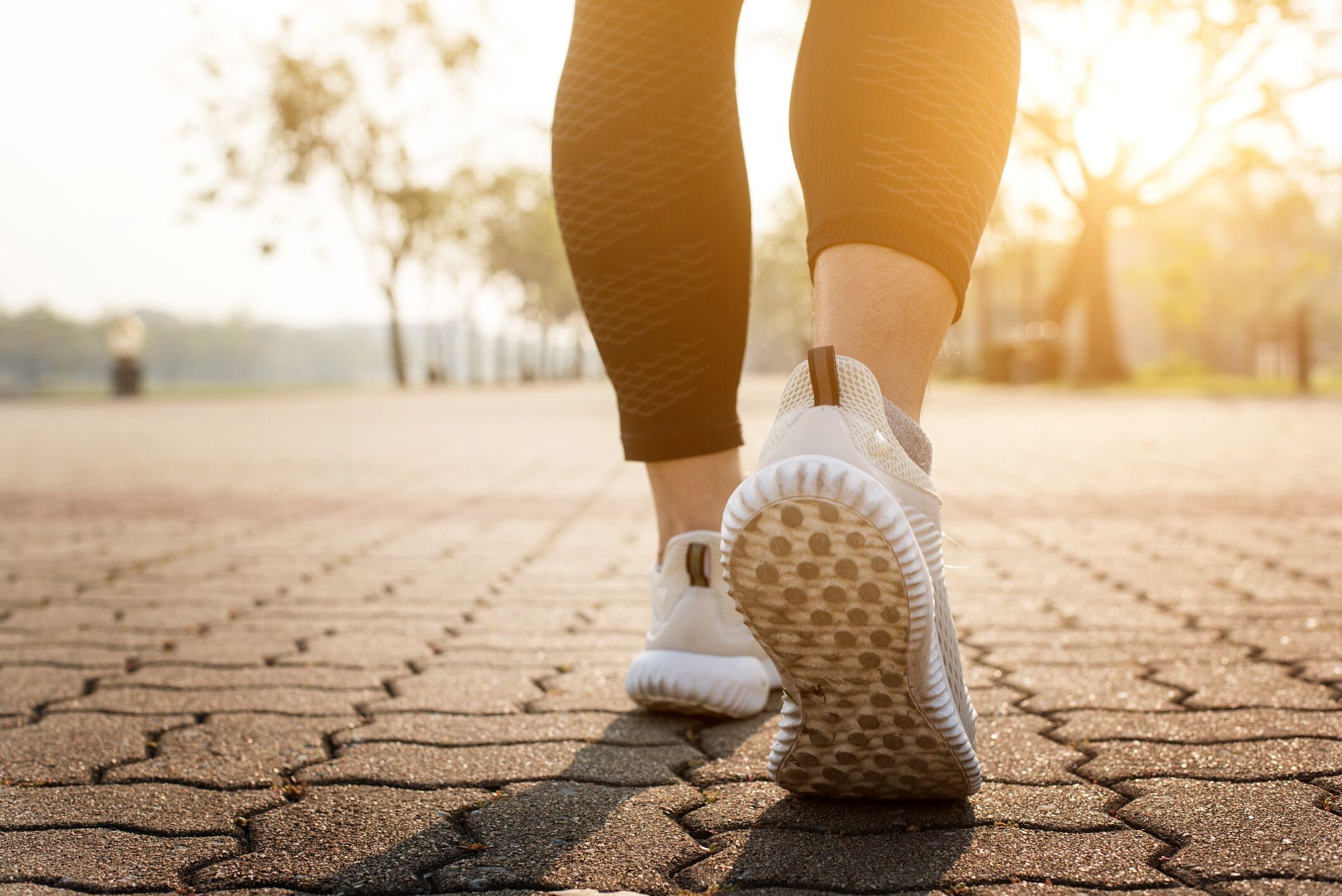
Those with arthritis should start walking before knee pain develops or becomes chronic, as movement works better to prevent aches, rather than treat them.
Walking is often lauded for its many benefits, like better cardiovascular function and improved mood. Now, improved joint health, especially in the knees, can be added to that list, according to a study published in Arthritis & Rheumatology.
Researchers looked at the results of a multiyear observational study, the Osteoarthritis Initiative, which tracked behaviors like exercise type and frequency in people over age 50. Out of more than 1,200 participants, 73 percent walked for exercise, and all had diagnosed knee osteoarthritis. They found that those in the walking group reported significantly less development of knee pain and better function in the joint compared to those who didn’t walk regularly.
This should prompt more people, and their physicians, to consider walking as part of treatment for osteoarthritis, but it also serves as a reminder that prevention is key, according to the study’s first author, Grace Hsiao-Wei Lo, M.D., chief of rheumatology at the Baylor College of Medicine.
“If you can catch people before they get symptoms and get them to walk, this might be very helpful in preventing the development of regular knee pain,” she told Runner’s World. “The opportunity might be already lost once regular knee pain has already occurred.”
For example, participants who already had knee pain at the beginning of the study had the same level of modest improvement in pain levels as those who didn’t walk. That means once you have ongoing, chronic pain, walking won’t offer the same degree of symptom resolution as walking when your issues are less problematic.
However, if you get started with walking early in the osteoarthritis process, it’s likely you won’t see improvements only in your knees, but also your hips, shoulders, and feet, Lo suggested.
Although the study didn’t look into potential mechanisms for why walking helped prevent pain, other research offers some clues. For example, research in the journal Pain proposed that an activity like walking changes the way pain signals are transmitted in the central nervous system, reducing pain sensitivity. By contrast, sedentary behavior can not only make pain signals stronger, but also block natural opioid receptors, so it’s harder to get relief when pain does occur.
Strengthening your nervous system with walking—or running—can act as a natural pain reliever, even with an issue like osteoarthritis.
If you’re ready to put some miles in as a pain prevention tool, the standard advice to check with your doctor applies here, especially if you want to ramp up your activity level considerably. But it’s worth the effort to make a plan and get your doctor’s okay, said Lo, because it’s easily one of the most available and affordable forms of exercise.
“What’s great about walking is that almost anyone can do it, and there are fewer barriers compared to activities like bicycling or swimming,” she said. “You don’t even need to be particularly fit; just get started and go from there.”
(07/09/2022) ⚡AMPby Runner’s World
A Photographer Is Taking the Long Way to Eugene for Worlds
Jan Figueroa is making a 75-hour trek by Greyhound bus from Florida to Oregon next week.
Can you imagine hopping on a Greyhound bus and taking a 75-hour cross-country trip from Florida to Oregon for a Global track meet?
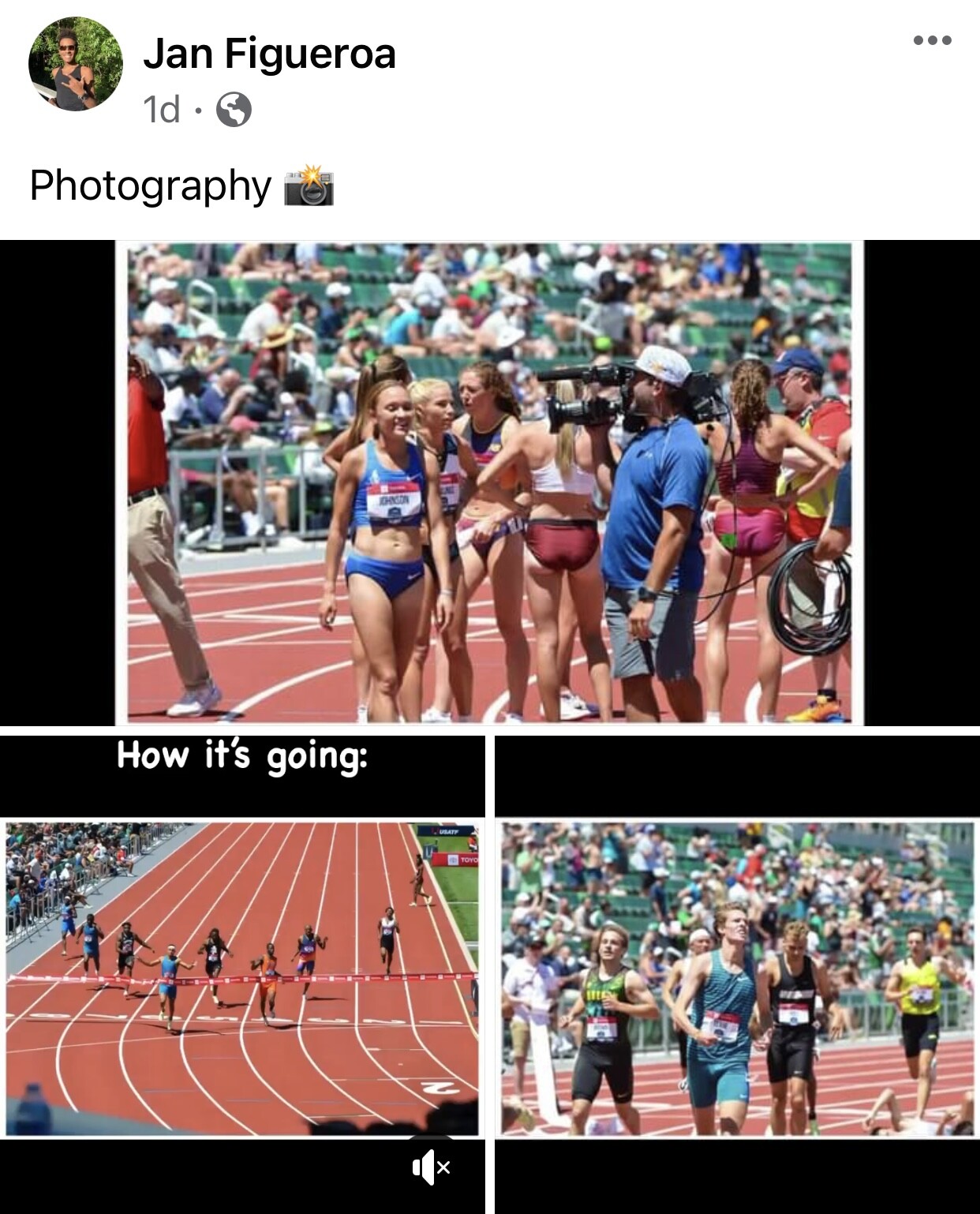
That’s exactly what Jan Figueroa is doing. The Florida-based content creator will travel 4,000 miles to Eugene, Oregon to serve as a photographer at the World Athletics Championships at Hayward Field next week.
The possibility and then the reality of Figueroa going to Eugene was brought to life by Ben Crawford of New Generation Track and Field.
“I personally didn’t have the funds to go to Worlds,” Figueroa said. “My friend Ben Crawford and New Generation Track and Field were kind enough to sponsor my trip to the (USATF Championships) and they wanted to bring me back for Worlds. Ben threw out the idea of traveling by bus as a joke to create a sick travel vlog/documentary and create cool content along the way not knowing that I’m crazy enough and loved the idea and was so down to do it.”
“So it worked out perfectly because once again he covered my travel expenses to go to Worlds, which I’m extremely grateful for and I get to do what I love along the way, which is to create cool and entertaining content for the people.”
Flights to Eugene leading up to the World Championships have not been cheap, particularly when you factor in other travel expenses, like hotels.

Figueroa tweeted out about his upcoming journey to the World Championships on Monday. Since then, it’s been picked up by World Athletics and has been mentioned by companies such as On Running and athletes as well, including Fred Kerley. The attention that the tweet has gotten caught him by surprise.
“I didn’t think it would blow up the way it did,” he said. “I thought it would do good numbers with a couple of retweets and likes and that’s about it. But to blow up to the magnitude it did when World Athletics shouted me out, brands were reaching out to me to send me merch, newspapers wanting to write about my story, and even pro runners and strangers offering to help me out if I needed anything along the way.”
“I could have never imagined that at all. It's been absolutely surreal and at the same time super gratifying to see the running community come together to support me like that - It makes me even more excited to be on a bus for 3 straight days as crazy as that sounds.”
Figueroa said that he’s grateful to Ben Crawford, New Generation Track and Field, Joe Hale and the Internet Friends IRL group chat for the opportunities for making him a better content creator and the opportunities provided, including taking photos at Worlds. He’s excited to make more connections, take his photography to another level and to see the world’s best.
“I’m beyond excited,” he said. “Worlds being on US soil for the first time and me being able to be there to witness it and create content is the opportunity of a lifetime that I just couldn’t miss out on.”
(07/09/2022) ⚡AMPby Runner’s World
The Ultimate Guide to Foot and Lower-Leg Pain
From plantar fasciitis to blisters, these are the top causes of foot pain for runners
At least 50 percent of runners are injured annually, according to a 2010 review published in Current Sports Medicine Reports, and feet are one of the main culprits. But foot pain can be hard to manage. Is it a serious injury? Just an ache? Can you push through, or will you make it worse?
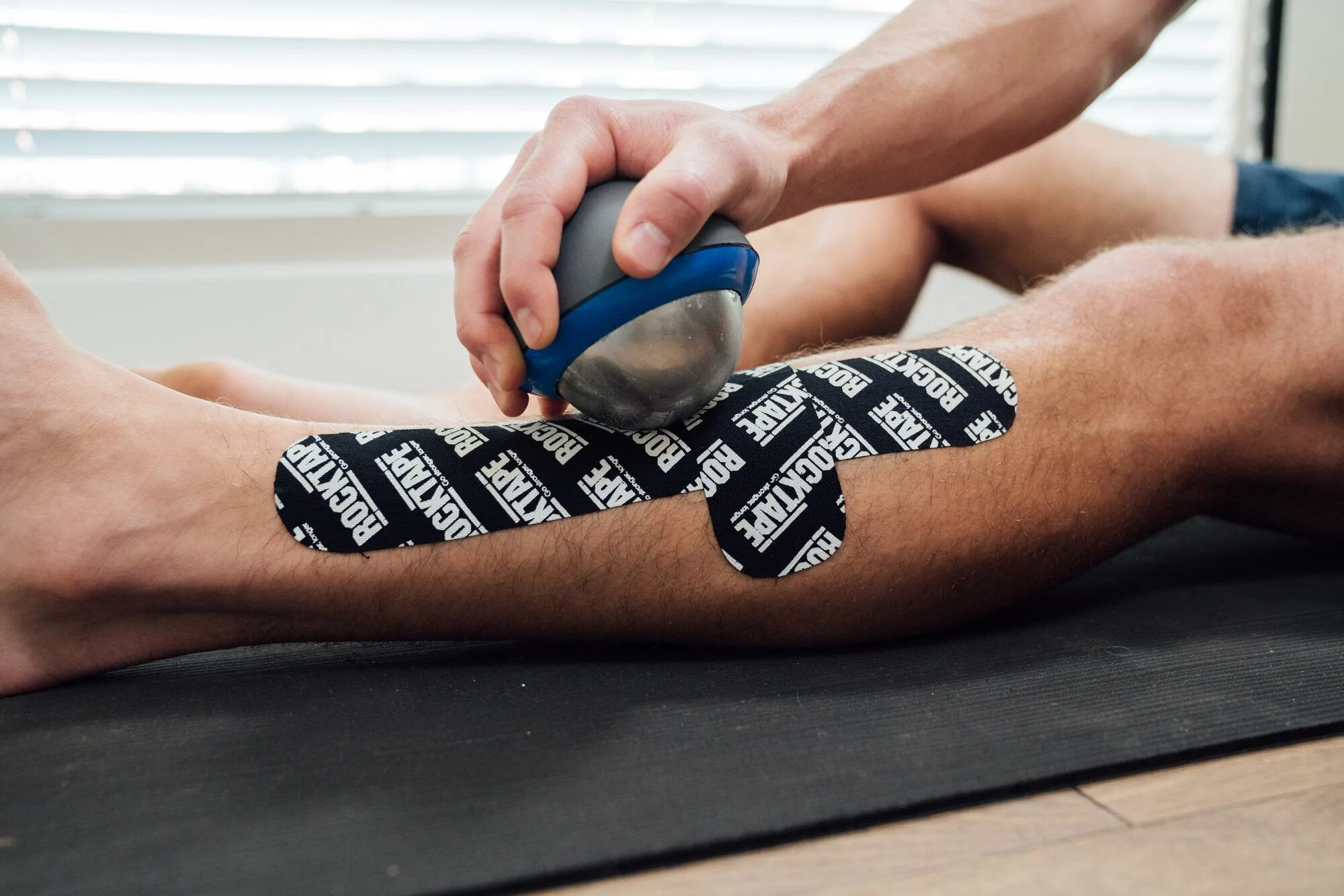
We asked two podiatrists to give us a rundown on the most common foot injuries for runners. Stephen M. Pribut, former president of the American Academy of Podiatric Sports Medicine, is a runner himself and has treated Olympic athletes. Lisa M. Schoene is a sports-medicine podiatrist and a certified athletic trainer who has been in practice for over 28 years.
Both Pribut and Schoene explained that most running-related foot injuries are a result of overuse, the wrong shoes, or an abrupt transition between different types of shoes. Natural foot shape and biomechanics also play a role. Here’s a helpful guide to figuring out why your feet hurt and how to jump-start your recovery. But of course, this doesn’t replace a visit to your doctor. If you’re dealing with serious or persistent pain, make an appointment with a physician.
Plantar Fasciitis
What it is:
The most common foot injury among runners is plantar fasciitis, an inflammation of a web of thick ligaments (the plantar fascia) that runs along the bottom of the foot and connects the heel bone to the bones of the forefoot. The plantar fascia support the arch of the foot and act as a spring for forward propulsion. The usual signs and symptoms include pain on the bottom of the heel, which could present as dull, sharp, or a burning ache, either directly below the calcaneus (heel bone) or toward the front of it. The pain typically comes on slowly and builds over multiple days or weeks. It can be strongest when you wake up in the morning or during a run.
Why you get it:
Overuse from an increase in training volume or intensity
Switching to a zero-drop shoe or a pair of shoes with less arch support
Tight Achilles tendons or calf muscles
Weight gain, which adds unaccustomed stress to the plantar fascia
How to fix it:
Reduce your training volume and intensity or, better yet, lay off running altogether for a few weeks. “If you keep running through your plantar fasciitis, it will inevitably get worse,” Schoene says, “but you can definitely cross-train.” In your day-to-day life, wear shoes with ample cushioning, arch support, and elevated heels. Seriously—whether they’re 12-millimeter drop running shoes, clogs, or kitten heels, they’ll alleviate the pressure on your plantar fascia. Avoid going barefoot.
When you return to running, ease back into it. If you had switched to different running shoes in the weeks before your pain started, it might be wise to switch back to something like what you had before. You’ll want a shoe with ample cushioning, a high drop, and good arch support. If the heel pain returns, go see a professional, because you might benefit from orthotics.
As for physical therapy, do 20 reps of towel crunches once or twice per day: place a towel on the floor, put your foot on top, and curl your toes to squeeze a fold of fabric. Stretch your calves from a step. Roll out your arches with a soft massage ball or a tennis ball (as opposed to a firmer lacrosse ball), and be extremely gentle around your heel. Roll out your lower legs with a foam roller or a massage stick to release tension in your calves and Achilles.
Achilles Tendonitis
What it is:
The Achilles tendon connects the calf muscle to the heel bone and is subject to repetitive stress. When the calf contracts, it pulls the heel up, and this movement allows us to push off our toes when we run, walk, or jump. Over time this can lead to inflammation, micro tears, and tendonitis. The tendonitis can be located at the insertion point where the Achilles connects to the heel bone, in the middle of the tendon, or higher up where the tendon attaches to the calf muscle. Achilles tendonitis typically involves pain or a dull ache behind the ankle, anywhere between the heel bone and the start of the calf muscle. This area can also swell and become red.
Why you get it:
Overuse from an increase in training volume or intensity
Hill workouts (running uphill puts more strain on the Achilles)
Change in running stride (heel strike to midfoot strike, or vice versa)
Worn-out shoes or switching to a flatter or less supportive shoe
Tight calf muscles
Hip and core weakness
How to fix it:
Shin Splints
What it is:
Shin splints is a catchall term for pain in the front of the shins, also known as medial tibial stress syndrome. The tibia, your shin bone, is the larger of the two bones in your lower leg, and this stress occurs in the midline of the bone and the surrounding tissue. This overuse injury is characterized by inflammation and possible micro tears in the posterior tibialis muscle (the key stabilizing muscle of the lower leg), as well as inflammation in the surrounding tissue and shinbone. Shin splints usually present as a throbbing, aching pain or soreness in the front or inside of the lower leg between the ankle and knee. Pain can last all day but is usually sharpest during each foot strike and right after exercise.
Why you get it:
Overuse from an increase in training volume or intensity
Poor foot mechanics, including overpronation (foot rolls inward), which puts repetitive tension and stress on the tibialis posterior muscle and tendon, which hold up the arch
Worn-out or unsupportive shoes that allow overpronation
Frequent running on hard surfaces, such as pavement or a track
How to fix it:
If your pain isn’t increasing, you can keep running, but you’ll recover much faster if you switch to low-impact cross-training until the pain and inflammation have subsided. If you continue to push through, it’s best to cut back on mileage and intensity, avoid hills, and stick to softer surfaces like trails. After runs, ice for 20 minutes on, 45 minutes off, repeating this sequence three times.
Posterior Tibial Tendonitis
What it is:
Posterior tibial tendonitis and shin splints are both inflammation injuries in the same muscle-tendon structure. While shin splints occur in the posterior tibialis muscle (the shin), posterior tibial tendonitis can occur in the tendon that wraps around the inside of the ankle and connects the muscle to the navicular bone at the midfoot. They can usually be traced to similar causes. If you’re dealing with tendonitis, you’ll feel pain, tenderness, and swelling around the inside of the ankle and sometimes down to the navicular bone.
Why you get it:
Overuse from an increase in training volume or intensity
Overpronation (foot rolls inward), which puts repetitive tension and stress on the posterior tibialis muscle and tendon
Worn-out or unsupportive shoes that allow overpronation
How to fix it:
See the above steps for shin splints. Wearing an ankle-compression sleeve can also help alleviate pain and prevent further injury when you return to running.
Peroneal Tendonitis
What it is:
Peroneal tendonitis is posterior tibial tendonitis’s evil twin—it’s an inflammatory injury of the peroneal tendons (there are two) on the outside of the ankle. The main function of these tendons is to stabilize the foot and the ankle and prevent them from rolling outward. Unlike the majority of the other injuries listed here, peroneal tendonitis can be acute (from a single injury, like rolling your ankle) or result from overuse. The usual signs and symptoms are pain, tenderness, and swelling around the outside of the ankle and possibly down to the outside of the midfoot. Pain can sometimes occur on the bottom of the foot, where it is often mistaken for plantar fasciitis.
Why you get it:
Overuse from an increase in training volume or intensity
Supination
Unsupportive or too soft shoes that allow supination
Chronic ankle instability
Inversion ankle sprain (foot inverts and ankle rolls to the outside)
Running on uneven terrain with roots, rocks, and other obstacles that stress the ankles
Lateral sports that involve quick changes of direction
Always running around a track in the same direction
How to fix it:
Reduce your training volume and intensity, and wear an ankle-compression sleeve for support when you run. Switch to shoes with firmer stability to prevent supination. Orthotics might help severe supination, and heel lifts can help relieve tension on the tendon. After runs, ice for 20 minutes on, 45 minutes off, and repeat this sequence three times. While you recover, avoid knobby trails and technical terrain where you risk rolling or straining the ankle.
Spend some time on a wobble board to improve your balance and ankle strength. Start with one to two minutes, going side to side, front to back, and in circles, to improve your balance and ankle strength. Build up to longer sessions of up to ten minutes. Stretch your calves and roll out your lower legs (avoid rolling over the ankle bone). Once the pain is gone, begin a strength-training routine to target the calves, the core, and the hips.
Metatarsal Capsulitis and Morton’s Neuroma
What they are:
Metatarsalgia is a general term to describe pain, tenderness, and inflammation in the ball of the foot. Usually, that pain comes from metatarsal capsulitis: swelling in the capsule surrounding the joint where your toe meets your foot, typically at the second toe. Morton’s neuroma, the enlargement of the nerves between your foot bones, feels similar, though the pain is closer to the outside of the foot, at the third and fourth toes.
Sharp, aching, or radiating pain in the ball of the foot is a common symptom of both metatarsalgia and Morton’s neuroma. The pain typically worsens during exercise or when you wear a firm or tight shoe. Pain or a sensation of numbness can also extend into the toes. You might also get the feeling that there’s a bunch in your sock or a pebble in your shoe under the ball of your foot.
Why you get them:
Overuse from an increase in training volume or intensity
Shoes that are too narrow or tight (including climbing or cycling shoes)
Low-cushion or minimalist shoes
Bunions (the curvature of the big toe can put more pressure on the second toe, creating a greater risk of capsulitis)
How to fix them:
If you’re dealing with capsulitis, lay off running altogether for a few weeks and visit your doctor. “You want to jump on capsulitis as quickly as you can, because the capsule around the joint can tear, and if that happens, the second toe can pop up into what we call hammer toe, which is very unstable and painful,” says Shoene. In daily life, wear a wider, high-cushion shoe with a rockered sole to remove some of the impact and stress to the metatarsal bones and joints.
For Morton’s neuroma, switching to a wider, high-cushioned shoe often brings immediate pain relief, since that decreases pressure on the nerve. If the pain is manageable and begins to fade, you can usually continue running and training with a wider shoe.
Stress Fracture
What it is:
A stress fracture is a hairline crack or group of cracks in a bone. These can happen in any bone, but for runners, they most commonly occur in the tibia (and are often associated with shin splints), metatarsals, and the calcaneus (heel bone). This is primarily an overuse injury but can also result from a single event, for example, if you’re used to running on softer trails and then complete a long road race in low-cushioned shoes. Typically, stress fractures present as an aching or burning pain, usually localized, anywhere along a bone.
Why you get it:
Overuse from an increase in training volume or intensity
Running frequently on hard surfaces or a track in a single direction
Running in low-cushioned shoes, such as track spikes or minimalist shoes
Eating disorders or energy imbalances (burning more calories than you’re consuming)
The female-athlete triad: an eating disorder, amenorrhea (the absence of a period), and osteoporosis
“It often starts as a physiological change at the cellular level, where you’ll have decreased production of new bone, increased absorption of bone, and an inflammatory component that can cause pain,” says Pribut. “As bone density decreases and the stress of running continues, it can become a physical crack.”
How to fix it:
Reduce training volume and intensity, and visit your doctor. Switch to a high-cushioned, rockered shoe, such as those made by Hoka, to reduce impact forces. Eat a well-balanced diet with adequate calcium and vitamin D. Build consolidation weeks—during which you back off your mileage—into your training plan to give your body a chance to recover and put the calcium where it needs to be.
“Runners have good pain tolerance and often ignore the issue,” says Pribut. “Listen to your body for warning signs. If your bones are achy, back off the training immediately, assess, and get to work on recovery.”
Mild stress fractures can heal in approximately three to six weeks if you’re diligent about recovery, but serious stress fractures can take six weeks to three months to heal and might require a walking cast. If you’re prone to stress fractures, consult a medical professional and ask for a bone-density scan.
Blisters and Black Toenails
What they are:
You probably don’t need help identifying blisters and blackened toenails (which form when blood vessels rupture beneath the nail). They can sneak up on you anytime, and, if you’re lucky, you’ll only notice once you take off your shoes. That said, they can certainly derail a run or two, with burning pain or dull achiness.
Why you get them:
Blisters result from prolonged friction, pressure, and moisture, all of which can be exacerbated by your shoe and sock choice.
Black toenails come from repetitive trauma to the nail bed, usually from the toe hitting the front or top of the inside of a shoe, which can be exacerbated by ill-fitting shoes and long downhills.
How to fix them:
Both blisters and black toenails generally resolve on their own. In the case that a blister ruptures or a toenail falls off, do your best to keep it clean and otherwise leave it alone.
To avoid blisters, keep your feet dry with moisture-wicking socks and breathable shoes. During long training runs or races, periodically change into fresh socks, and even shoes, if you can. If you’re getting a hot spot, dry your feet and try to put padding around the area.
Buy shoes that fit well. Shoes that are too tight cause excessive pressure, which leads to blisters and jams your toes against the top or front of the shoe. Shoes that are too loose allow for too much movement within the shoe, which causes blisters and black toenails, especially on the downhill. If you just bought new shoes, break them in around the house, office, or on shorter runs before using them for a long run or race.
(07/09/2022) ⚡AMPby Outside
How to Prevent and Treat Heat Stroke
Exertional heatstroke can cause devastating damage, but it can also be treated quickly
The key thing for people’s outcome is the number of minutes their temperature is over 105 degrees,” says Douglas Casa, CEO of the University of Connecticut’s Korey Stringer Institute, named after the Minnesota Vikings offensive lineman who died of heatstroke during an August 2001 training camp. Survival is highly likely if the core temperature is brought below 104 degrees within 30 minutes. Here are Casa’s tips on prevention and treatment.

Avoid exercising in high temperatures, or choose cooler parts of the day and stay in the shade. If you do exercise in the heat, wear pale-colored, loose-fitting, lightweight clothing, and acclimate to the conditions by gradually increasing your output over 7 to 14 days.
How much water to drink is the subject of some debate. For recreational athletes, Casa suggests hydrating based on thirst. High-level endurance athletes should account for other factors, such as sweat rate. Avoid drinking alcohol before and during strenuous outings.
Heatstroke symptoms vary. Many victims are still conscious, and some have seizures or vomit while others do not. Suspect heatstroke if the person can no longer support their body weight, speaks irrationally, or is hyper-irritable or confused. (Casa knows of heatstroke victims who punched a police officer at the finish line of a race.) To get a true reading of core temperature, use a rectal thermometer.
“Cool first, transport second” is the operable concept when it comes to heatstroke. With mere minutes to act, a victim should be cooled down before being taken to an emergency room. Immersing the body in a cold bath lowers temperature the fastest, dropping it one degree every three minutes if the water is circulating.
Exertional heatstroke in the backcountry presents additional challenges. Anything that cools the victim is helpful, but the best options are to immerse them in a lake, river, or stream, or wrap them in fabric drenched with ice water from a cooler. It’s important to cool as much of the body’s surface area as possible. In the absence of cold water, seek shade, wet the person’s clothing with your water bottle, and fan them. (For heatstroke prevention tips aimed specifically at desert hikers, go to Ariel's Checklist.)
(07/09/2022) ⚡AMPby Outside
Are Carbonated Beverages Bad For Bone Density?
I drink a lot of sparkling water, but I've heard that carbonated drinks leach calcium from the bones. Is that true?
-Anonymous, Germany

Sparkling water, also called seltzer water or carbonated water, is plain water with added carbon dioxide. The result is effervescence that some deem more palatable than plain water. Research on carbonated water and bone health is very limited, as most studies on bone density have concerned carbonated soda, not carbonated water. Research suggests that certain ingredients in soda, particularly dark-colored ones like Pepsi and Coke, may reduce bone mineral density, which can increase the risk of fractures or osteoporosis.
Phosphoric acid is an additive in most sodas, used as a preservative and to enhance flavor. Too much phosphorus and too little calcium in your diet can lead to bone loss, because calcium is needed to neutralize excess acidity in the blood that occurs during the breakdown of phosphoric acid. Caffeine, also present in many sodas, may interfere with calcium absorption through urinary losses.
A 2006 study published by the American Journal of Clinical Nutrition looked at the effects of sugared, caffeinated and diet sodas on bone mineral density and found that women who drank a diet or regular cola at least three times a week over five years had significantly lower bone densities than those who drank cola once a month or less.
Carbonated water does not contain any added sugars, phosphoric acid or caffeine, and, to date, no studies point to any harmful effects of its carbonation on bone health. It hydrates just as effectively as regular tap water and may even have some unexpected health benefits-particularly for runners with fickle stomachs.
A 2002 study published in the European Journal of Gastroenterology and Hepatology found that carbonated water helped relieve indigestion and constipation. And, in 2004, a study in the Journal of Nutrition found that carbonated water containing sodium may help lower cholesterol and reduce the risk of cardiovascular problems in postmenopausal women.
(07/09/2022) ⚡AMPby Trail Runner Magazine


